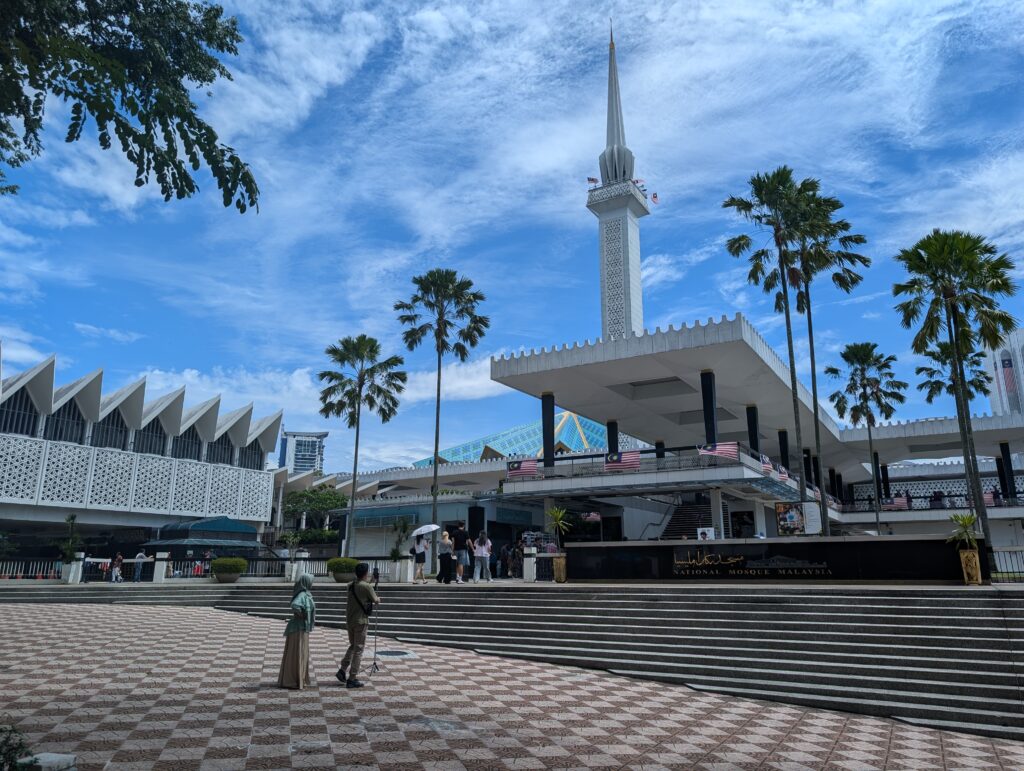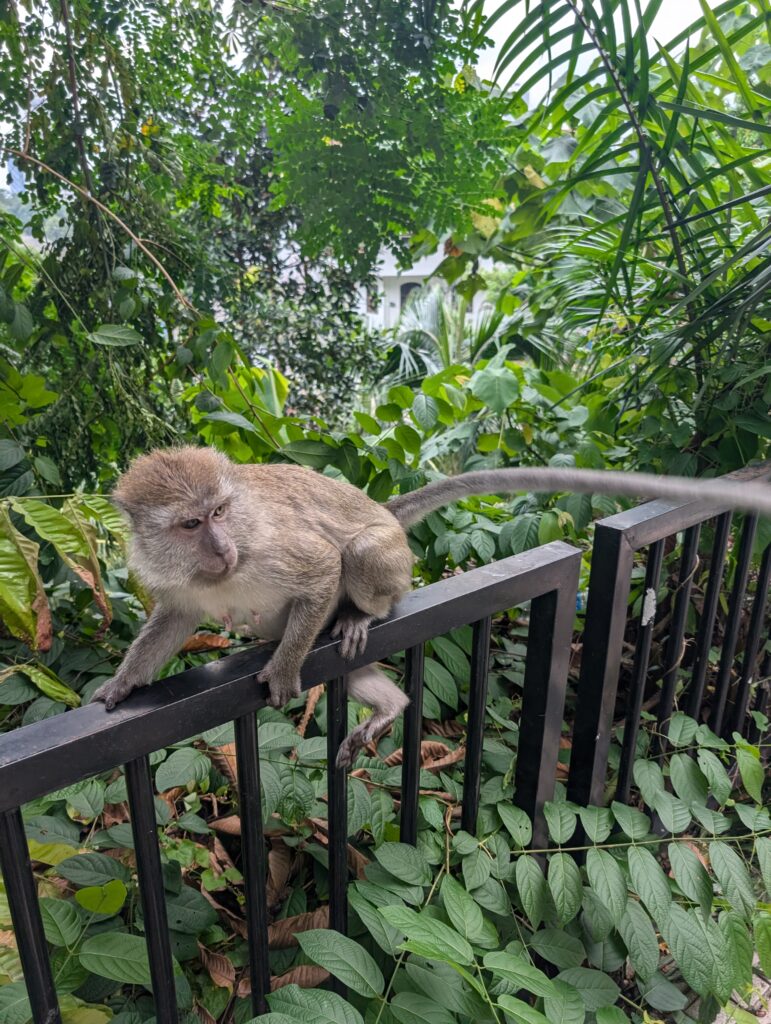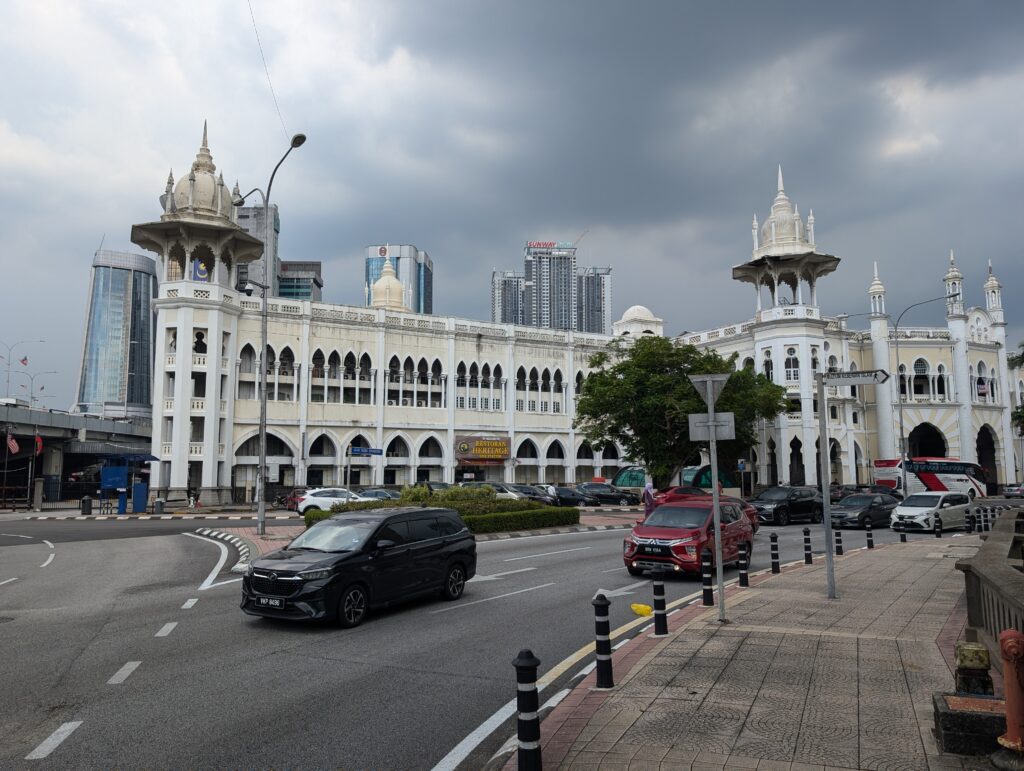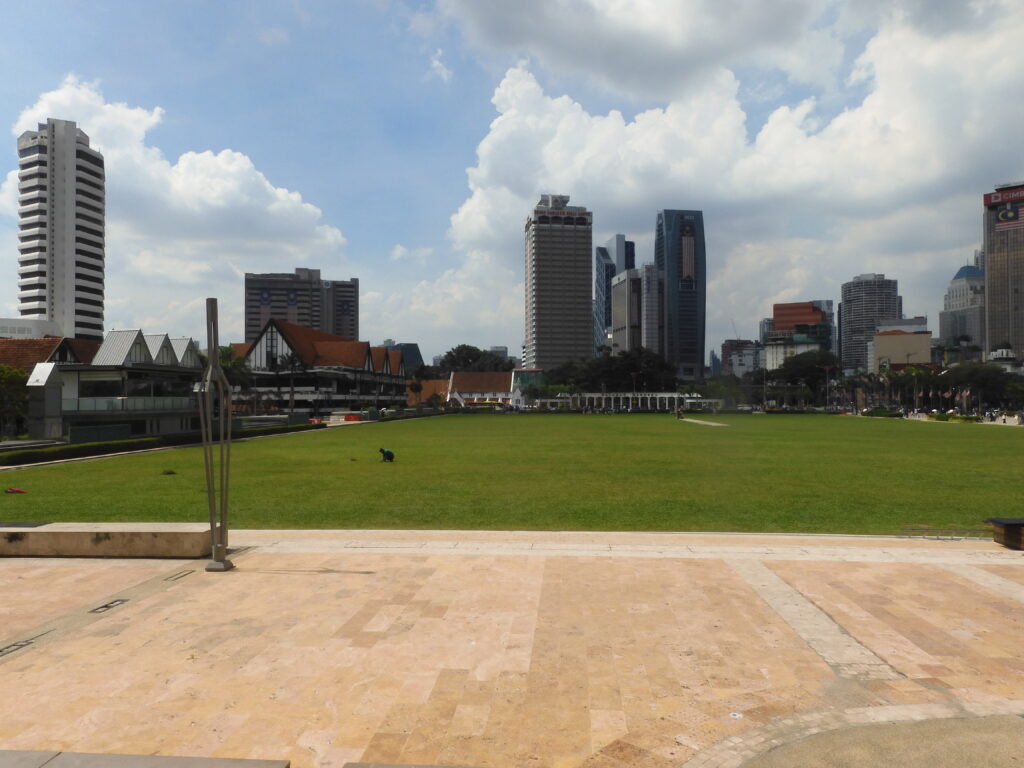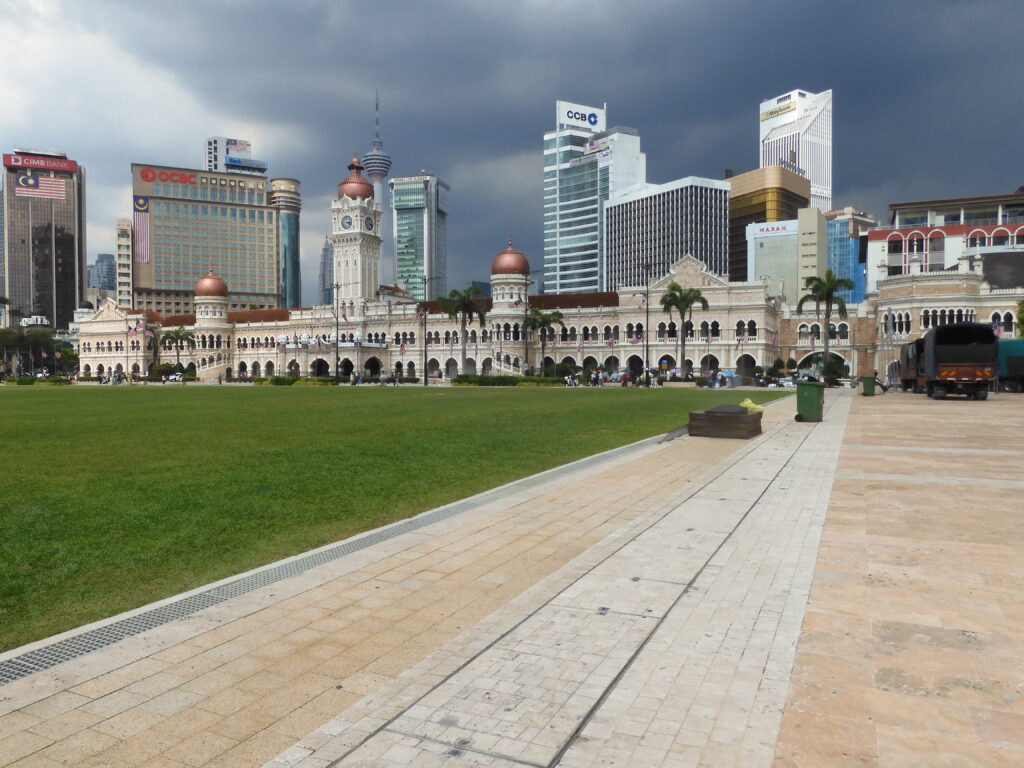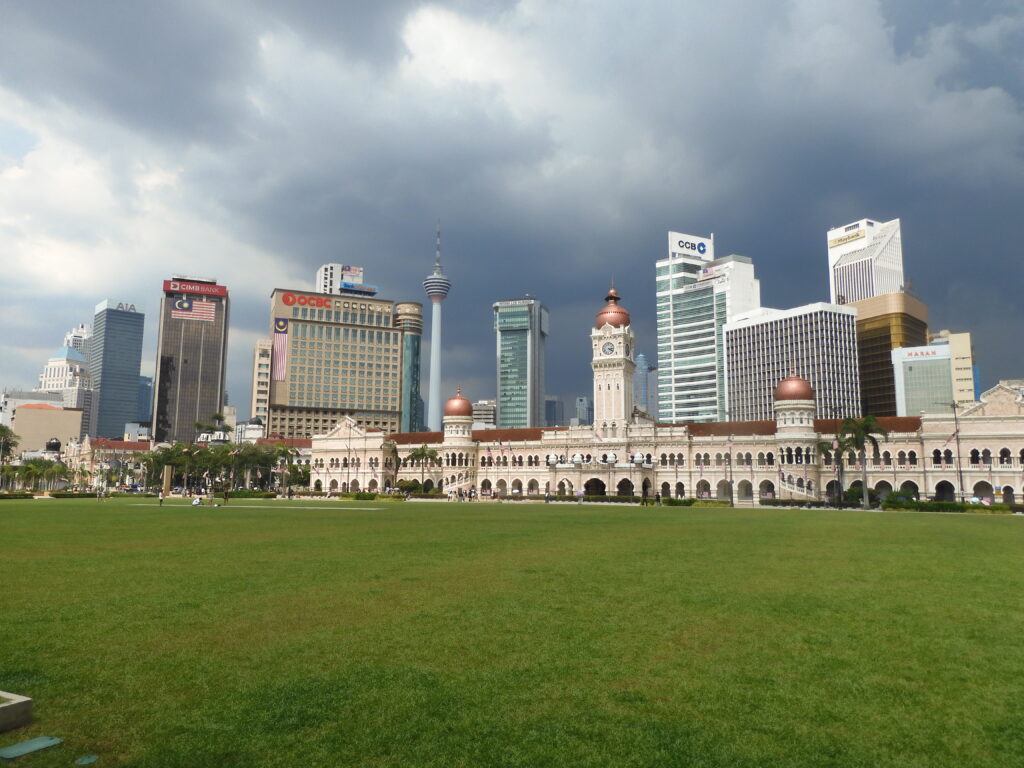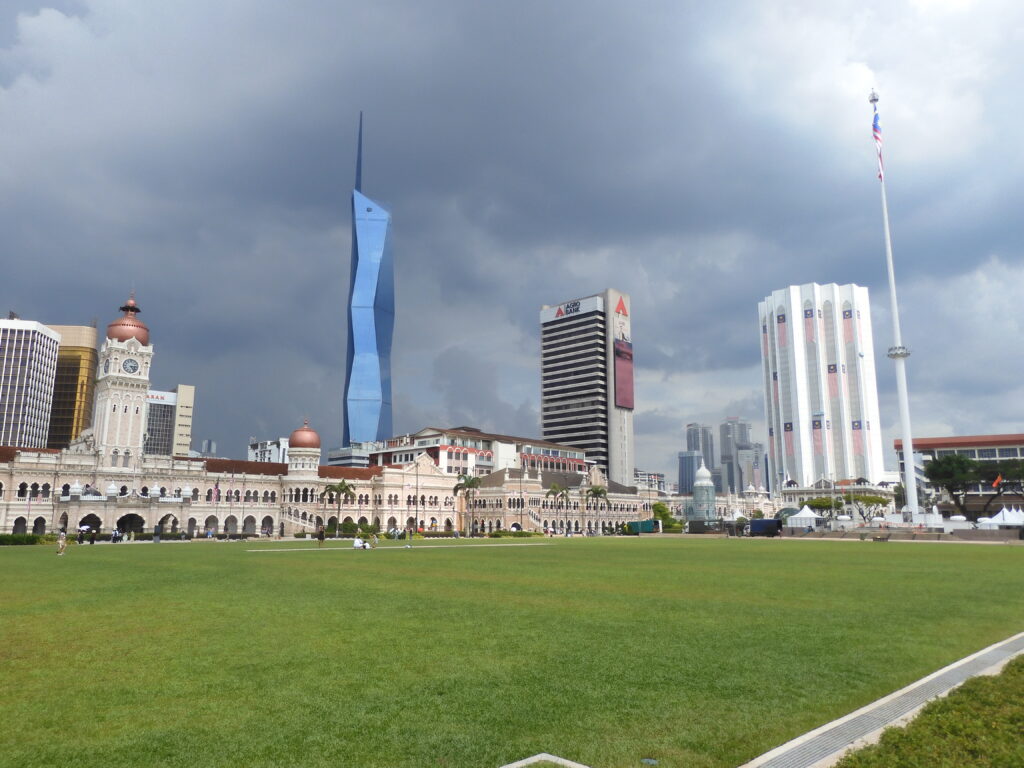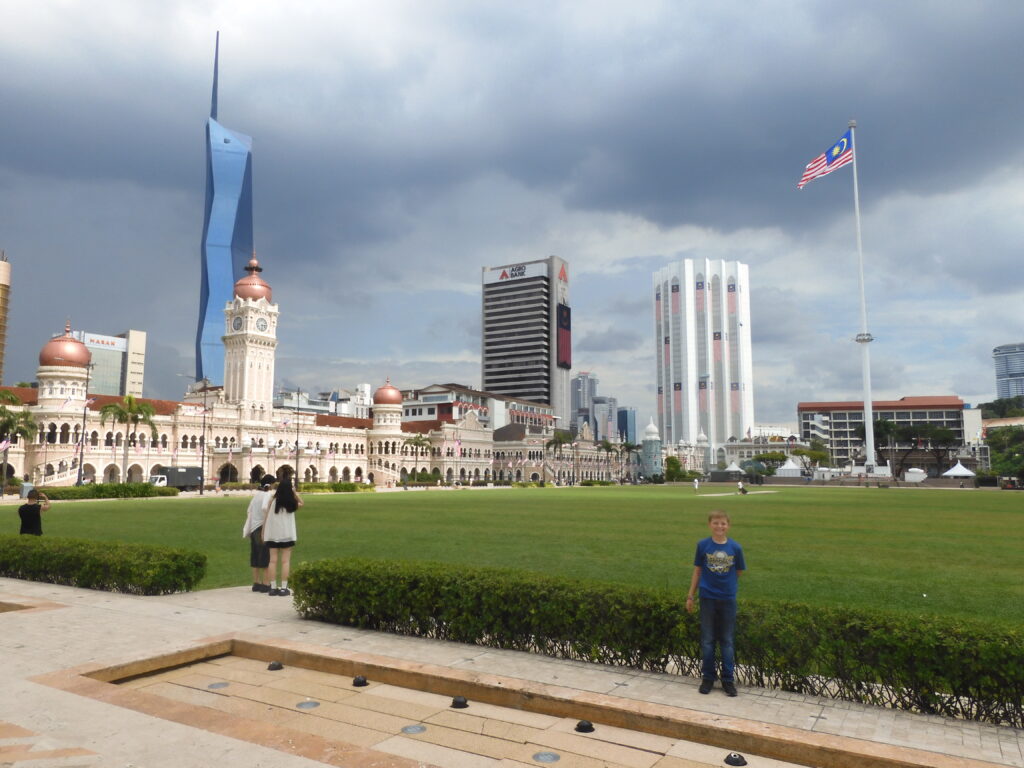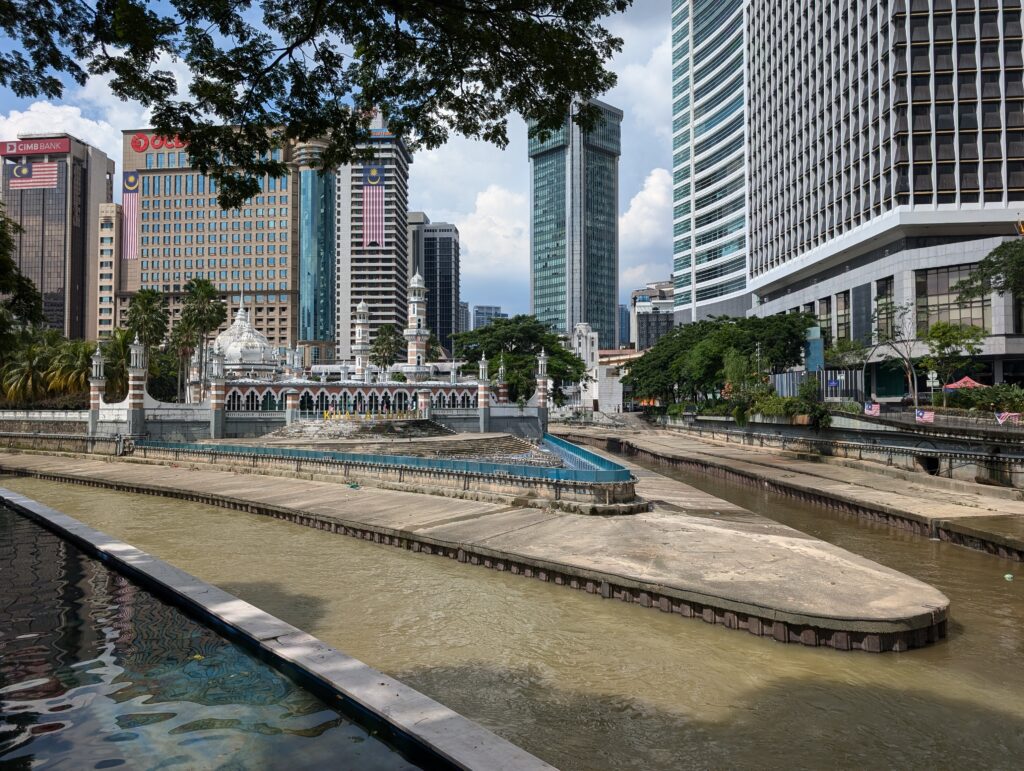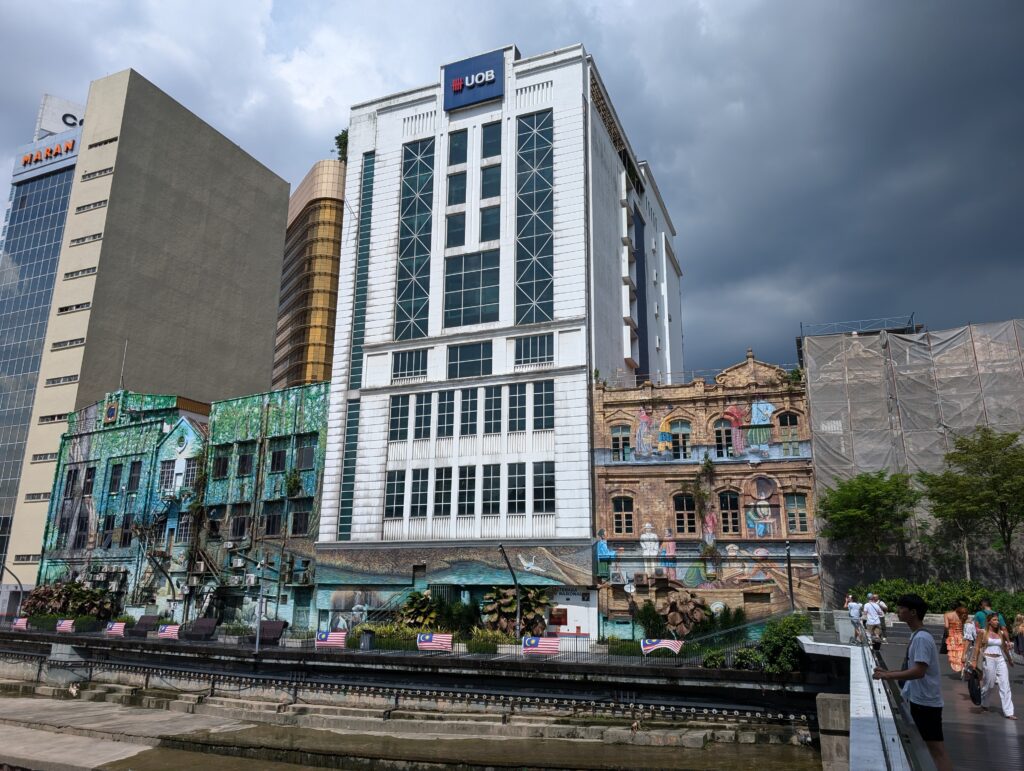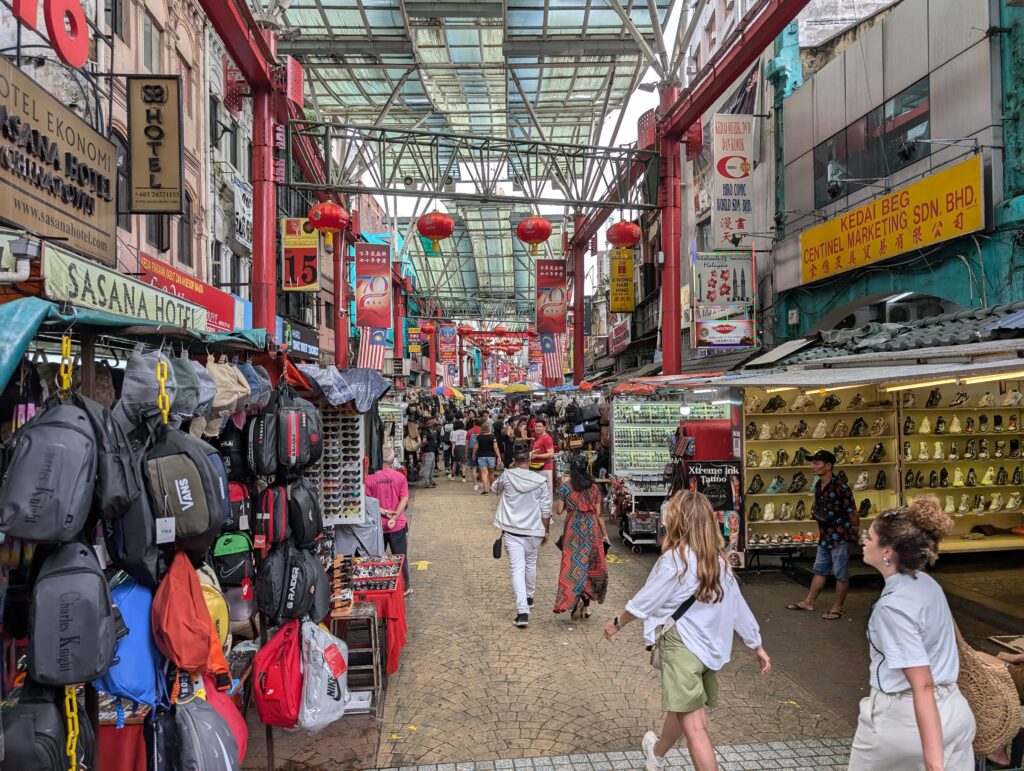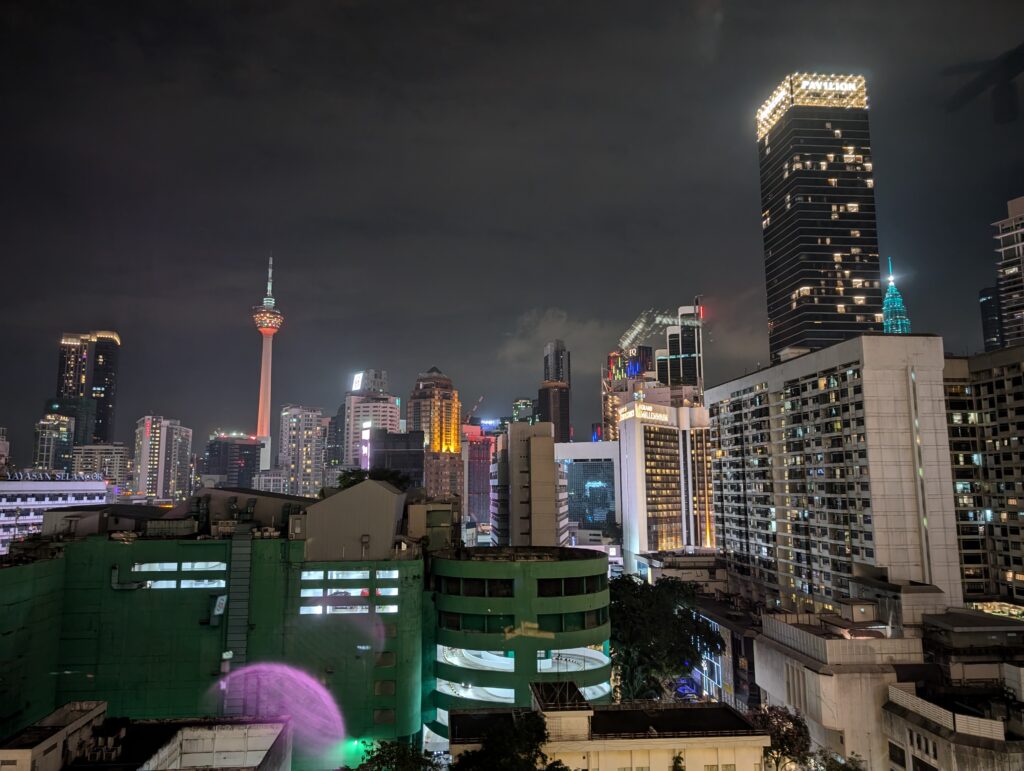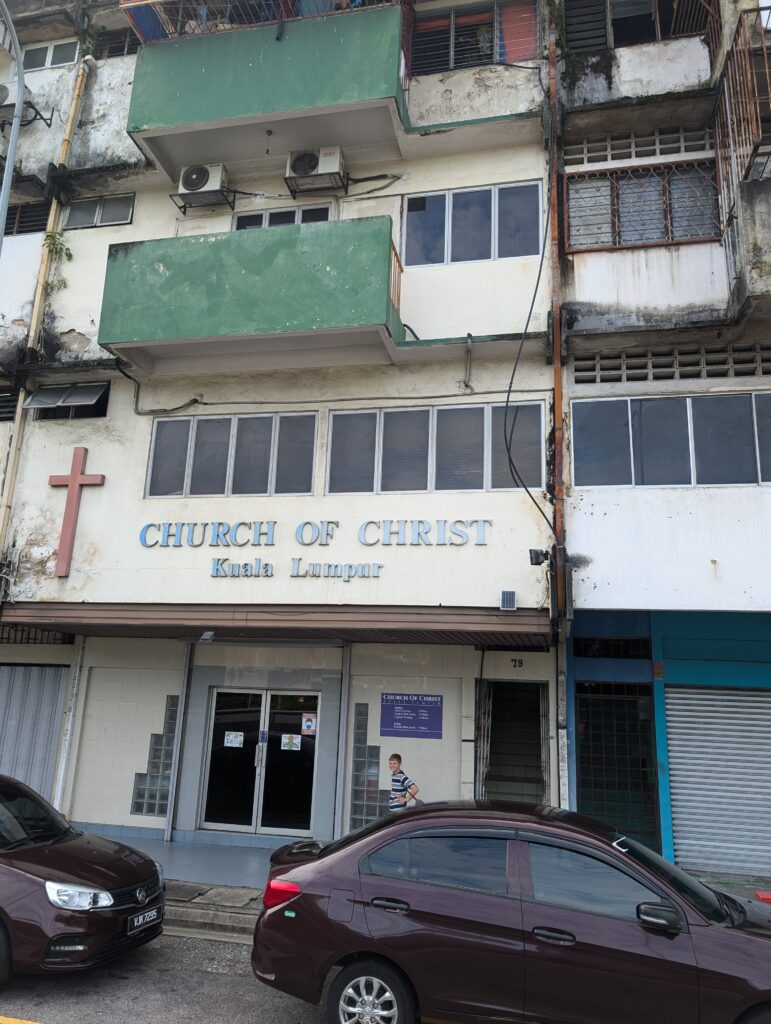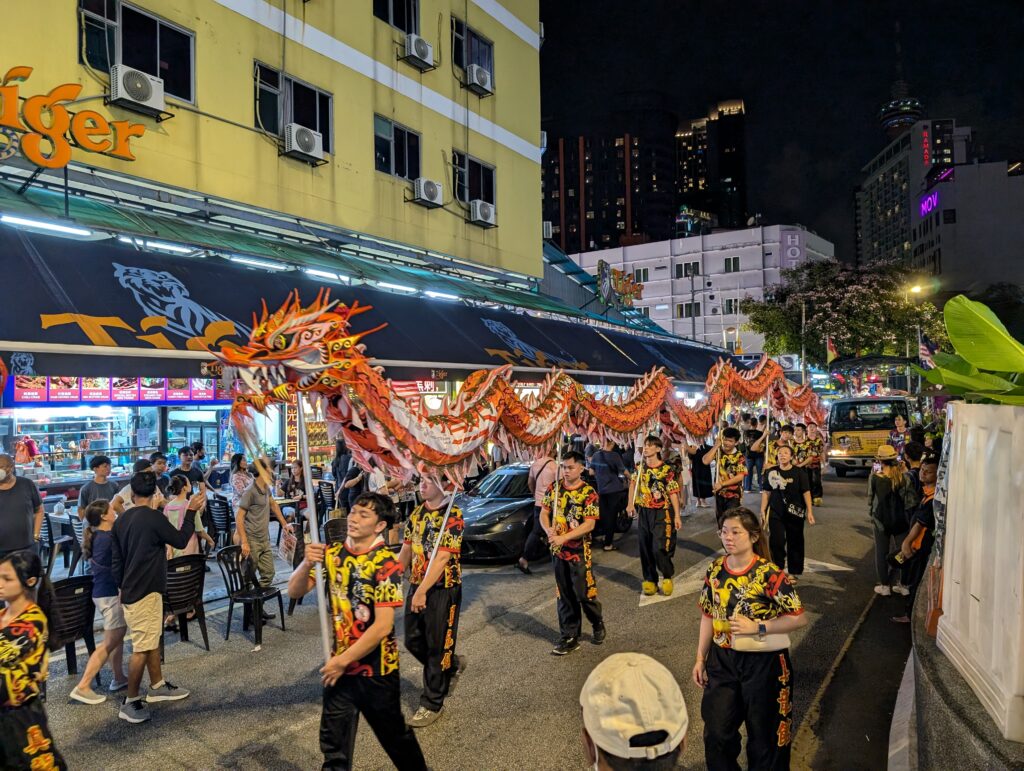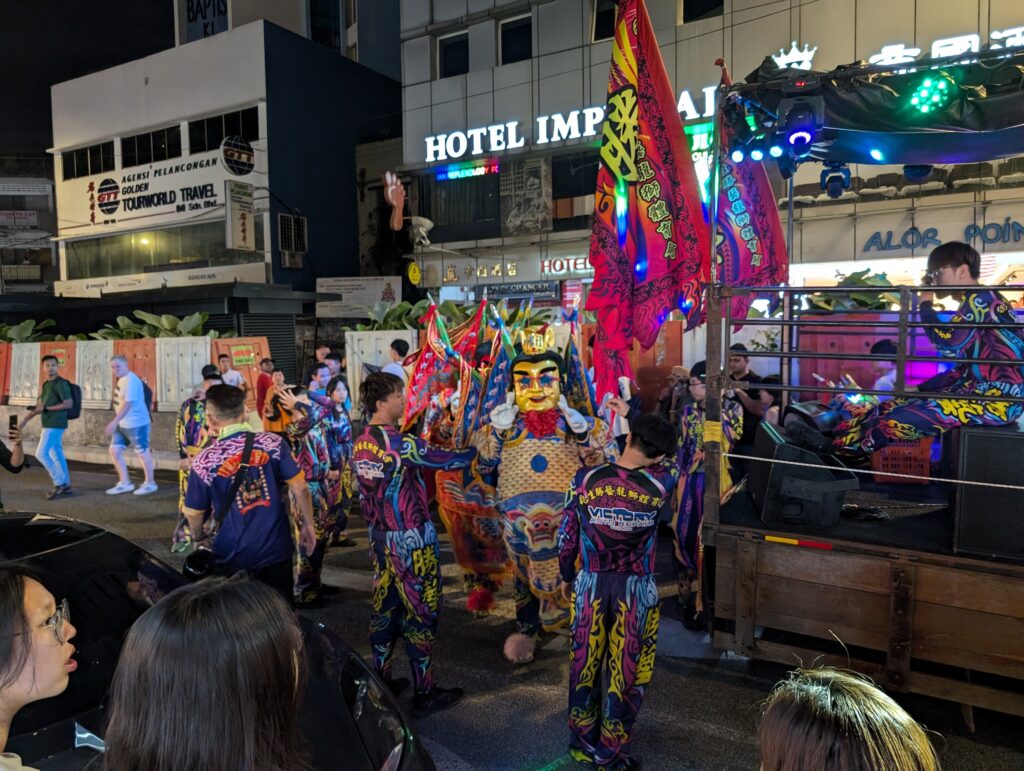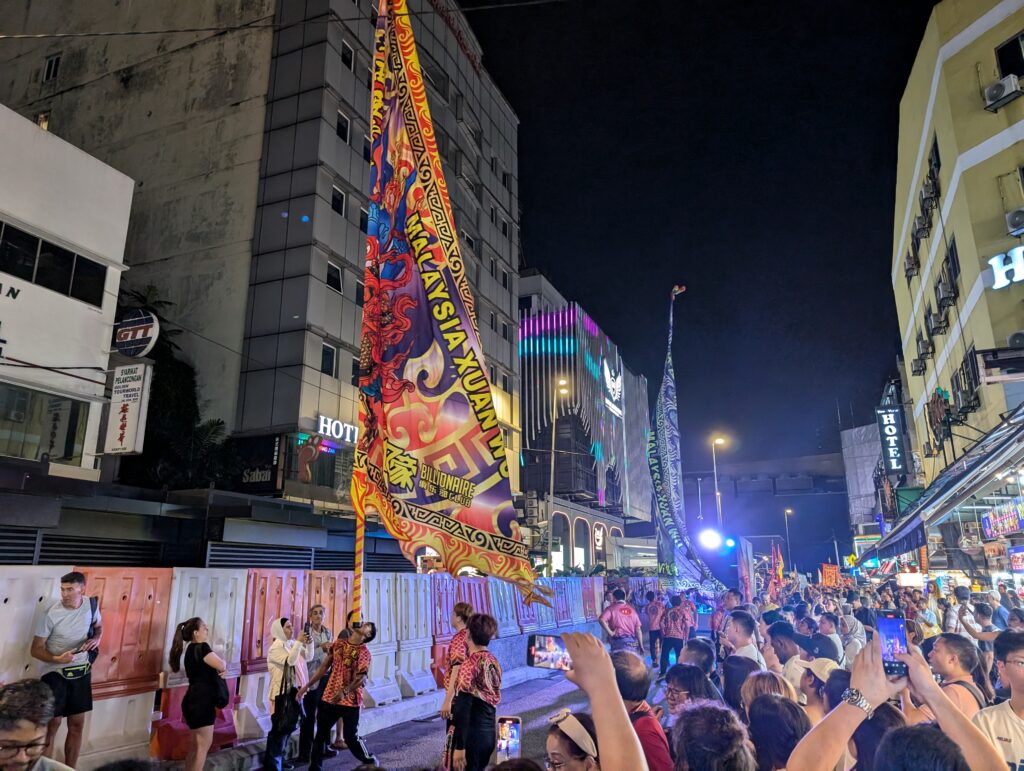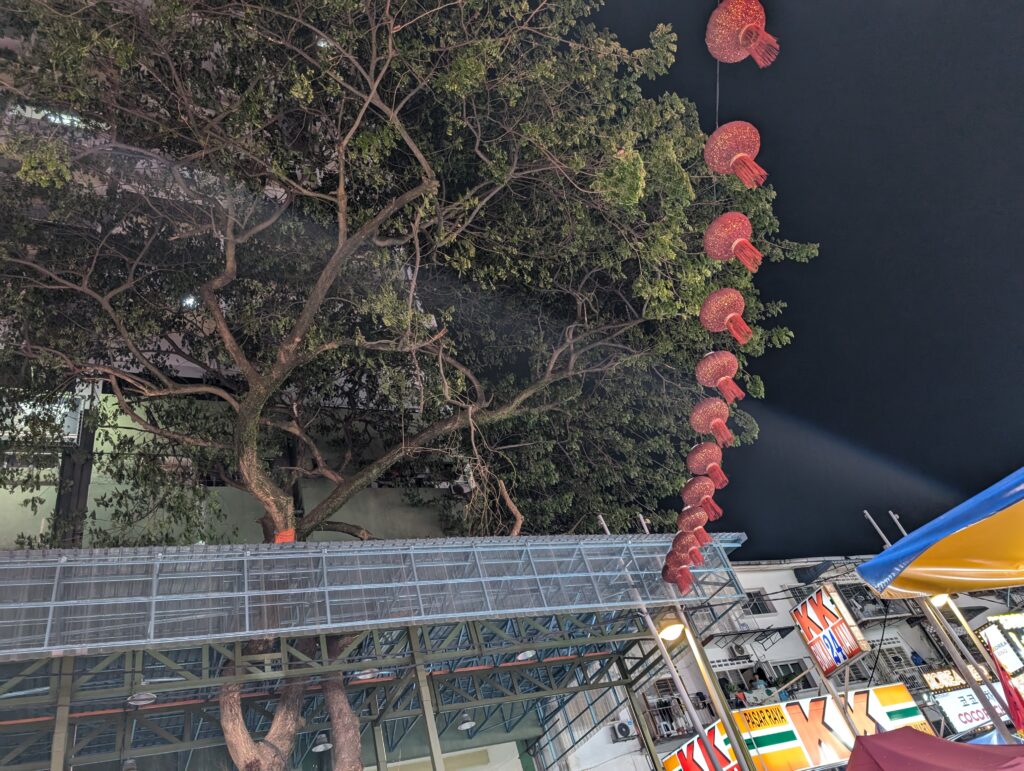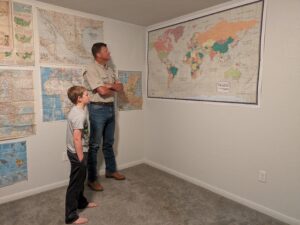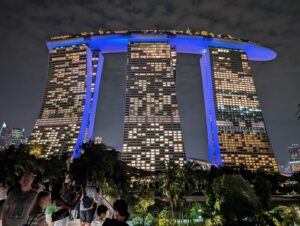Malaysia
Tropics, Highlands, & Cities
I was shocked by the beauty and geographic diversity of Malaysia. Malaysia is composed of two major sections: one landmass on the Malay Peninsula, and another on the island of Borneo, which Malaysia shares with Indonesia and Brunei. We visited only peninsular Malaysia. Malaysia is an equatorial, tropical country for sure, but it has rock bluffs and towering mountains. In some ways, it reminded me of Costa Rica. Certainly there are many differences, but like Costa Rica, Malaysia’s rapid elevation changes create multiple climate zones in a relatively small area. Also like Costa Rica, Malaysia’s low latitude and nearness to the sea create a climate without the seasons we are used to in the middle latitudes. They tend to have a rainy season, and a less rainy season, as opposed to a Spring, Summer, Fall, and Winter. It is nearly always hot and humid in the lowlands, it’s just a matter of how hot and how humid. As in Costa Rica, the highlands are cool enough that rooms don’t even need air conditioners. Afternoon highs during our stay in the Cameron Highlands never reached 80F.
Some things about Malaysia are starkly different than Costa Rica. Malaysia is a Muslim majority country. That’s not something you’ll find in Central America. It was not an extremely conservative religious environment, however. Nowhere were we asked to modify our dress, and we were only asked to remove shoes when directly entering religious facilities. As in the Emirates, there was a special women only metro car. I could hear Muslim prayers over speakers at the designated times. One morning as I ran before dawn in Tanah Rata, I heard something faint in the distance that resembled hymns. As I came nearer, it became clear that this was the Muslim morning prayer chant being played over speakers. It was a pretty sound, and I came to enjoy hearing it.
Another unique aspect of visiting Malaysia – certainly a difference from Costa Rica – is its diversity of ethnic influences. It is more apparent in the cities, but it is everywhere if you look. There are significant Chinese, Indian, and Pakistani influences resulting from migration, commerce, and tourism. Most cities have not only a Chinatown, but also a Little India. Nearly every place we visited had Pakistani restaurants as well. I found this particularly amusing, due to my familiarity with the old Seinfeld program. In one episode, Jerry befriended a local restaurateur named Apu. Apu was a Pakistani who kept trying to open a restaurant featuring other, different ethnic foods. Jerry convinced him that since he was Pakistani, it made more sense to open a Pakistani restaurant. In the show, it turned out that Pakistani food in general was just terrible. A combination of this, and some other Jerry and Elaine antics inadvertently resulted in Apu being deported to Pakistan. That all made for a funny story line, but in reality, I found Pakistani food to be delicious. Between that, and the amazingly friendly people we met from Pakistan and their descriptions of the places to visit there, Pakistan has been added to my future travel plans.
In Malaysia, we spent one night in Ipoh before catching a morning bus for Tanah Rata in the Cameron Highlands. We arrived in Ipoh well after dark, and I walked around the corner to a very busy Pakistani food joint. I could tell it would be cheap and good. Why else would an open air eatery in Ipoh be so busy at 10:00 p.m.? I had a huge rice dish with lamb, some kind of potato and chicken fritter, and a two liter water for RM 8.50 (that’s less than $2)! After a long, winding ascent to Tanah Rata the next day, Caleb and I went out on the town and tried the Steamboat, a local specialty. They bring you some kind of base soup – in our case it was either Tom Yam or Chicken Soup – which is heated up in front of you by a burner in the middle of your table. Then, out come numerous other soup items. We were offered fish, prawns, tofu, mushrooms, onions, beef, spinach, other greens, scallops, fish, rice noodles, pasta noodles, chicken, and a raw egg. You throw any or all of these ingredients into your own soup, as you see fit, and then wait until you think it’s been cooked long enough. This was pretty good! If you run out of soup, or any other ingredients, out come some more. We had fun with this. As a soup lover, Caleb could not get enough of it.
(Continued)
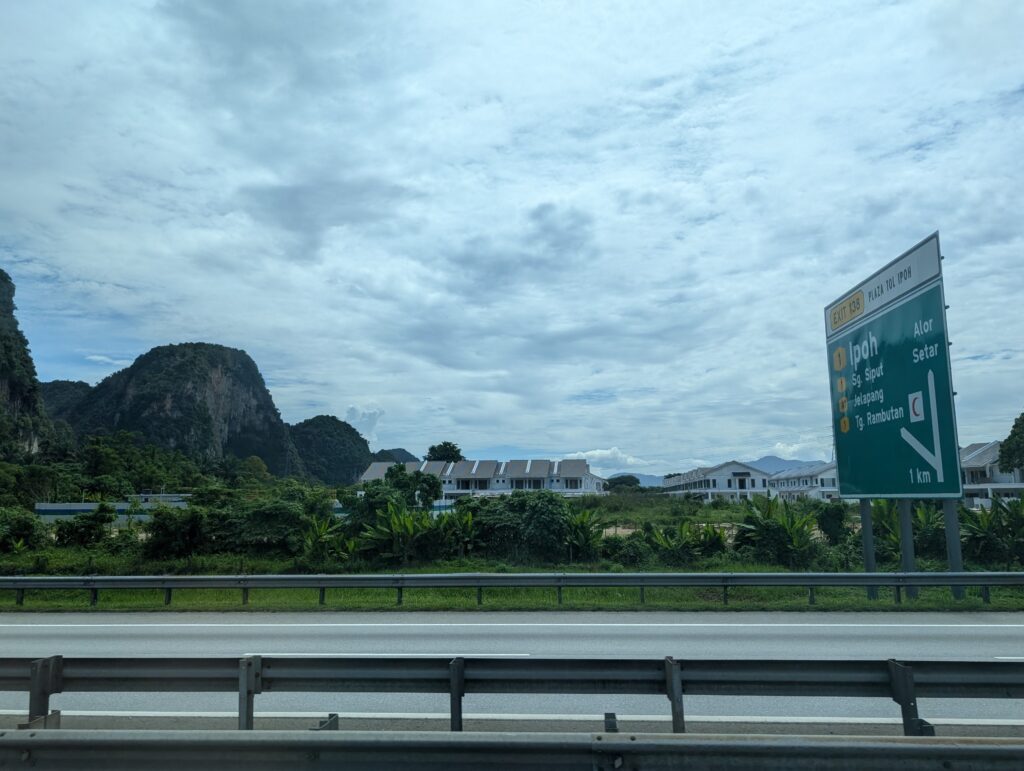
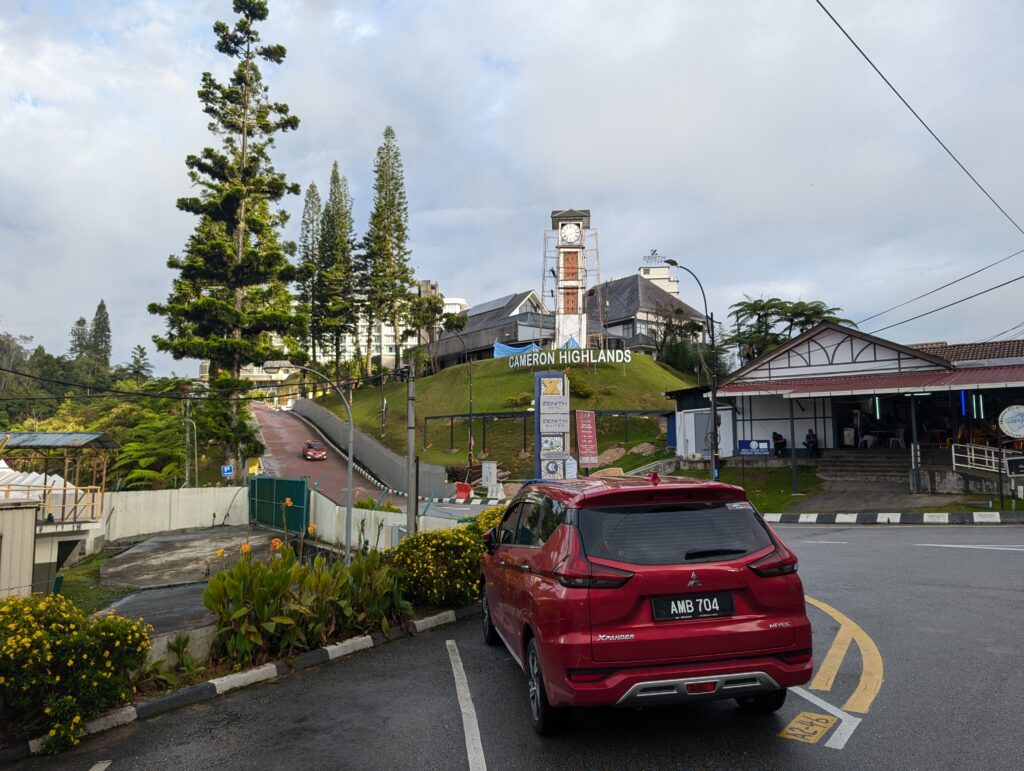

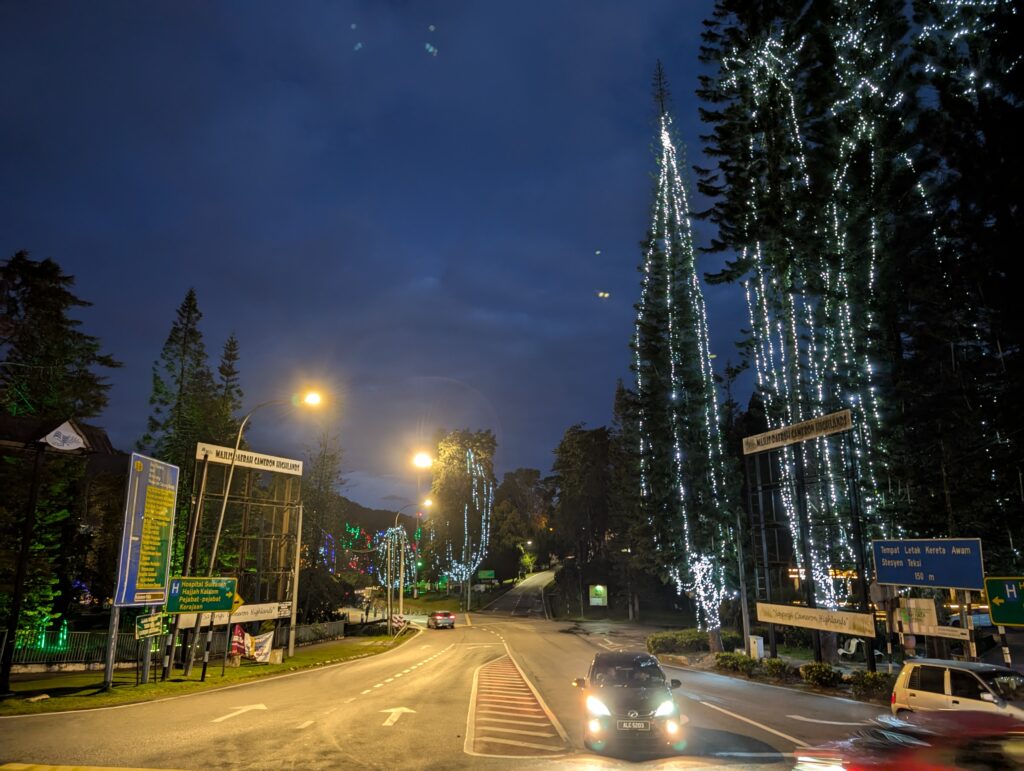
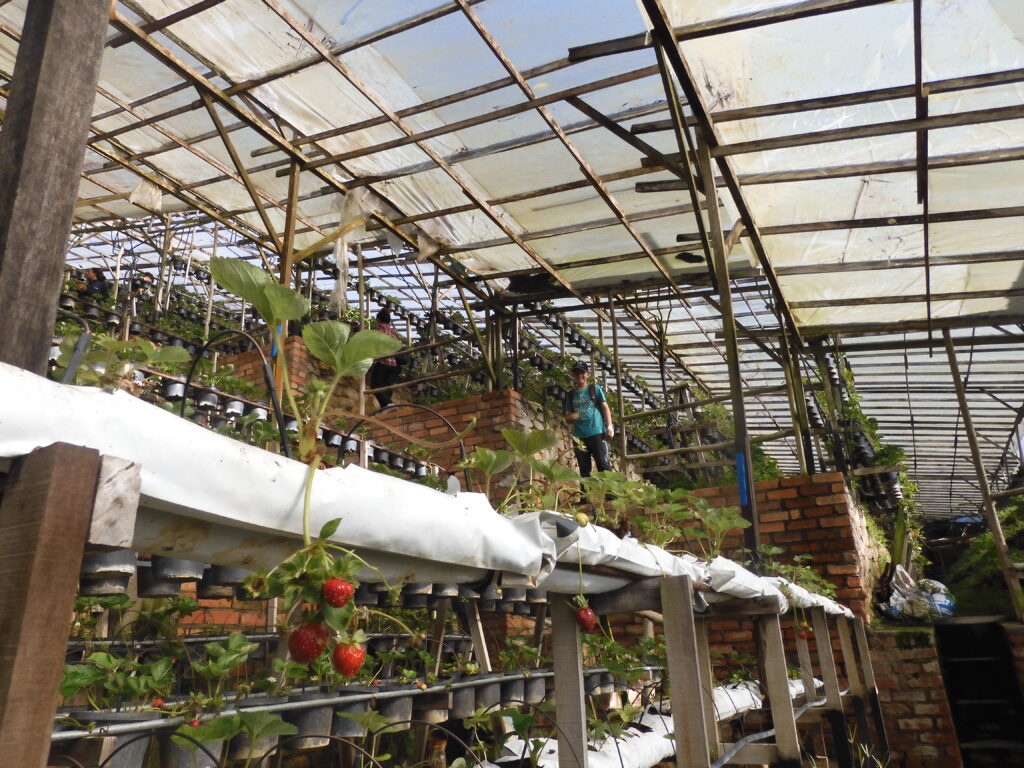
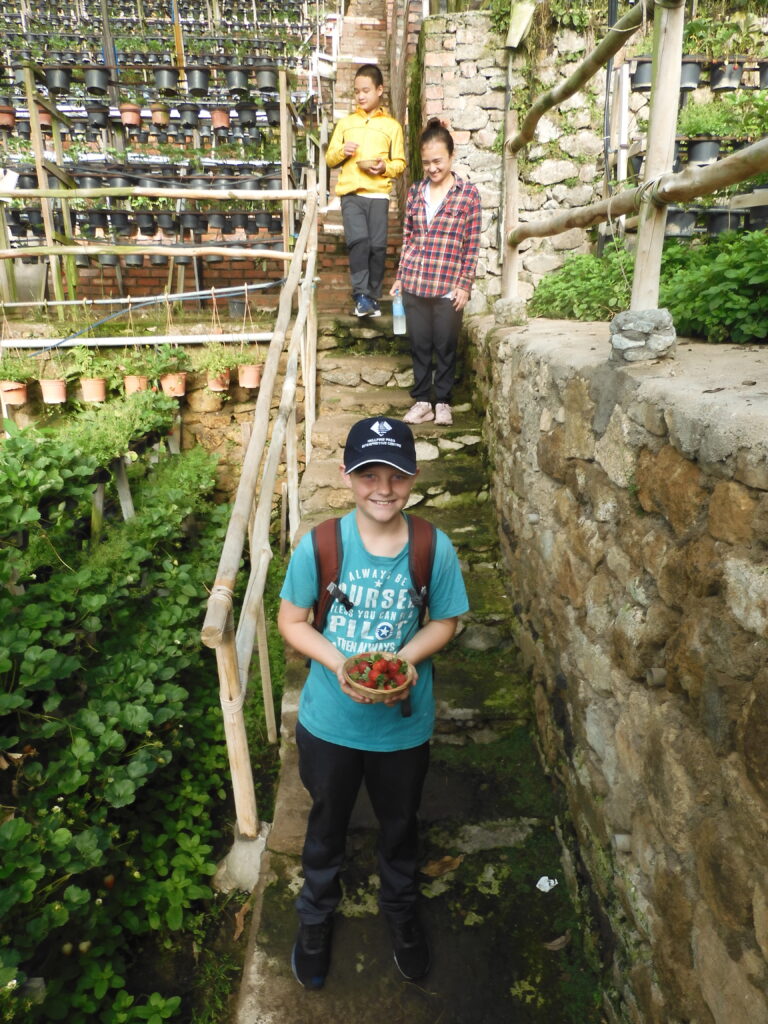
If you have read many of my travel accounts, you know that we tend to avoid organized tours. Most of the things tourists come to the highlands to see, however, are not accessible via public transportation. I could have rented a car, but it seemed easier just to join a tour that hit the highlights. This would serve as a de facto taxi, even if the tour wasn’t great. And really, that’s about all the tour provided – a ride from one place to the next. Beyond that, several of the places we visited were merely opportunities to shop for tourist kitsch. We did get to see what we came to see, though, and we did so in time efficientfashion.
Our first stop was a you-pick strawberry farm. The steep hills were covered with irrigation systems and a large protected area for above ground potted strawberry plants. Our tour guide made a lot out of this special procedure making the strawberries sweeter. It was interesting, and we enjoyed visiting with the other tourists while we picked a few (which we paid extra for if we kept). I could not tell a noticeable difference between these and other tasty strawberries I knew from the U.S. It was a pleasant stop anyway.
Next, we visited the BOH (Best of Highlands) tea facility. BOH is a century old tea operation founded by British investor J.A. Russell. They specialize in black tea, but also make some green. On 1,200 hectares of land, they produce about 4 million kg of tea per year. This amounts to 70% of Malaysian tea production. The gorgeous post card views of the Cameron Highlands all feature tea plantations spread out over rapidly rising and falling terrain. We took some photos of our own, and Caleb was able to sample some of the tea. The tea factory itself offered a free 10 minute tour that explained how tea was dried and prepared. That covered the basics. Another hour was provided for gazing at the deep greens of the hill sides and for making purchases in the gift shop.
Caleb visited with his new friend Daniel while we waited for our Land Rover to haul us up to the Mossy Forest. This national park area was a little too muddy to hike much when we were there, not that Caleb would have wanted to do that anyway. We drove up to the higher points, and then walked to a couple of lookouts. Distant views were obscured by clouds, but we were able to observe most of the flora. We got a briefing about edible and useful plants of the highlands, and ascended on the of highest points in Malaysia, at over 6,000 feet. The Tiger Balm was the most pungent, be we also sniffed some Mediterranean Cypress and citronella. There was an occasional peek-a-boo look at a more distant ridge. Being totally encapsulated by clouds was a unique sensation in itself.
Back in town, we paid a visit to an apiary and a butterfly farm. The apiary was really just a stroll through a garden that had some bee boxes in it. Of course, we were offered the opportunity to buy some honey. Caleb did buy a bit. The salesman offered us a few samples, which were distinctly different from one another based on the kind of bees that made them and the environment from which the bees were operating. The butterfly farm was more interesting. The butterflies were colorful and different from those we saw in Costa Rica. As in Costa Rica, there were other insects and animals on display. We saw a huge walking stick, some giant beetles, and a few other unique snakes and lizards, but the butterflies were truly the highlight of this stop.
We spent a few minutes each at a flower & cactus market and a more traditional local market. The flowers and cacti were impressive and shockingly colorful, but I didn’t buy any. I did spend a few ringgit on fried goodies in the market and some unique Malaysian fruits. The lady running the produce stand told us they were Malaysian apples, but they did not look the same as the pictures of Malaysian apples I saw later. Some of these fruits were purple like a small eggplant. Others were off white, with a light green tinge. They had the consistency of a kiwifruit. Some of the less flavorful examples tasted to me about like cucumbers at first, which I don’t like. These were apparently not fully ripe, however. After a couple of days, they were much sweeter.
(Continued)
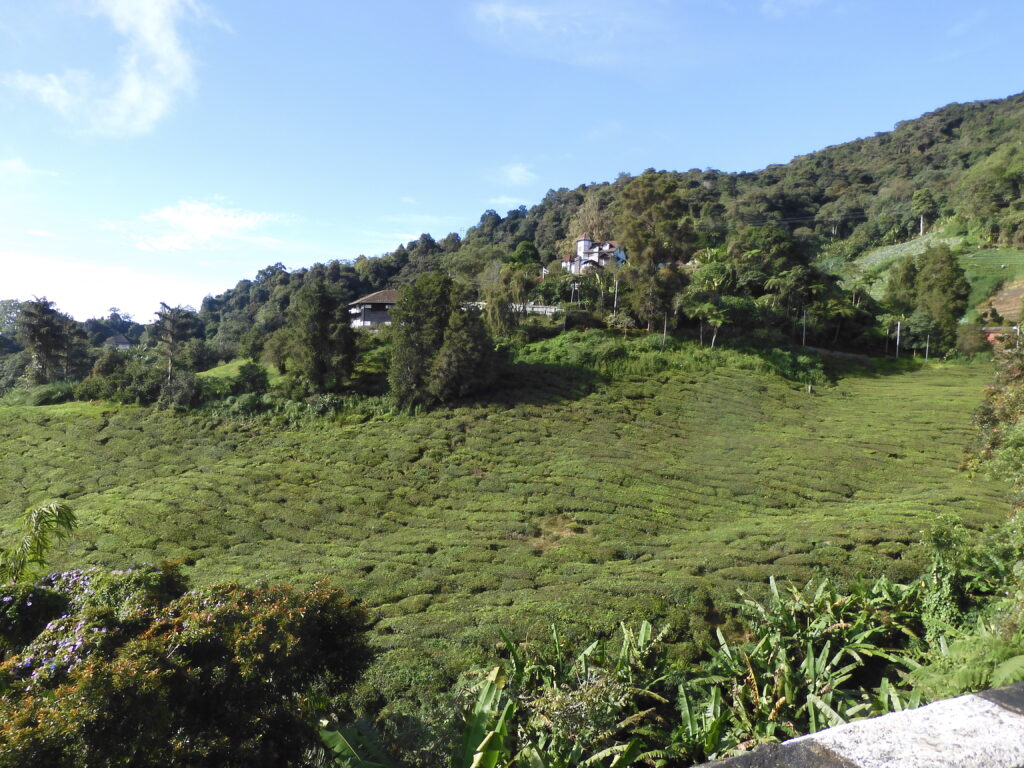


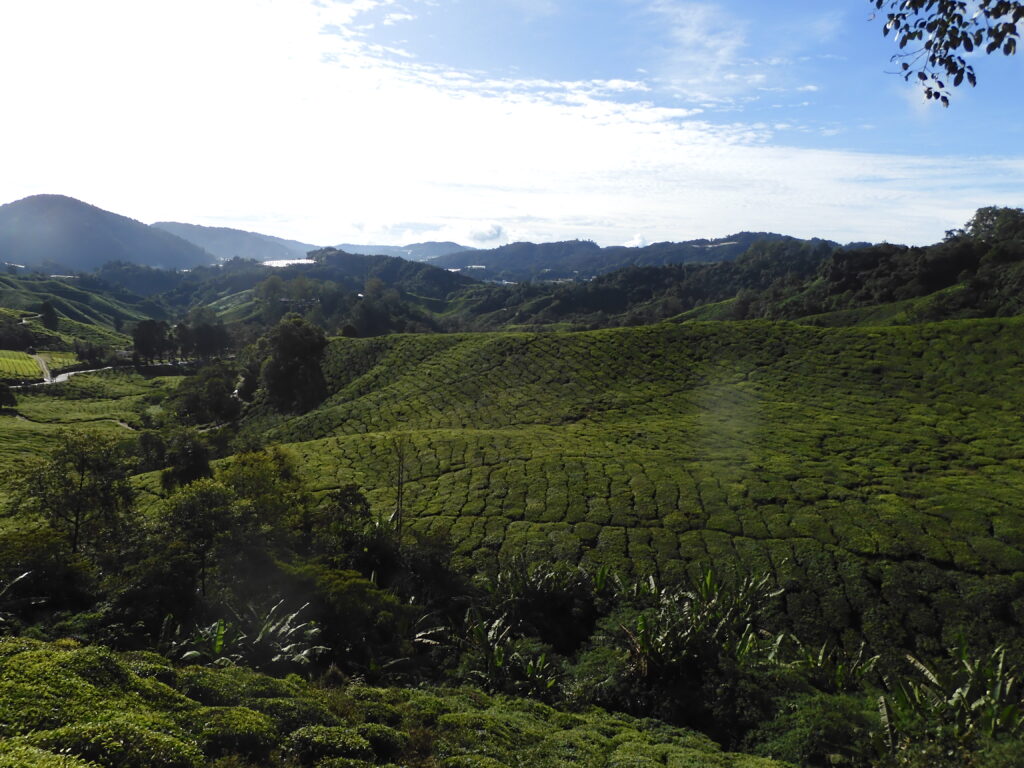
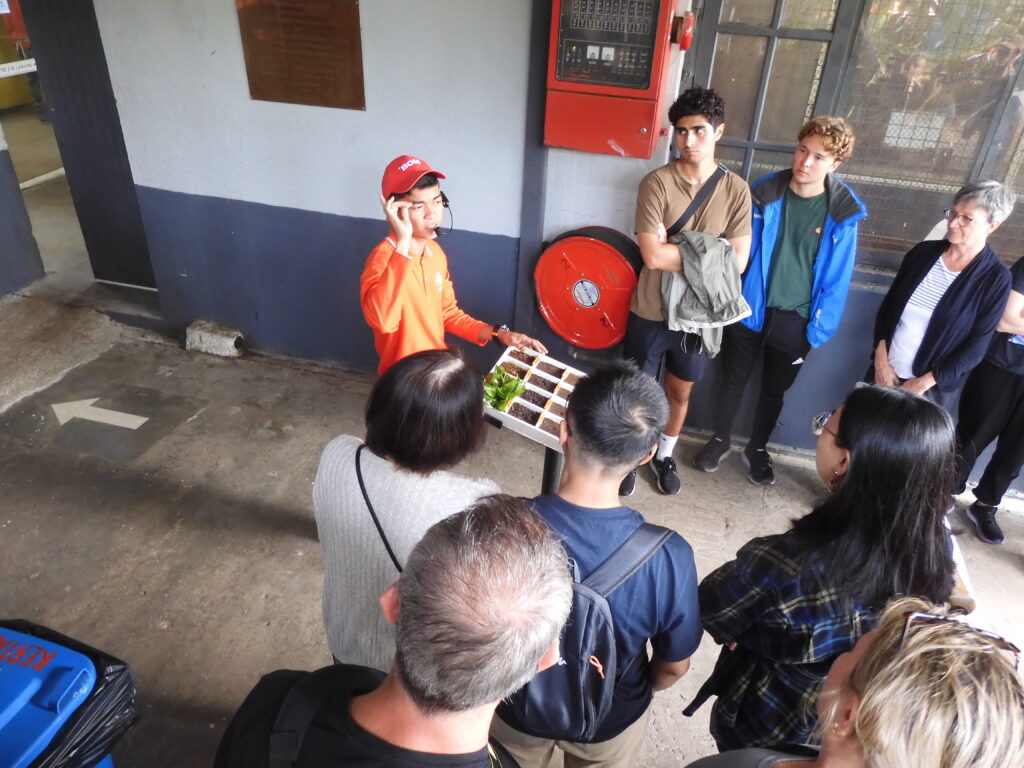
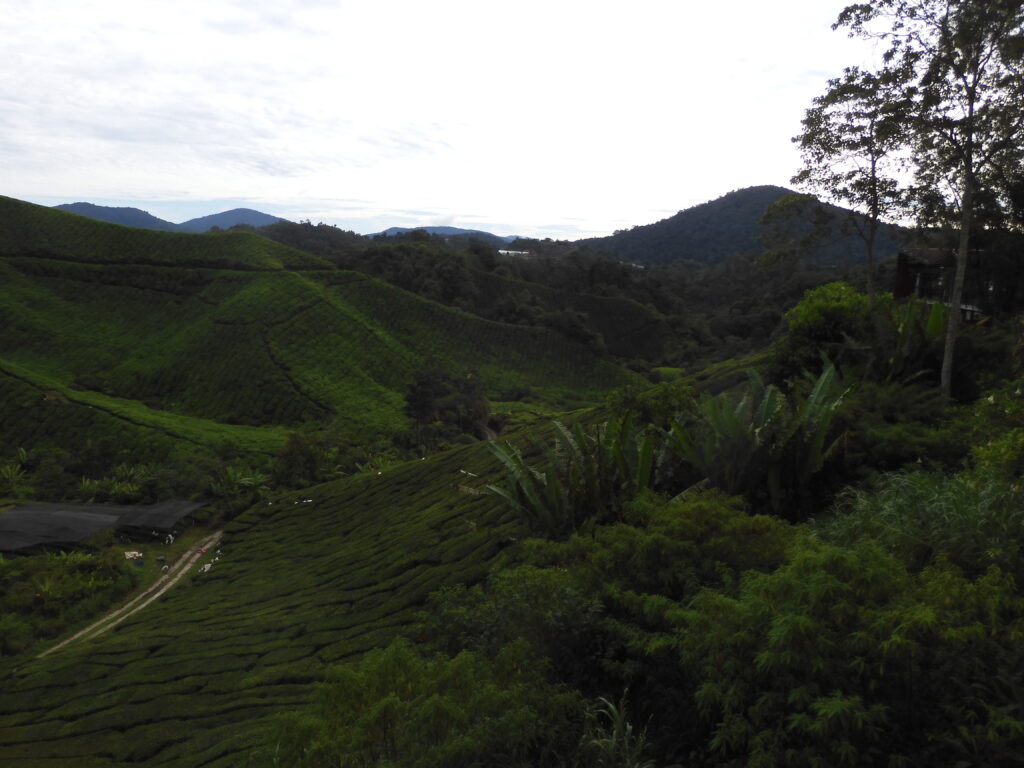
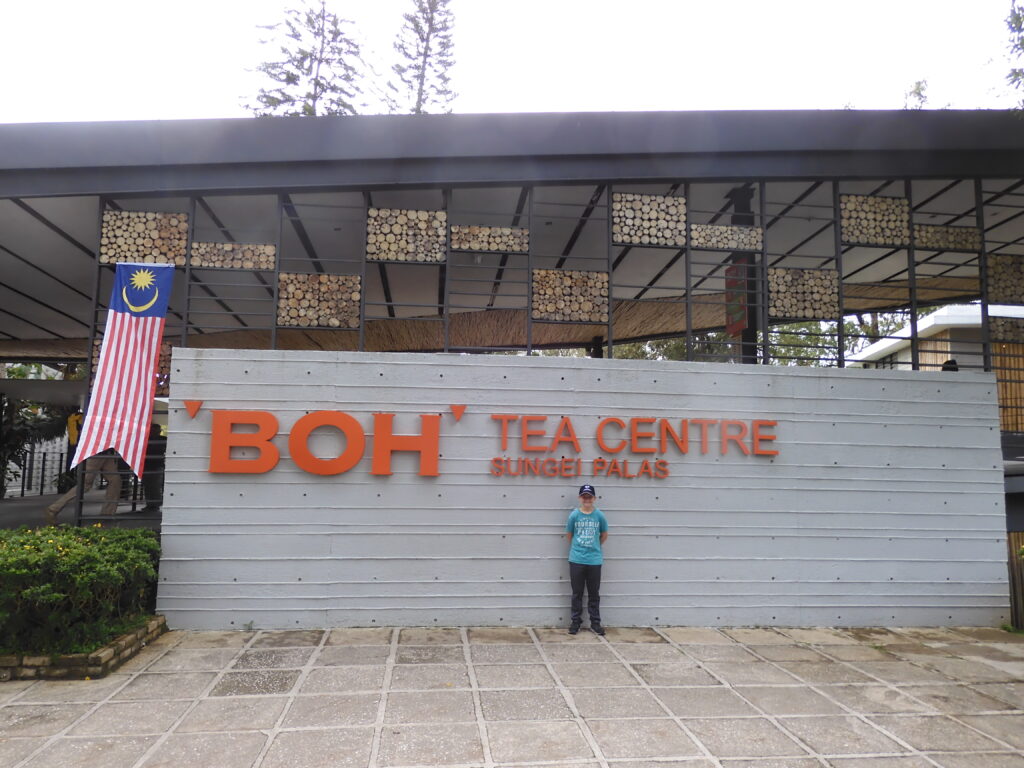
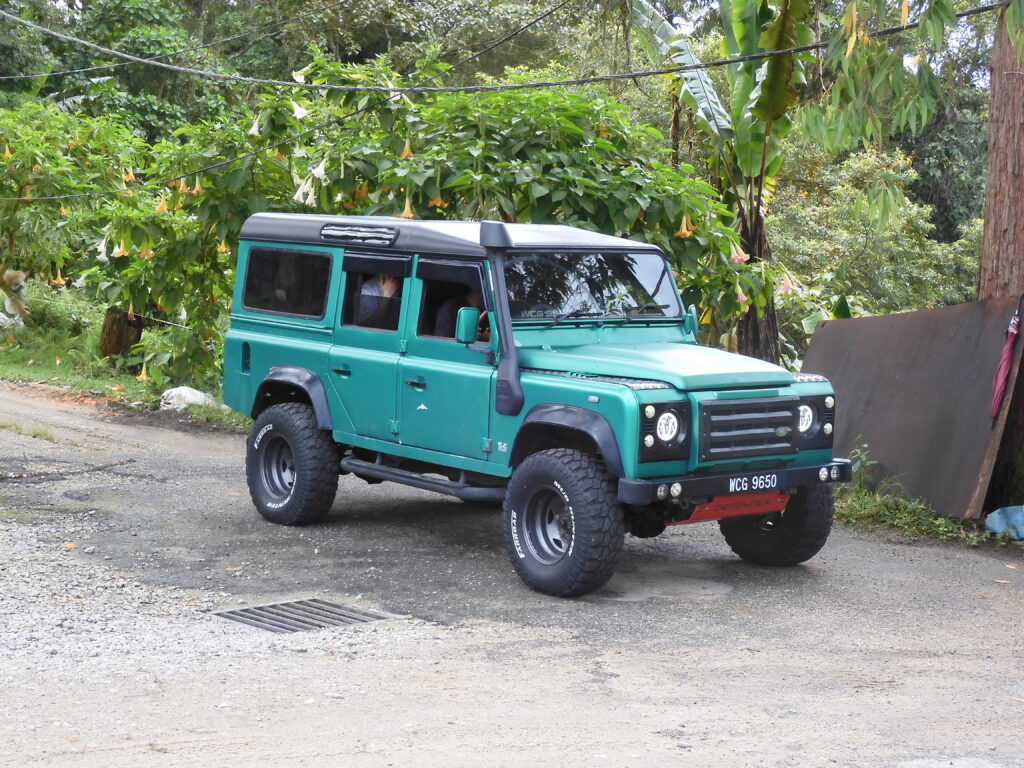
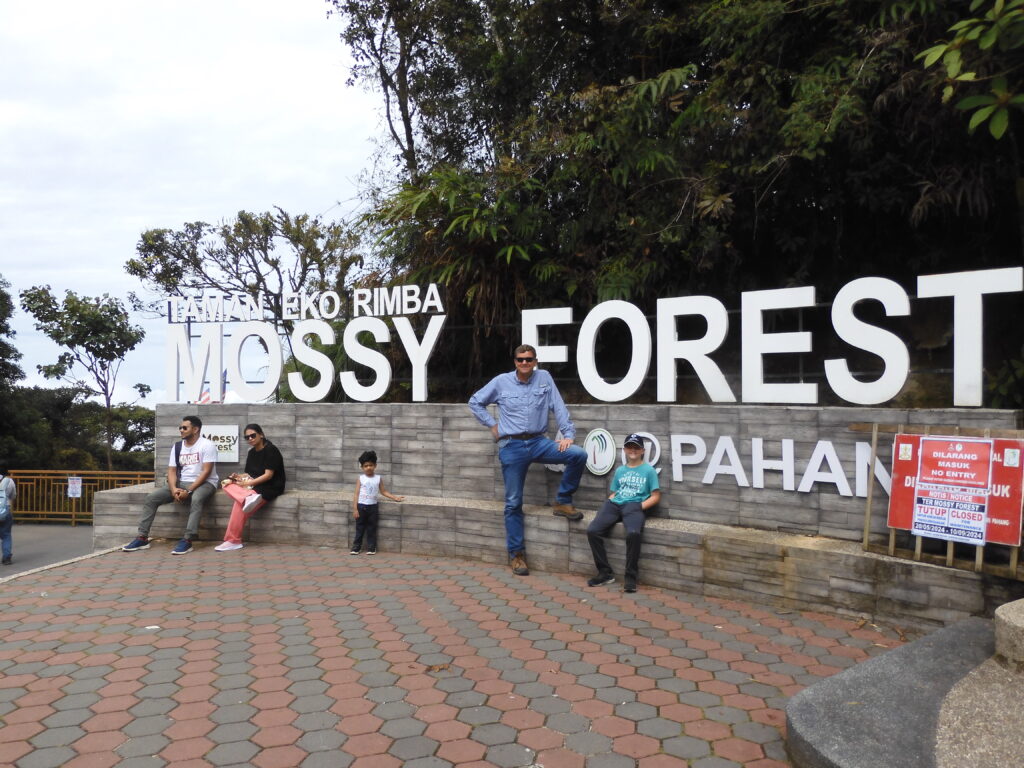

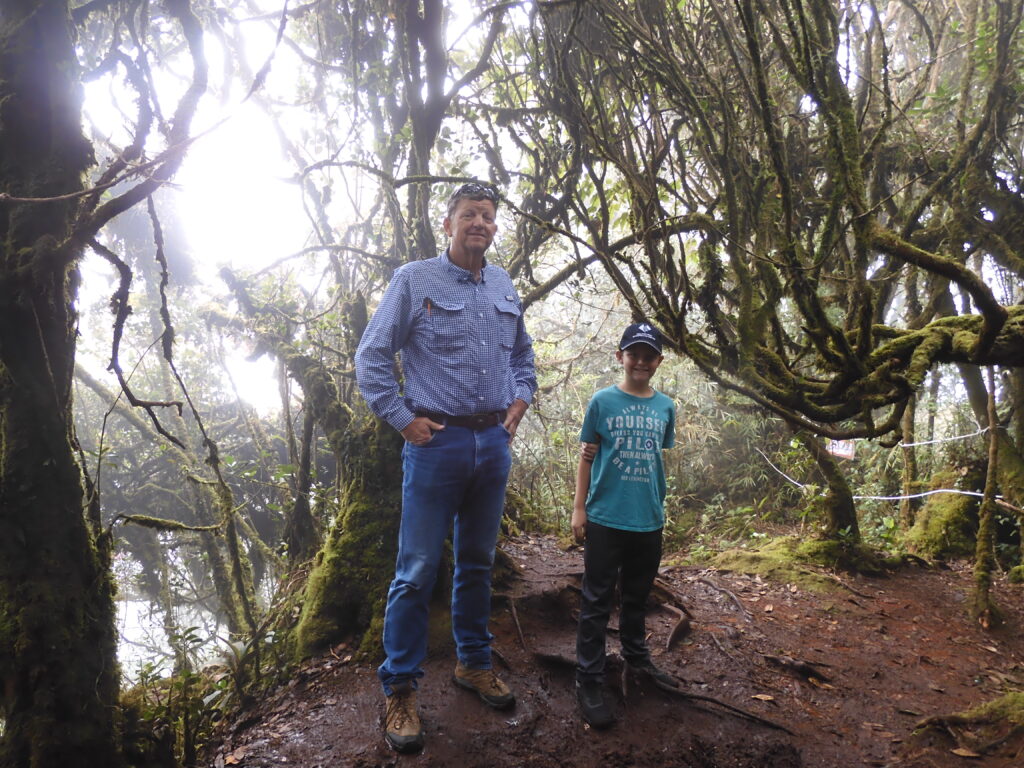

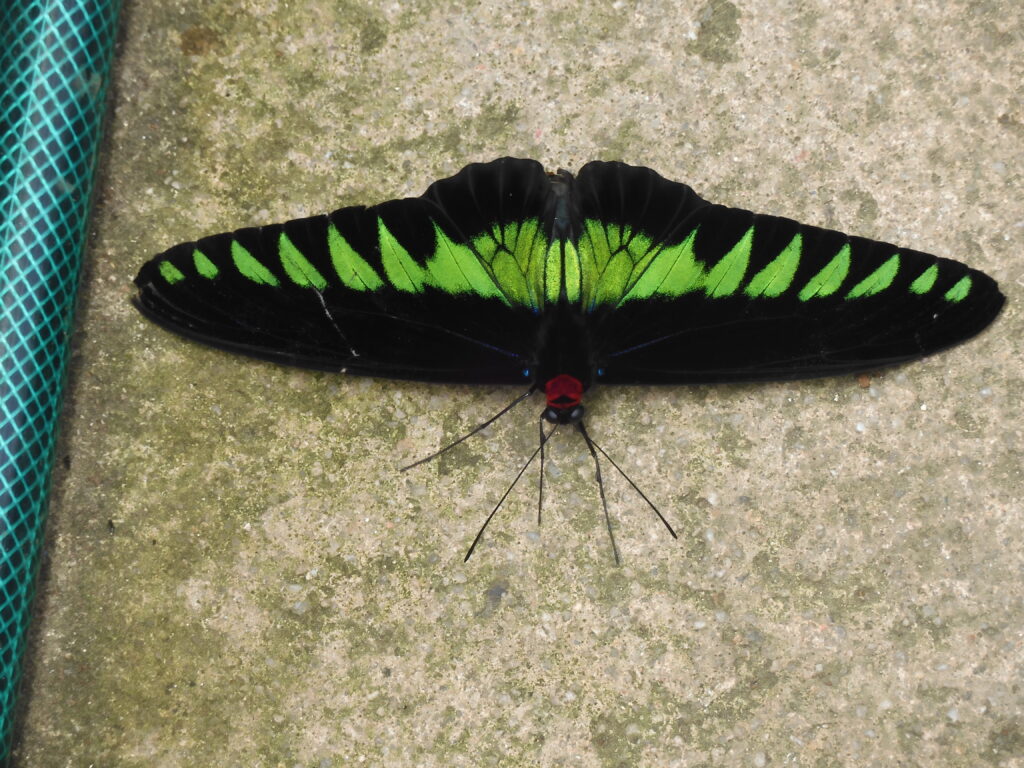
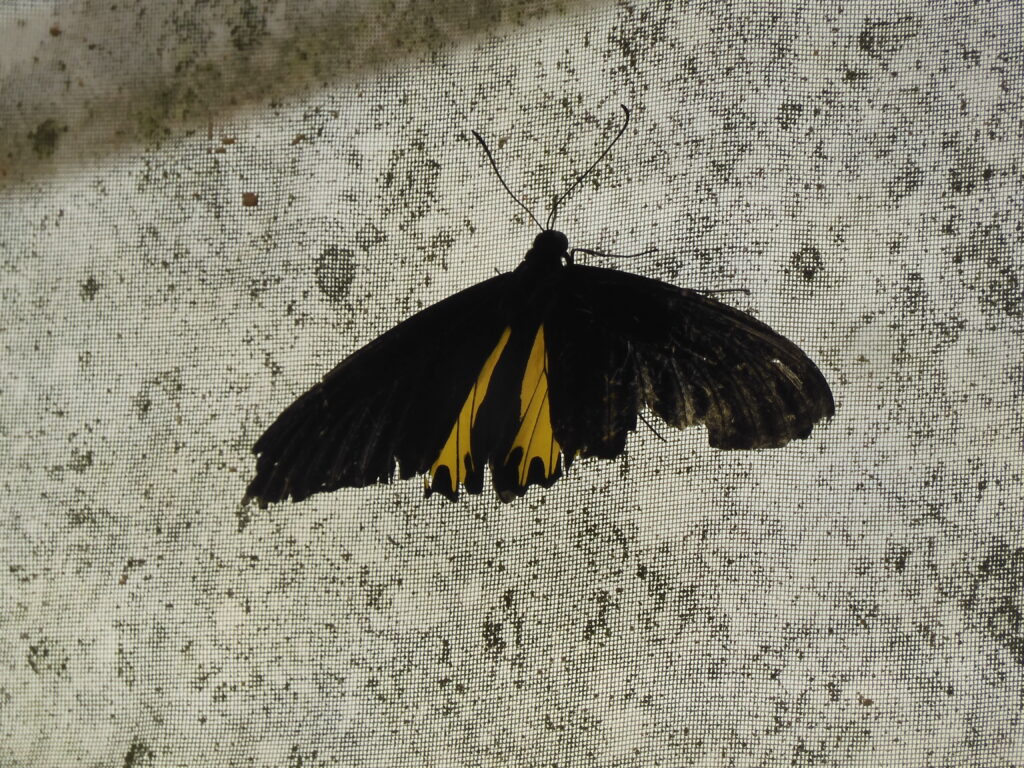
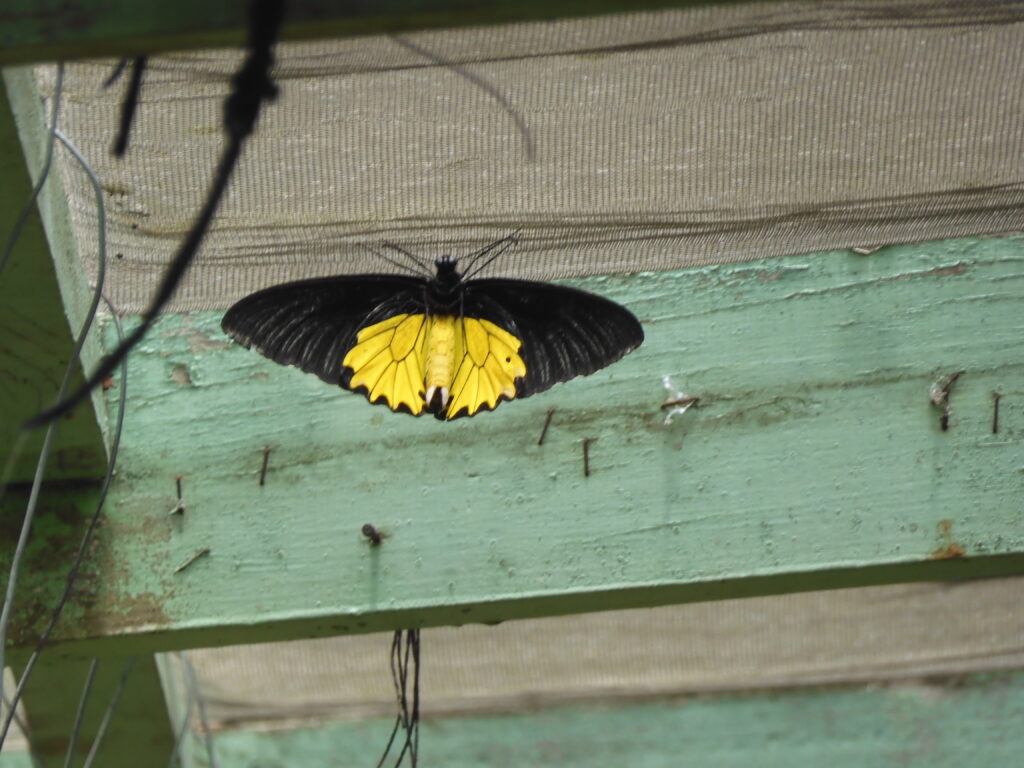
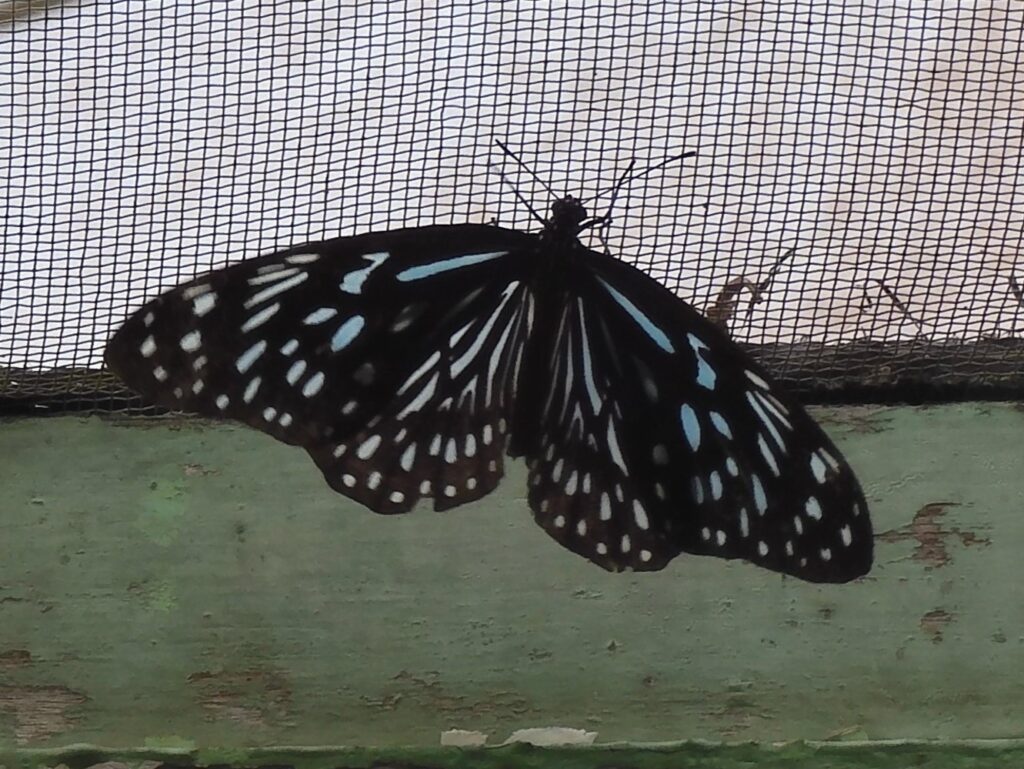
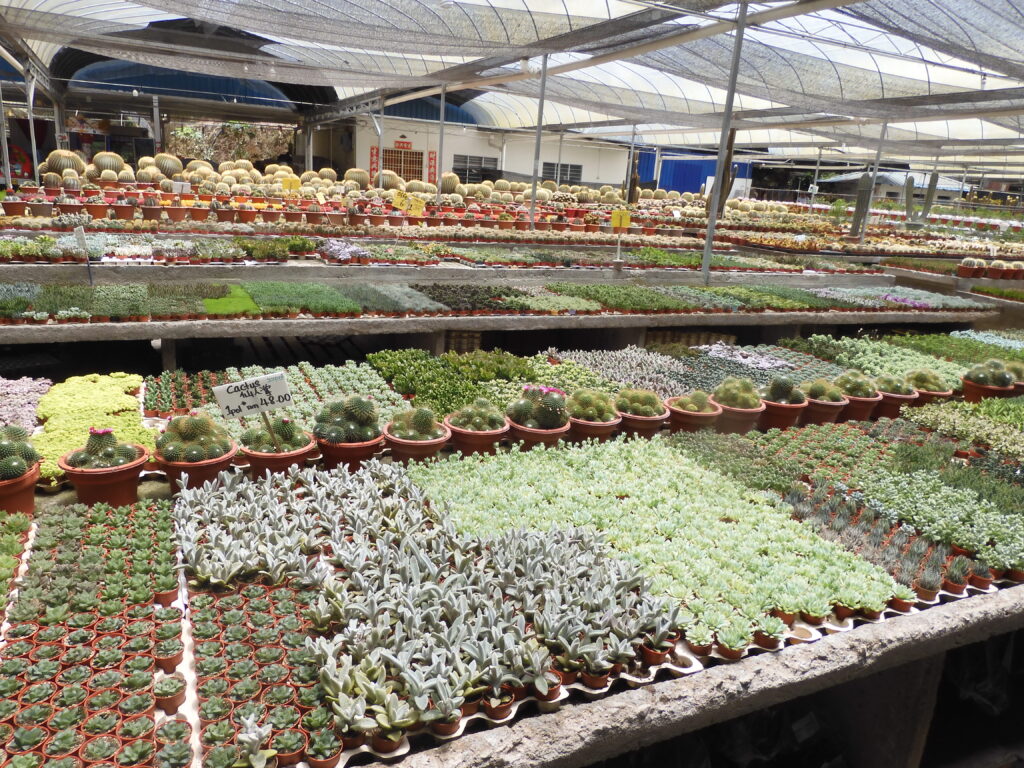
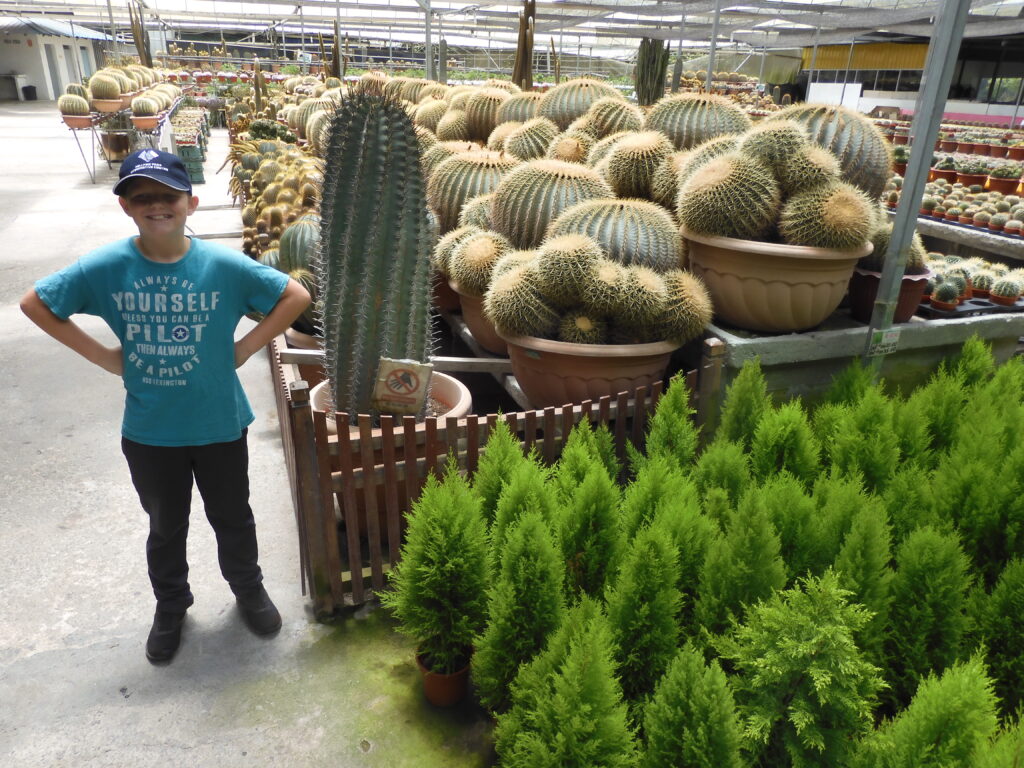
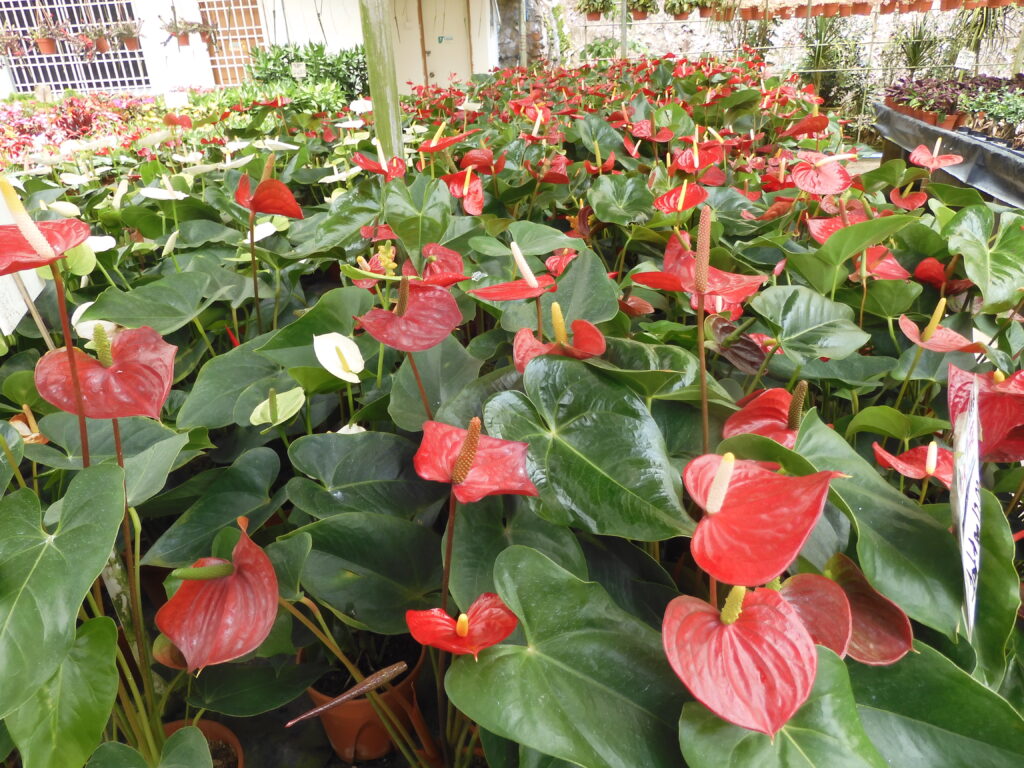
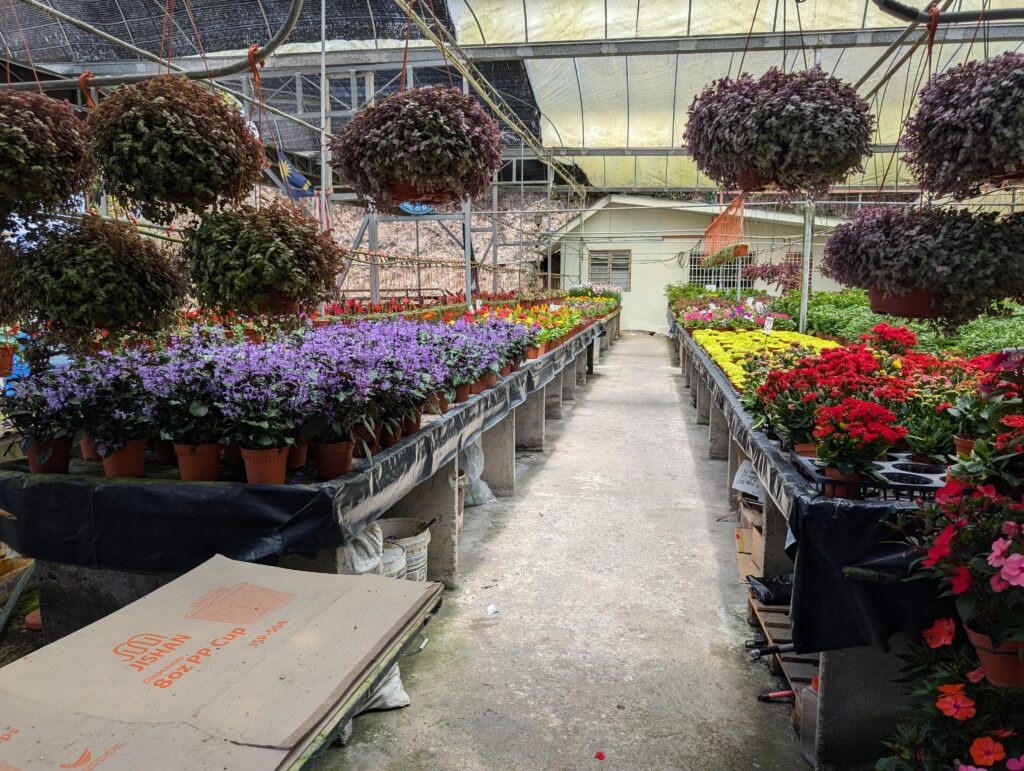
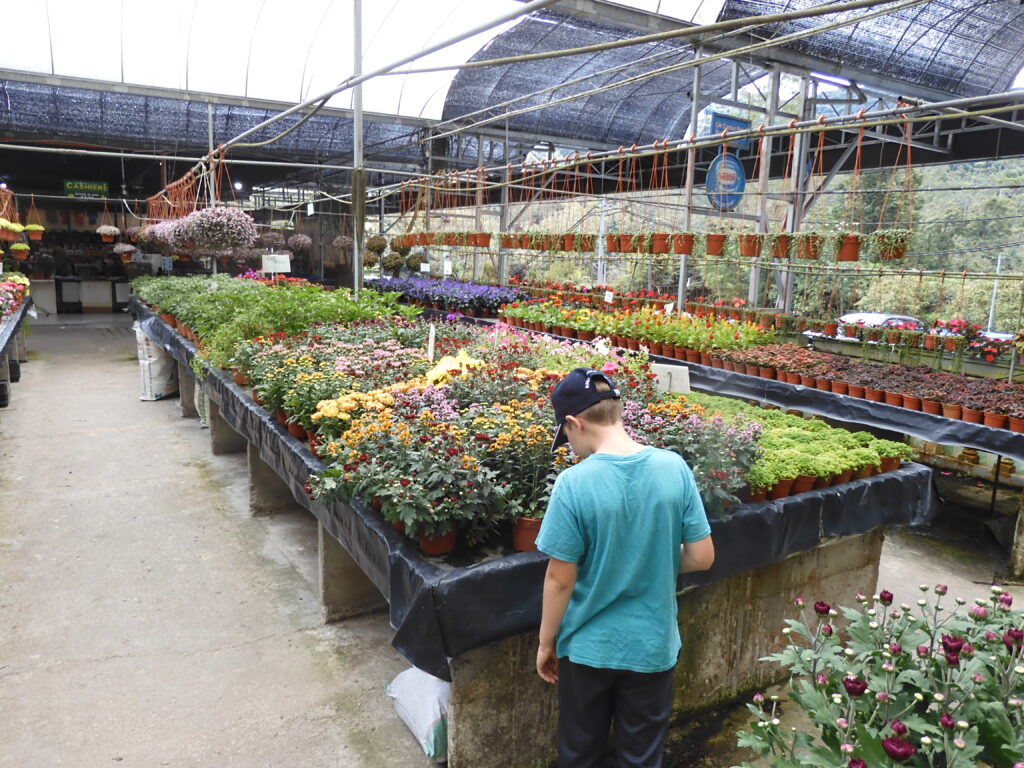
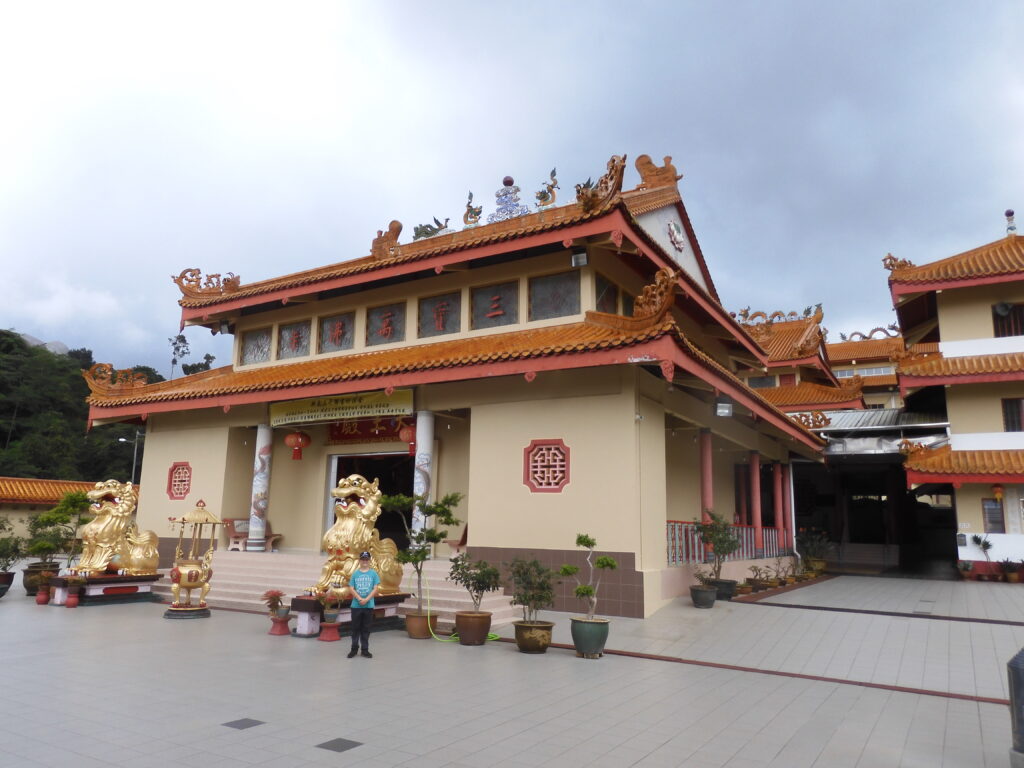
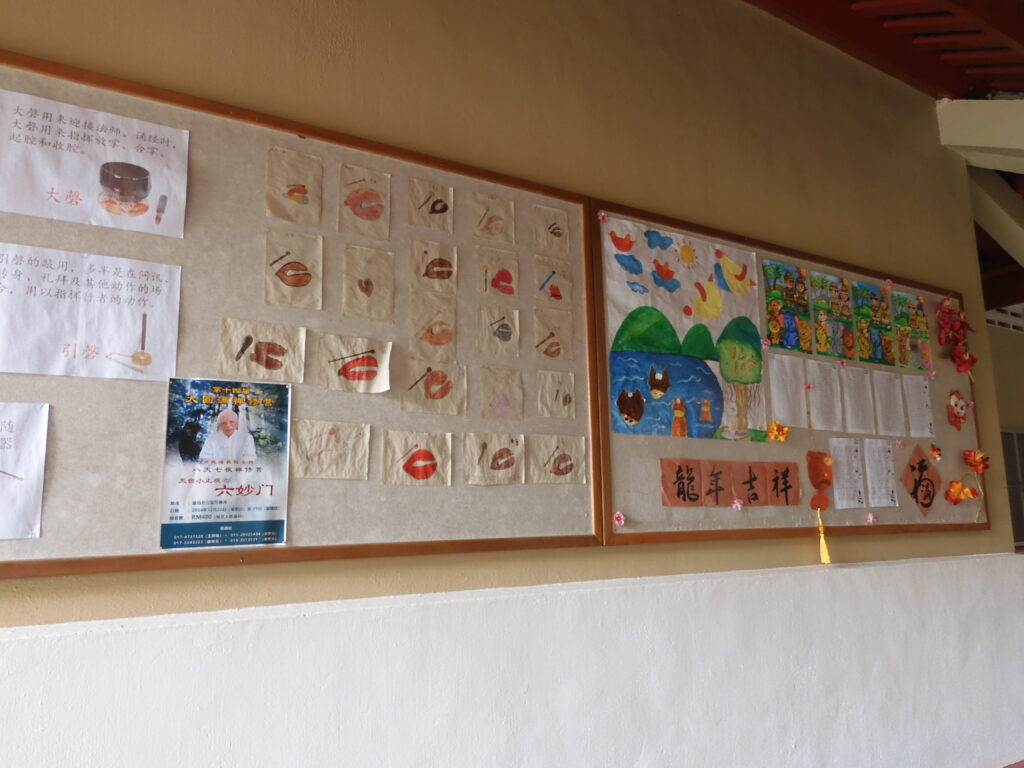
Our final stop was a Chinese Buddhist shrine. This seemed to be more like a working religious facility than the more historical commercialized Buddhist sites we had seen in Nepal and Thailand. There were colored papers that resembled the work of children in a Sunday morning Bible Class. There were classrooms, and a monk on staff to teach and explain things. They even had something like a “tract rack” with free materials in English, Chinese, and some other languages. It would have been nice to have an English copy of the Pali Canon. I would have grabbed one, but that wasn’t one of the free materials. There was one question and answer book about Buddhist teachings in English which looked interesting, but I did not consider it worthy of the space and weight in my not-very-big pack. After a short rest, I capped off my evening with a delicious Malay supper at a highly recommended restaurant in Tanah Rata which still only cost about 25 ringgit.
Early the next morning, we were on the bus to Kuala Lumpur. KL is a major city. It is busy, fun, and has all of the ethnic and cultural diversity of the rest of the country, and then some. It was too early to check into our hotel when we arrived, so we strolled around to find an ATM and get something to eat. Right around the corner, I found a Pakistani restaurant, where I tried a delicious Keema Matka Biryani. I already knew I liked Biryani, so the Keema was the variable. This preparation has some strong smelling spices in it, including ginger, which is different and interesting. I also had a Keema bread, which was like a stuffed pita with minced lamb and the ginger spices.
We got a great deal on our hotel. Kuala Lumpur is fairly inexpensive across the board, and our room was no exception. We had a full apartment in a pretty swanky building with a stunning city view and a rooftop pool. We had to try out the pool, of course. It was about 100’ long, and kept at a nice refreshing temperature. Our only complaint about the pool was the constant stream of selfie-takers, grabbing a shot with the KL skyline in the background. As often happens this time of year, an afternoon thunderstorm popped up and ended our time in the pool. Caleb was tired and needed to call it a night. I strolled out on the town to get a night view of the Petronas Towers and to sample food from the Jalan Alor night time food court. I decided to try the Sambal Sotong, a fish dish with an Indonesian chili paste to give it heat and flavor.
We considered going up the Petronas Towers, but opted instead to look at them from the ground and from different places around the city. When completed in the late ‘90s, the structure was the tallest building in the world. It remained so until the mid 2000s, but now does not even crack the top twenty. It remains the tallest set of twin towers in the world. Another Kuala Lumpur building, Merdeka 118, is currently the second tallest building in the world. Like the Burj Khalifa, the Petronas Towers feature a fountain and light show at night. The building is itself an attractive structure, and a defining part of the Kuala Lumpur skyline. It is especially striking at night, and was well worth a sweaty evening stroll to get some nice nighttime photos.
I coaxed Caleb out of bed at a more reasonable starting hour on Saturday, as that turned out to be our main sightseeing day in Kuala Lumpur. After a bowl of cereal, we were off to the Batu Caves. It took close to an hour on the KL metro system to get there, since the caves are about 15-20 kilometers north of town. They lie in a stark rock cliff that towers over the urban development below. This area has been preserved primarily as a set of Hindu shrines. The largest statue stands at over 140 feet and honors Murugan, the Hindu god of war. We ascended a brightly colored series of 272 steps to the mouth of the cave. The natural form of the cave itself is beautiful enough to be an attraction, even if it were not home to a religious site. Bright greenery spills down over the rocks. In the rain – which was falling during our visit – water cascaded down the rocks and dribbled off of the overhanging plants so that we still needed an umbrella regardless of where we stood.
We headed back to town for a visit to the KL Bird Park, which is the world’s largest free flight aviary. This park did have a moderate admission fee, and I was a little skeptical of whether it would be worth it. I had no reason to fear. We got up close and personal with hundreds of species of exotic birds. They even put on a trained bird show in their amphitheater. We saw peacocks, parrots, macaws, a wide variety of different, brightly colored pheasants, and – well – too many others to list. You’ll just have to look at the pictures. Caleb was delighted by the show, and the park turned out to be one of the highlights of our Kuala Lumpur stay.
Continued
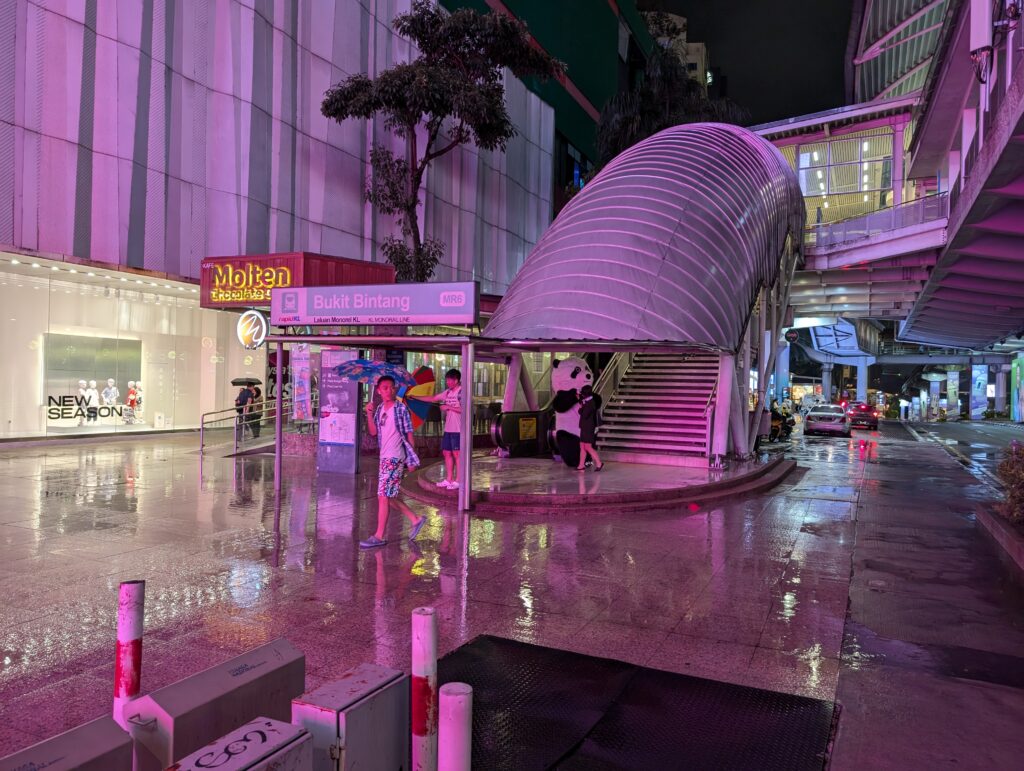
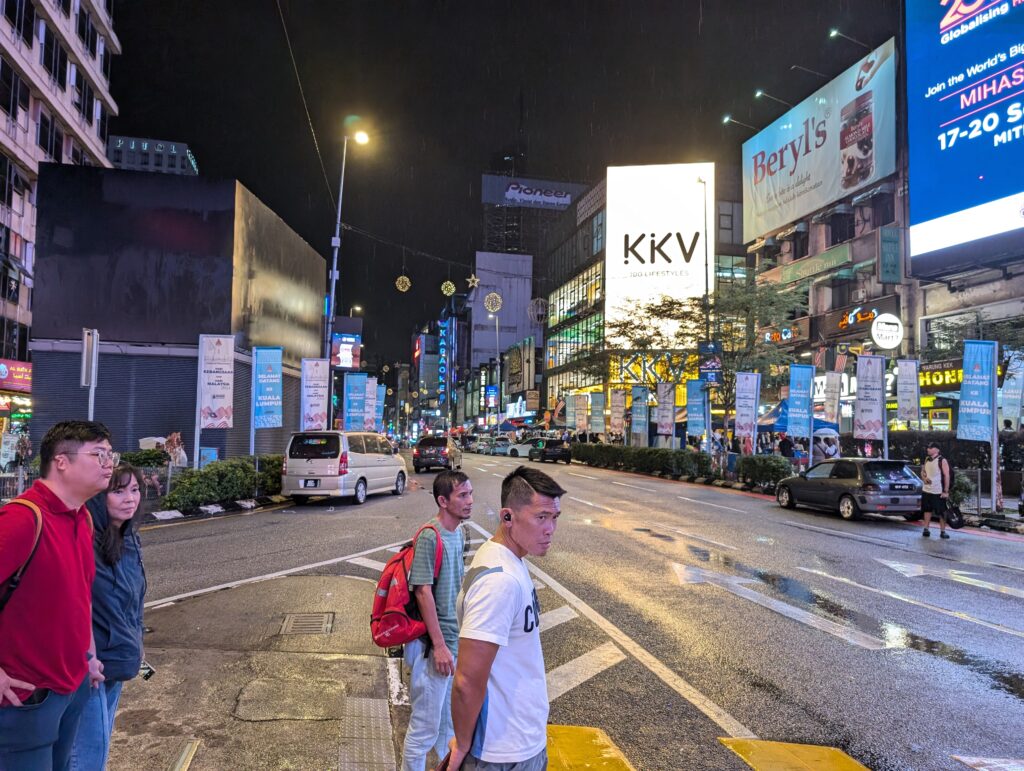


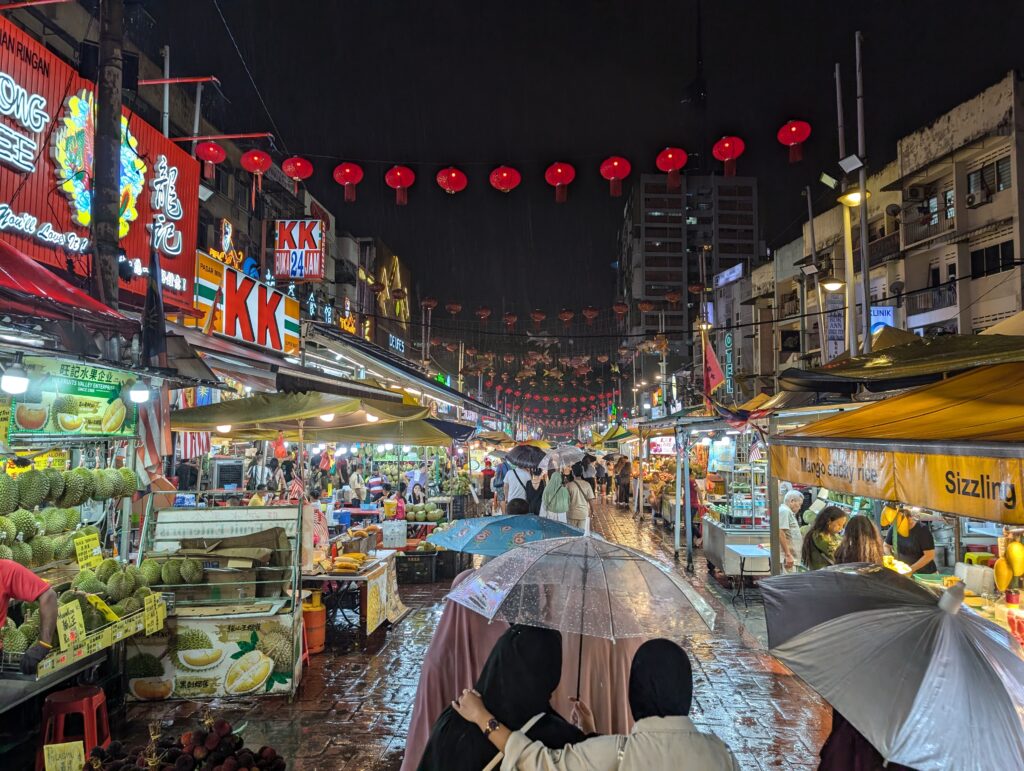


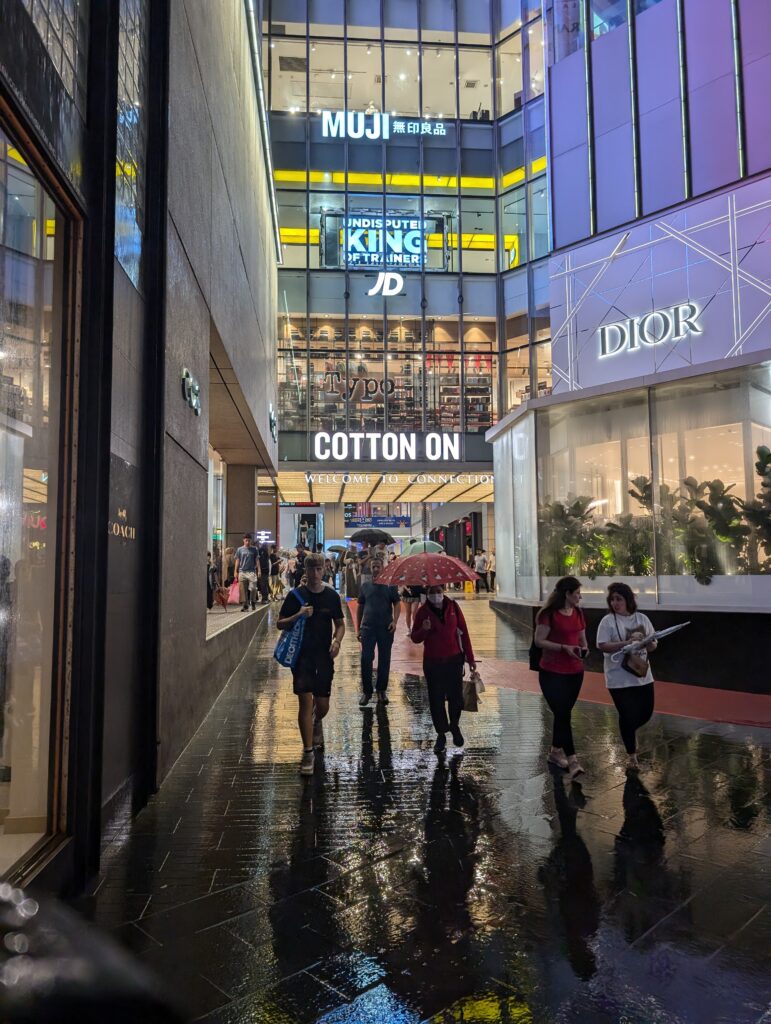
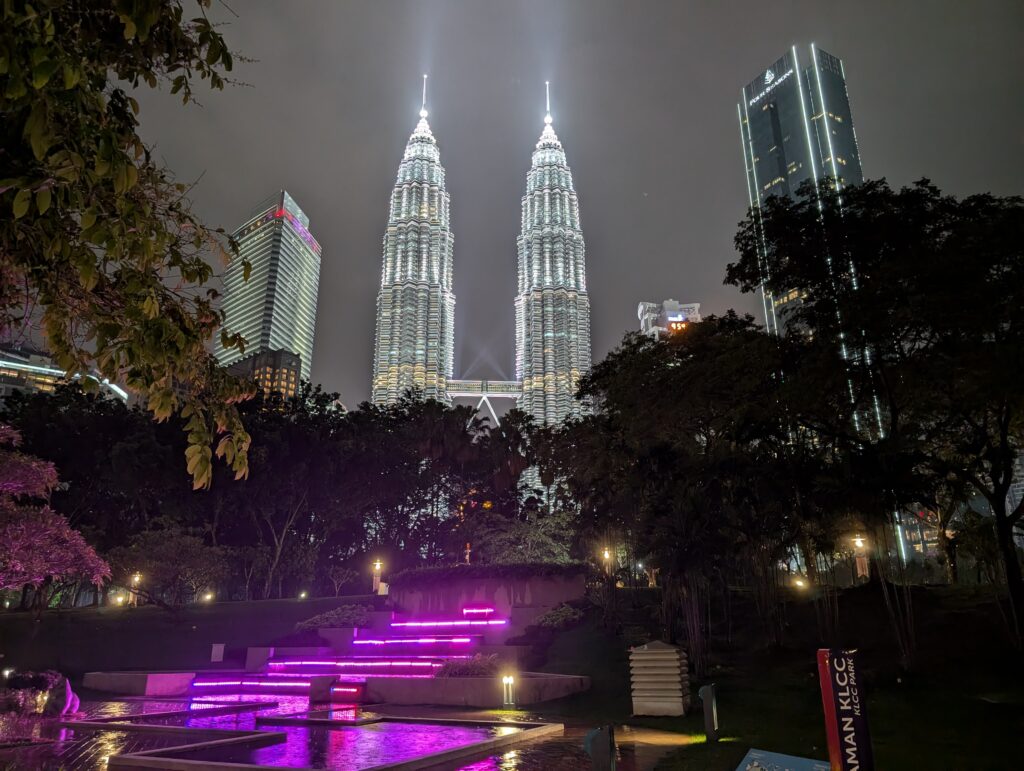
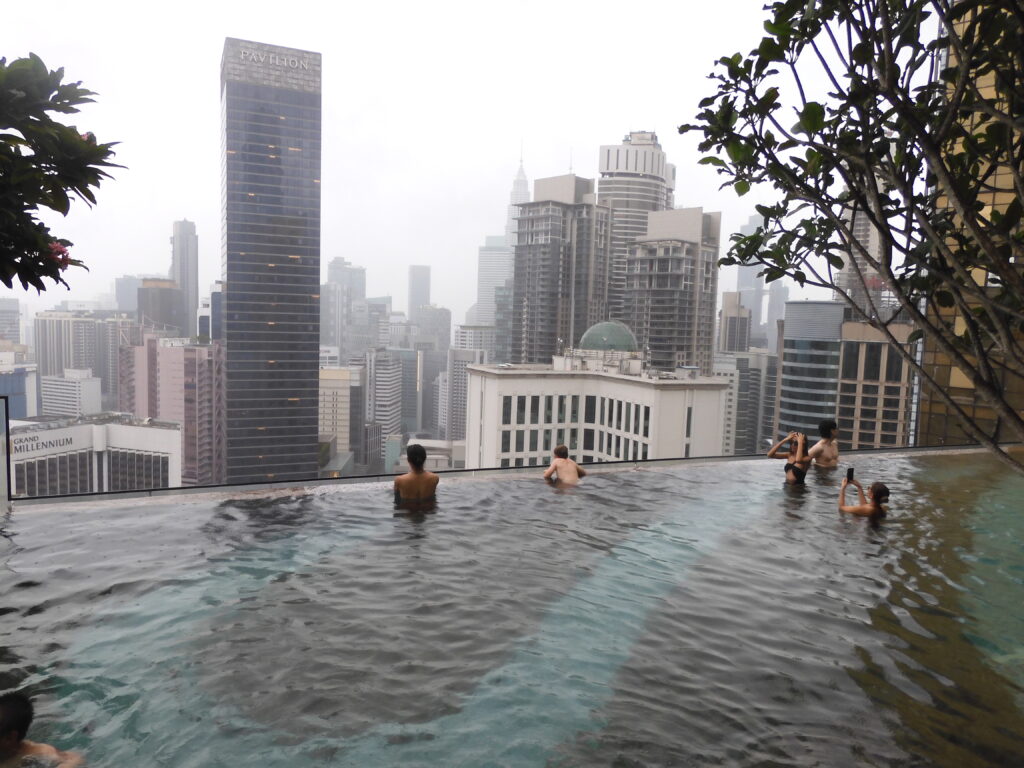

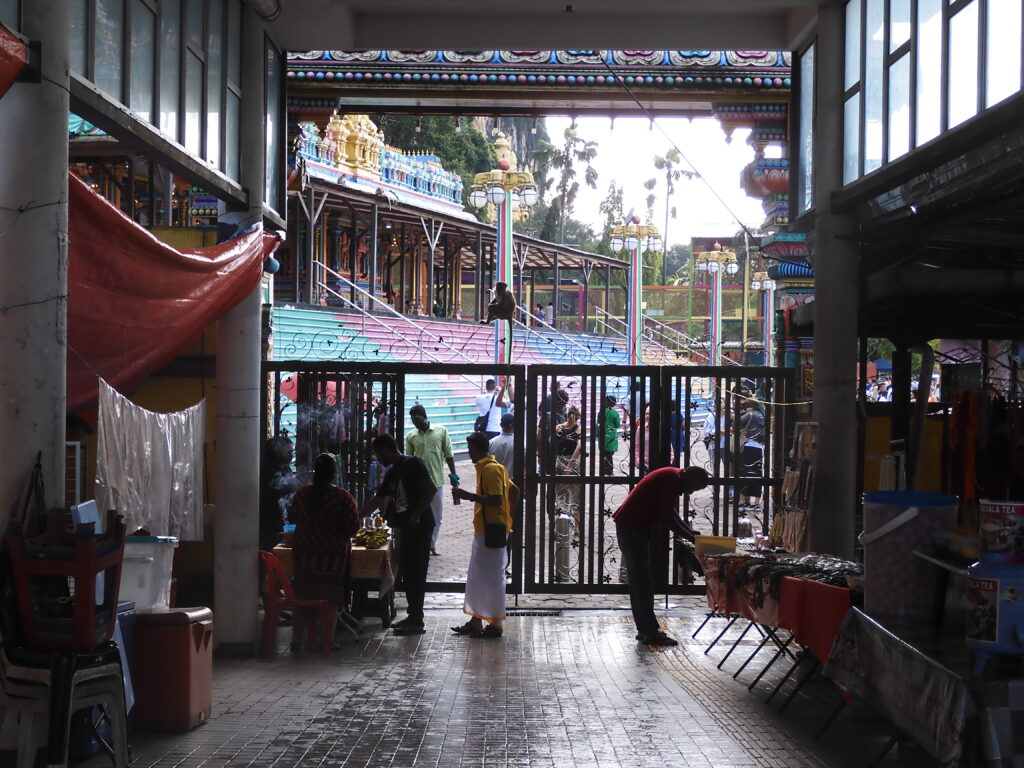
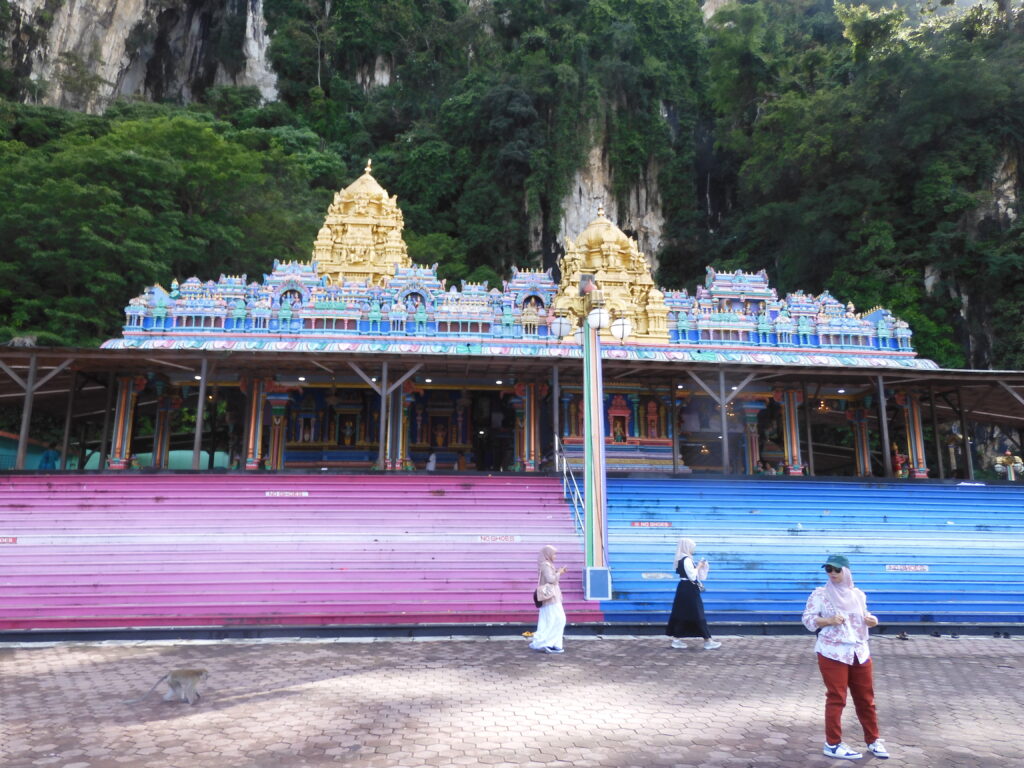
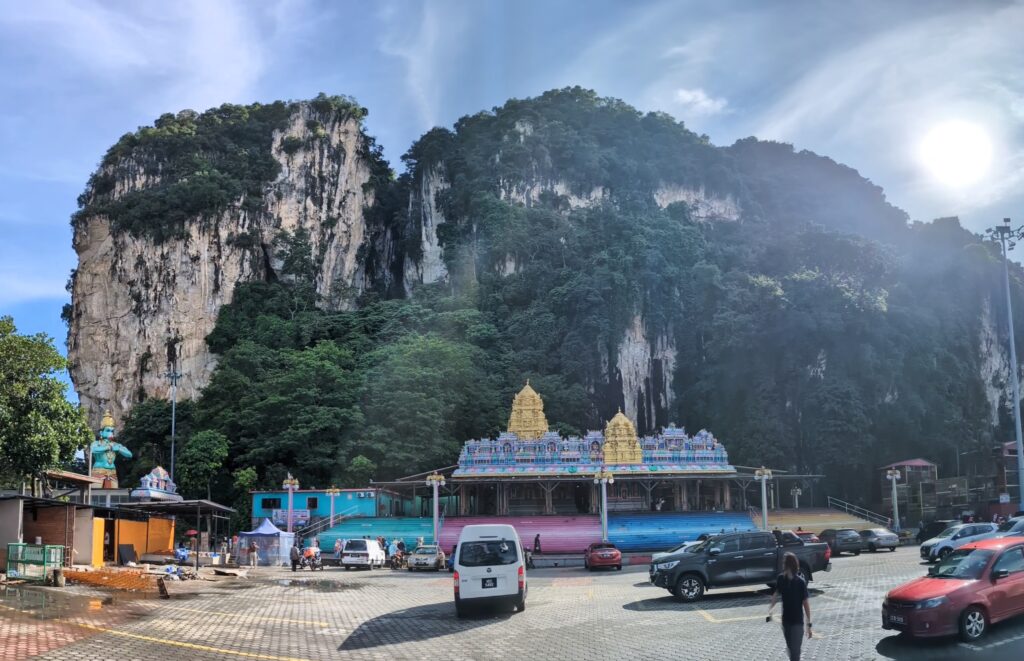
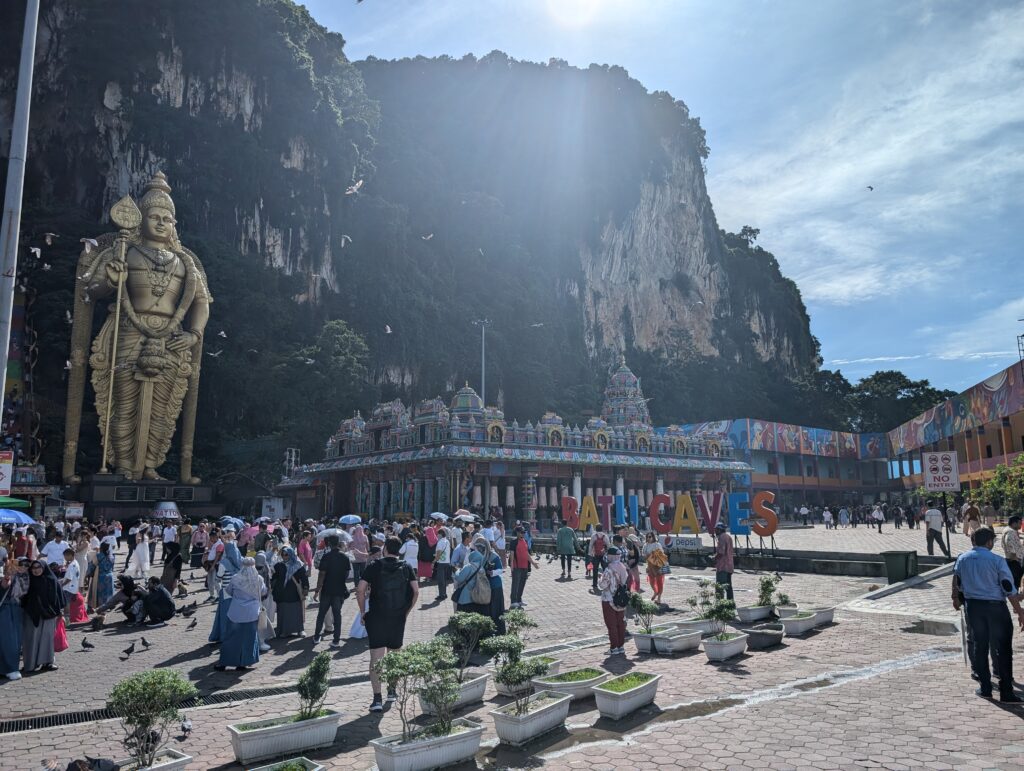

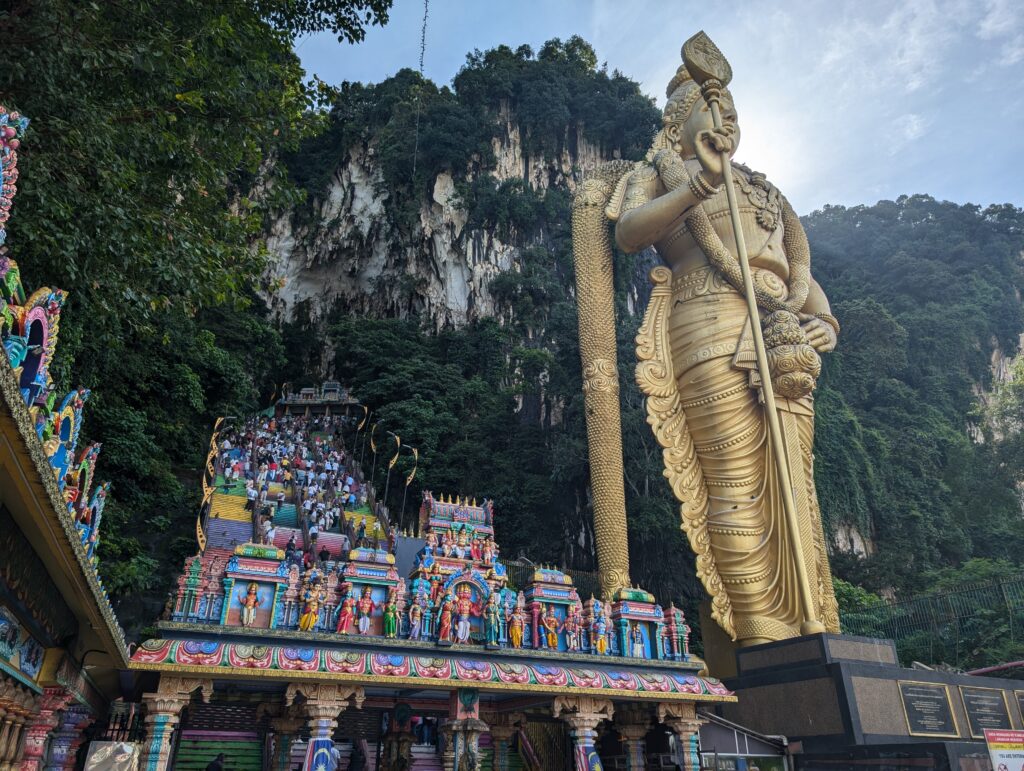
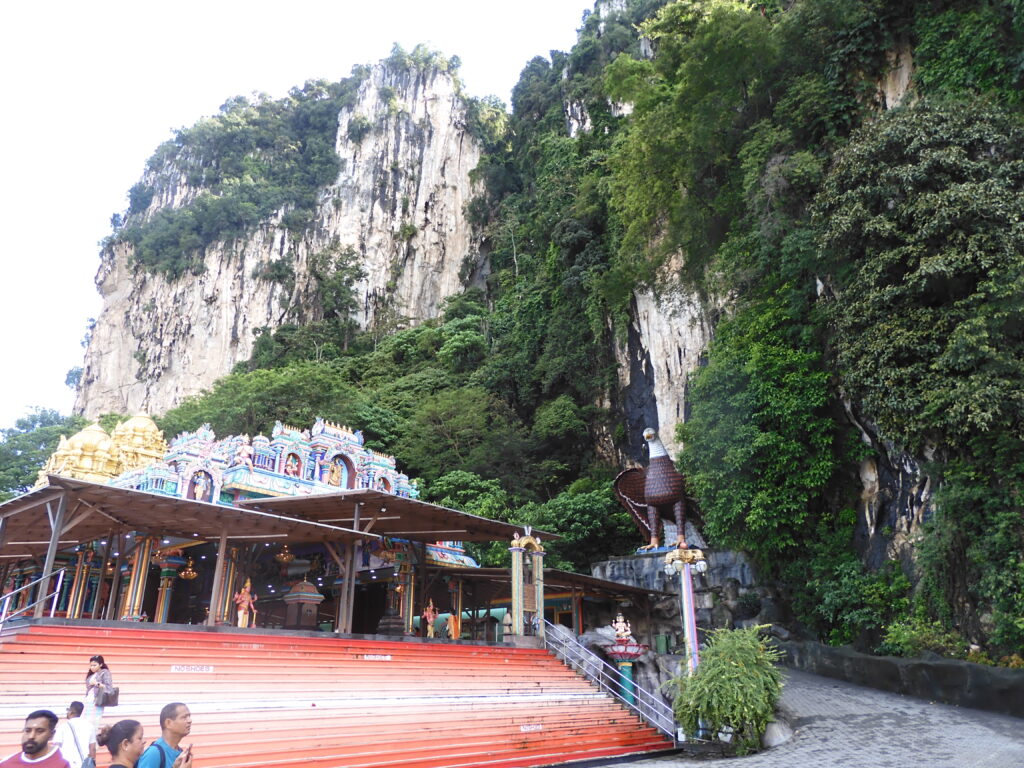

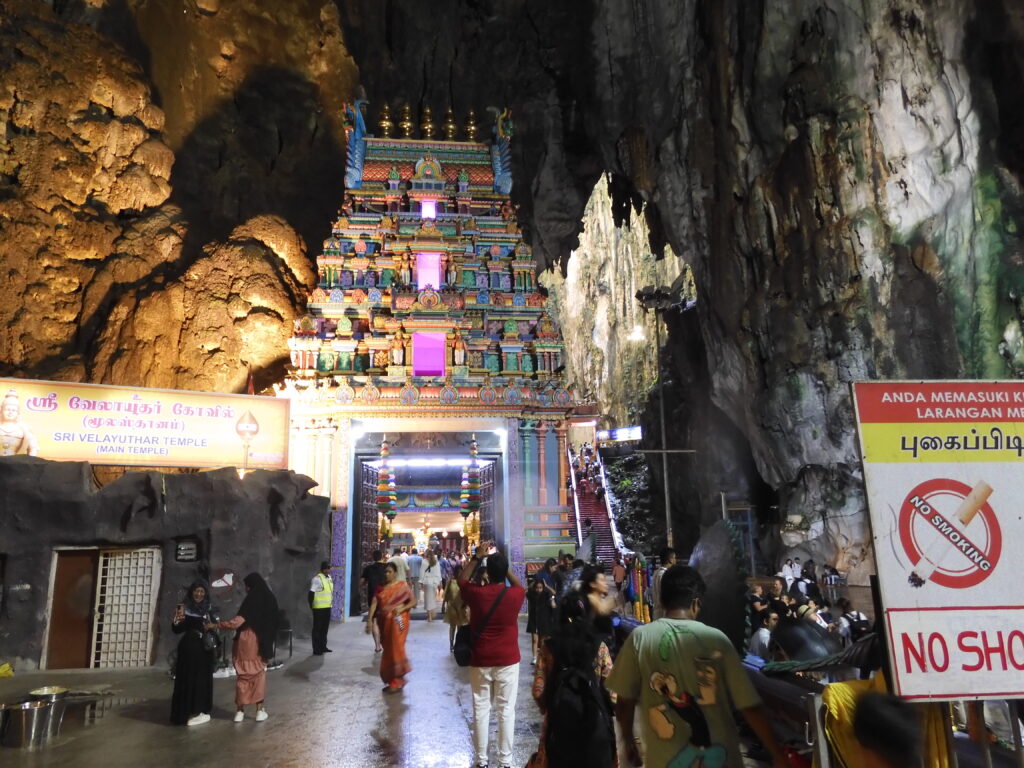
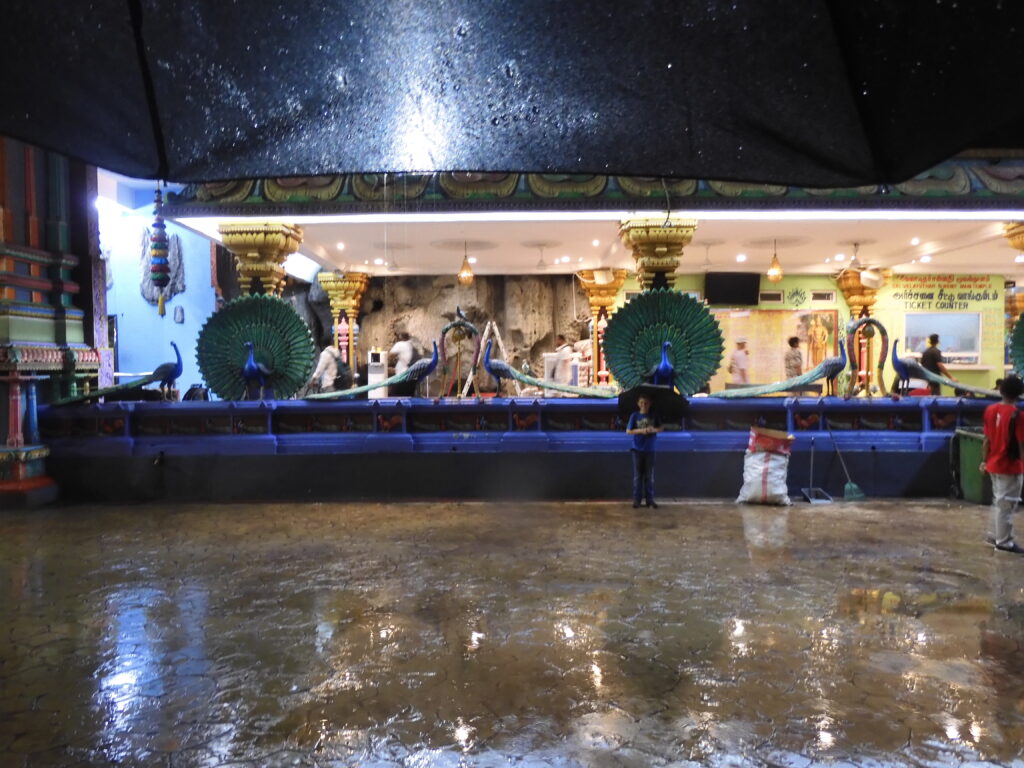

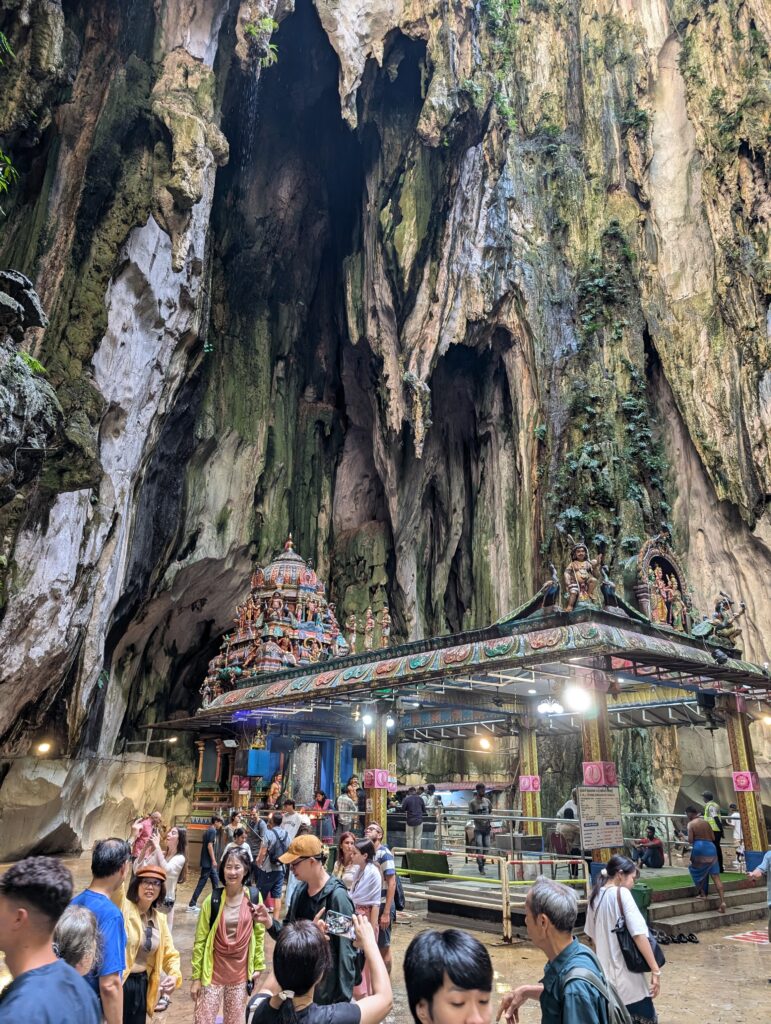
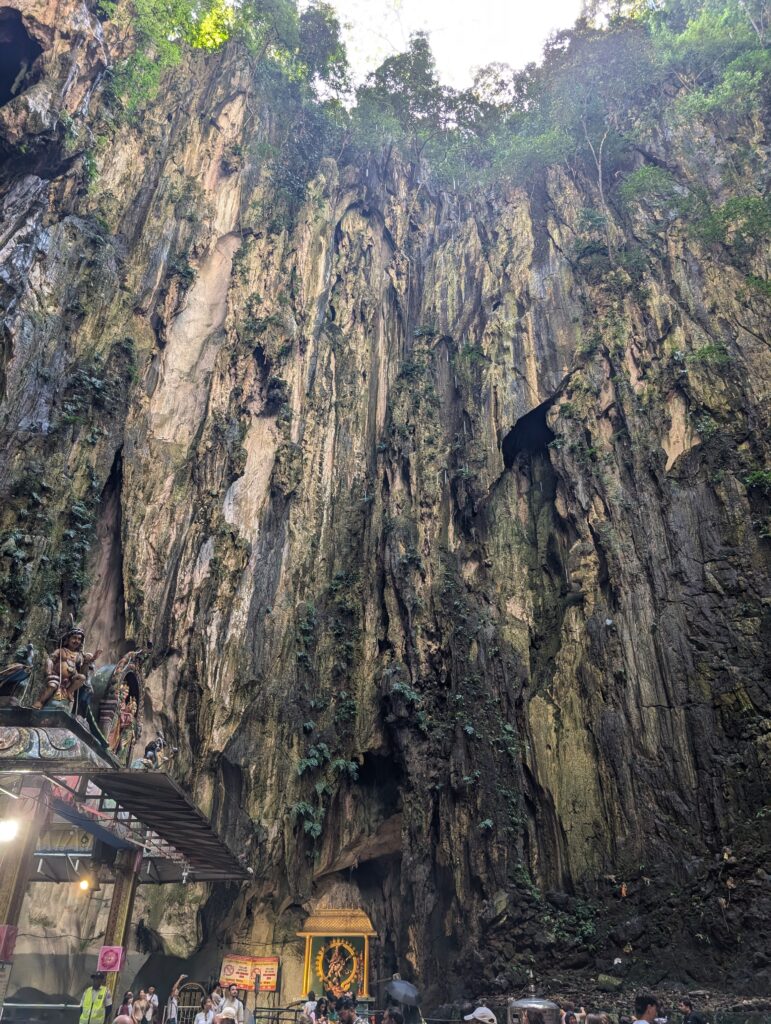
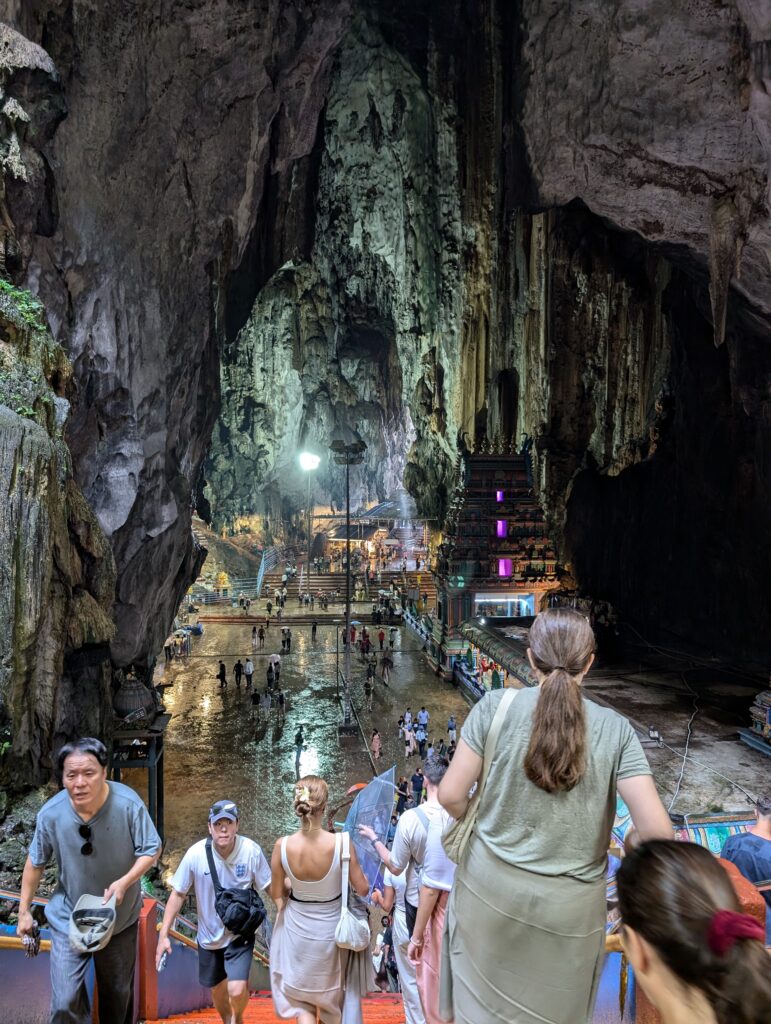
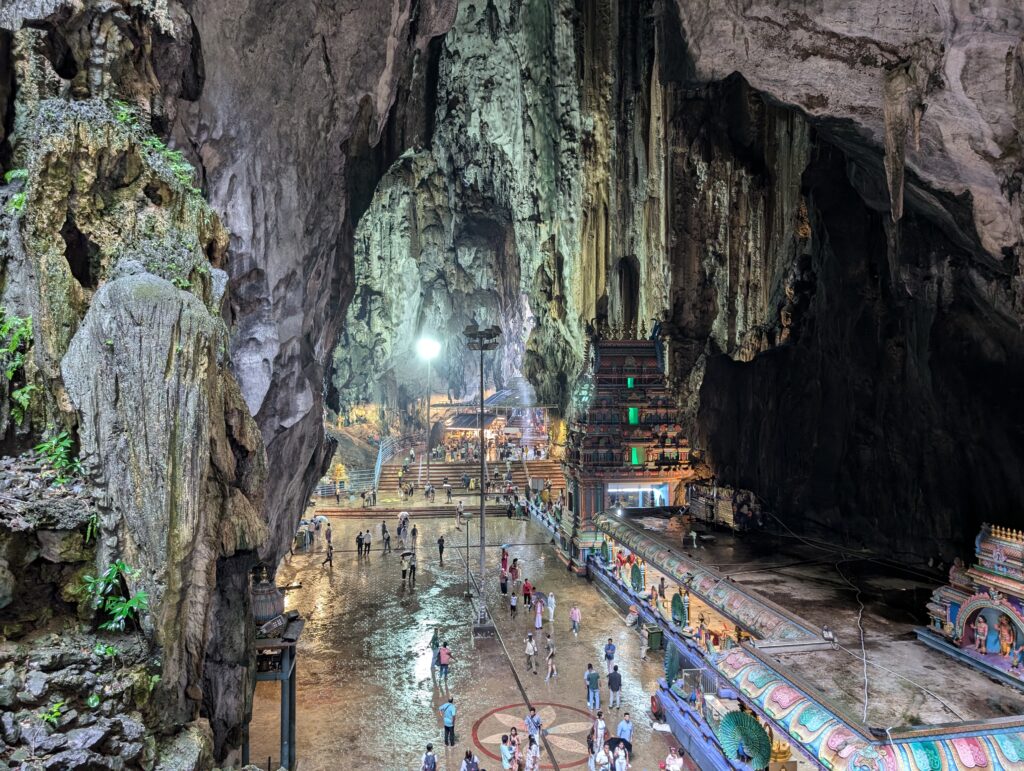
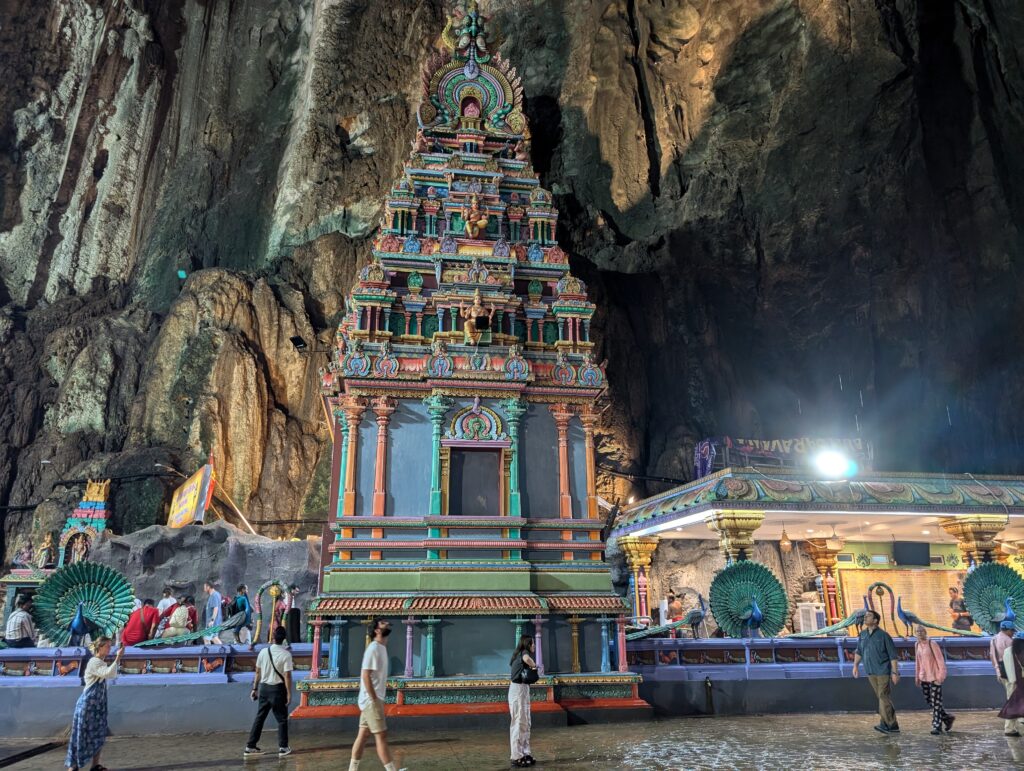
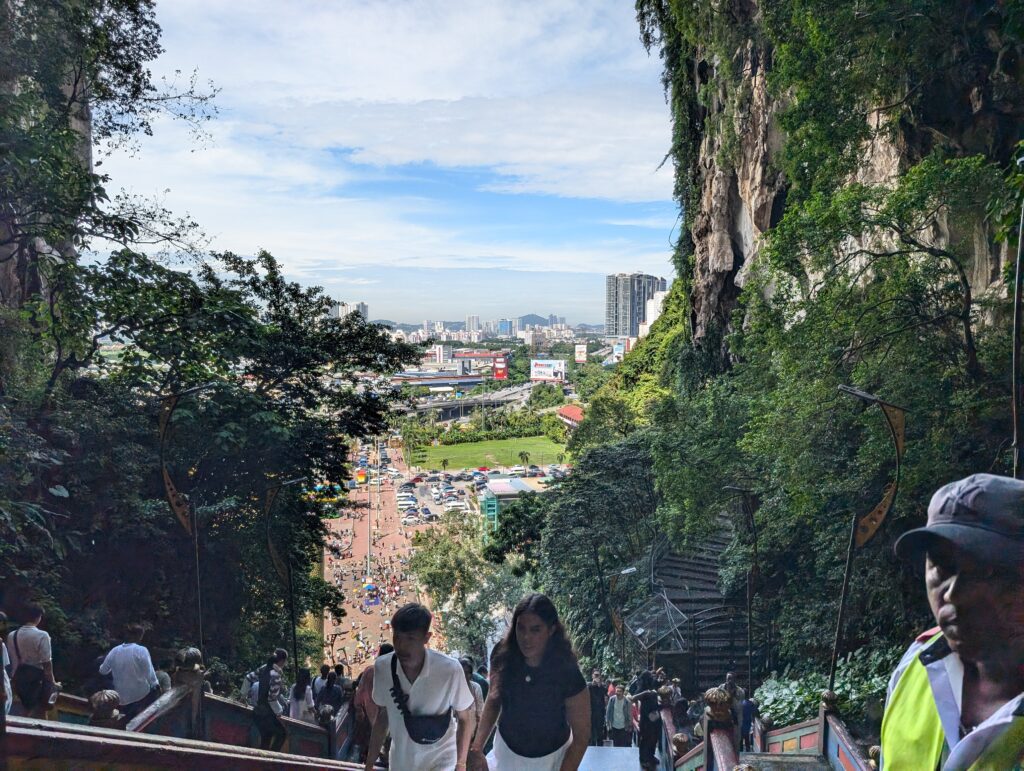

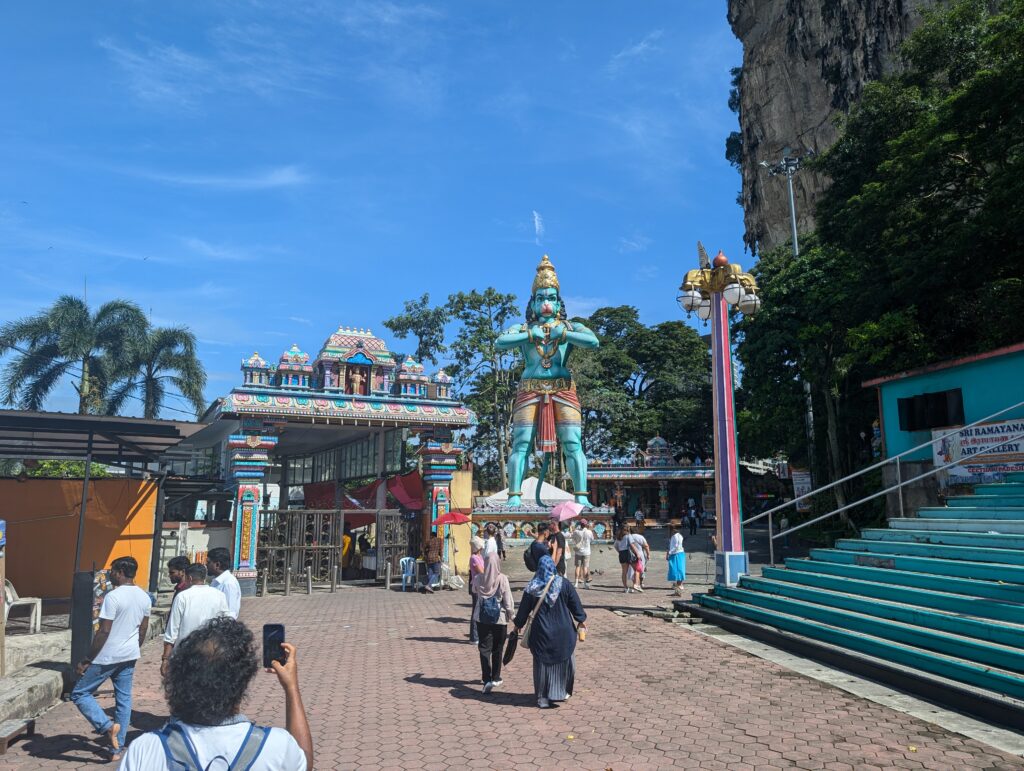
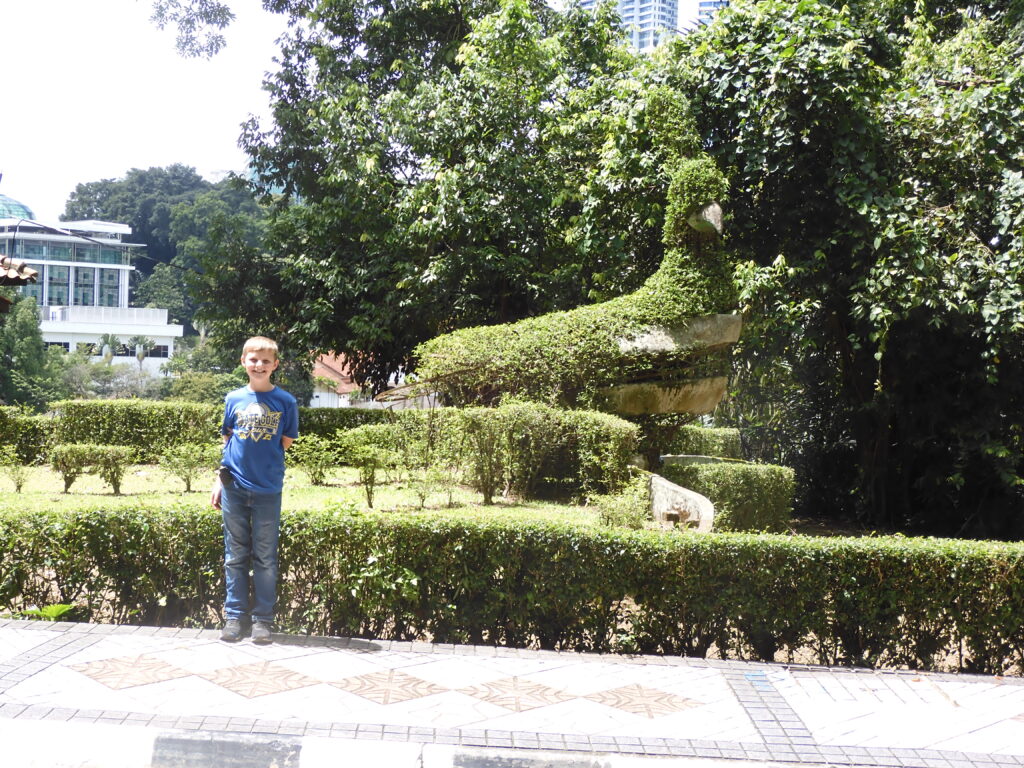
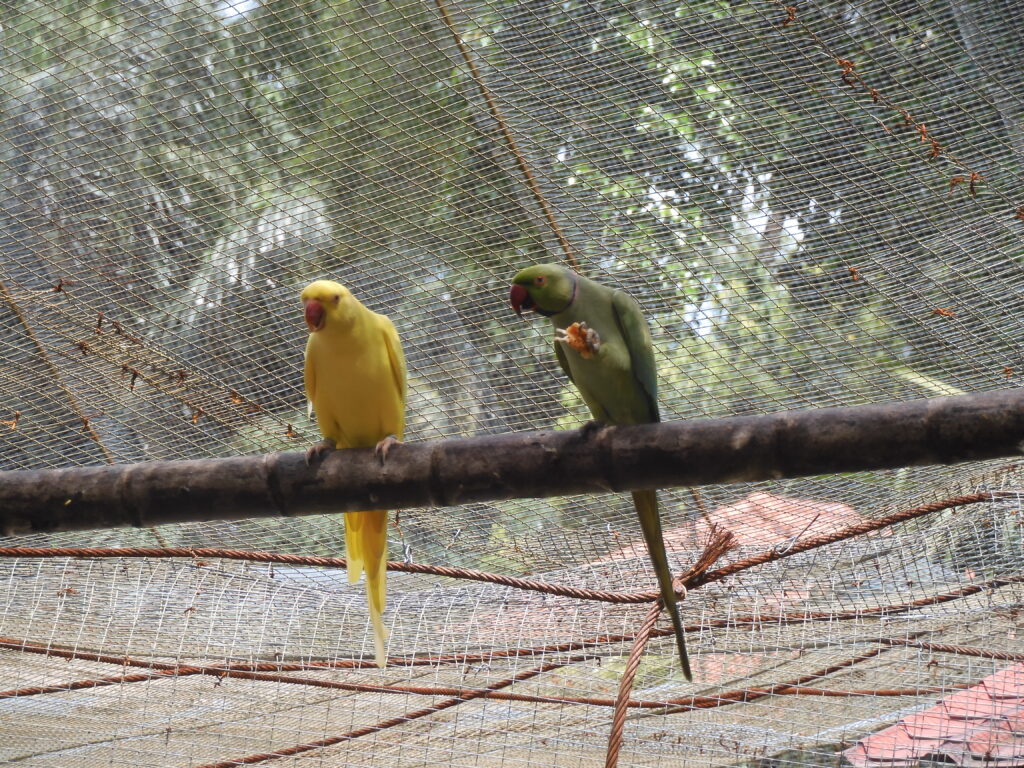
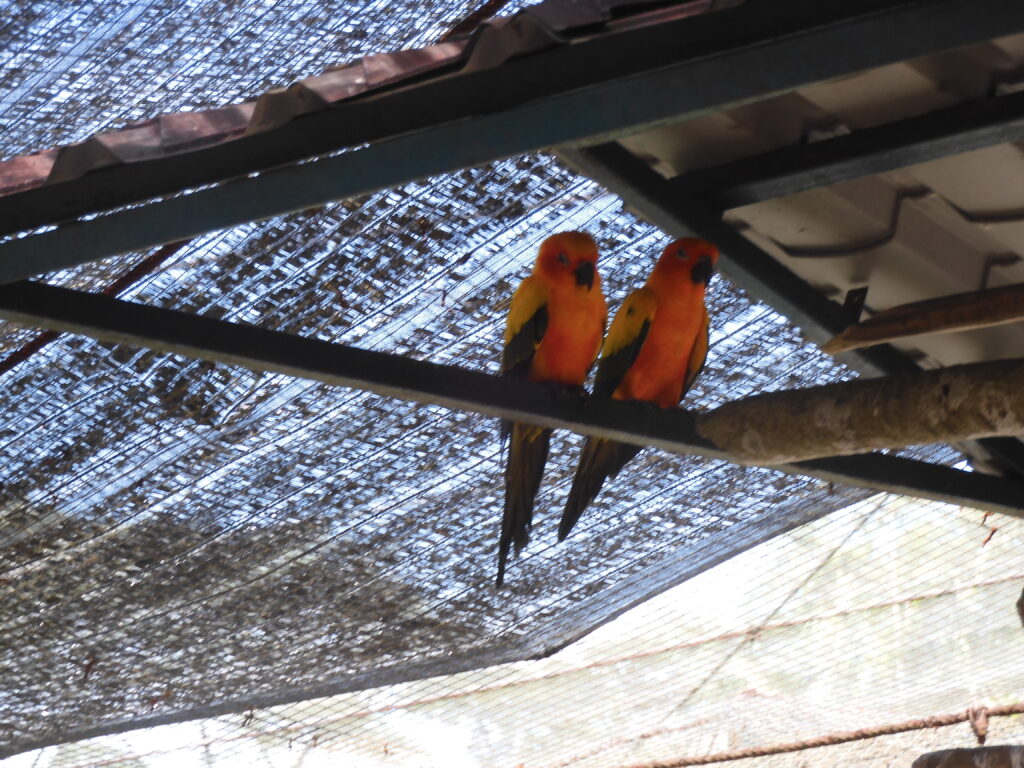

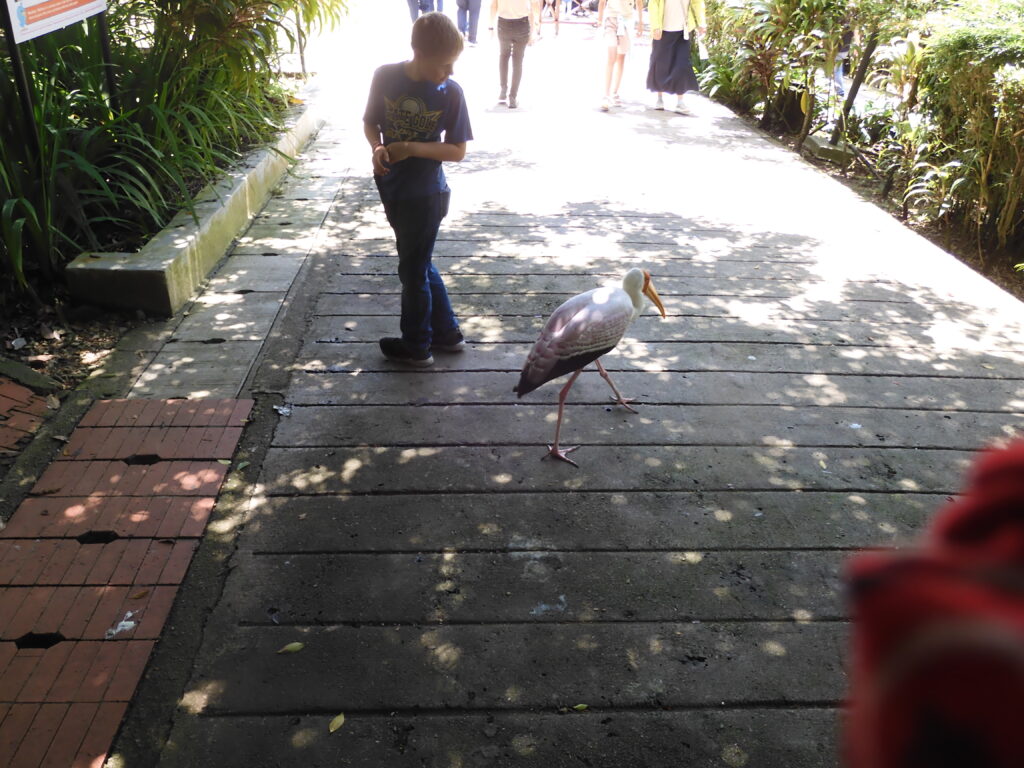

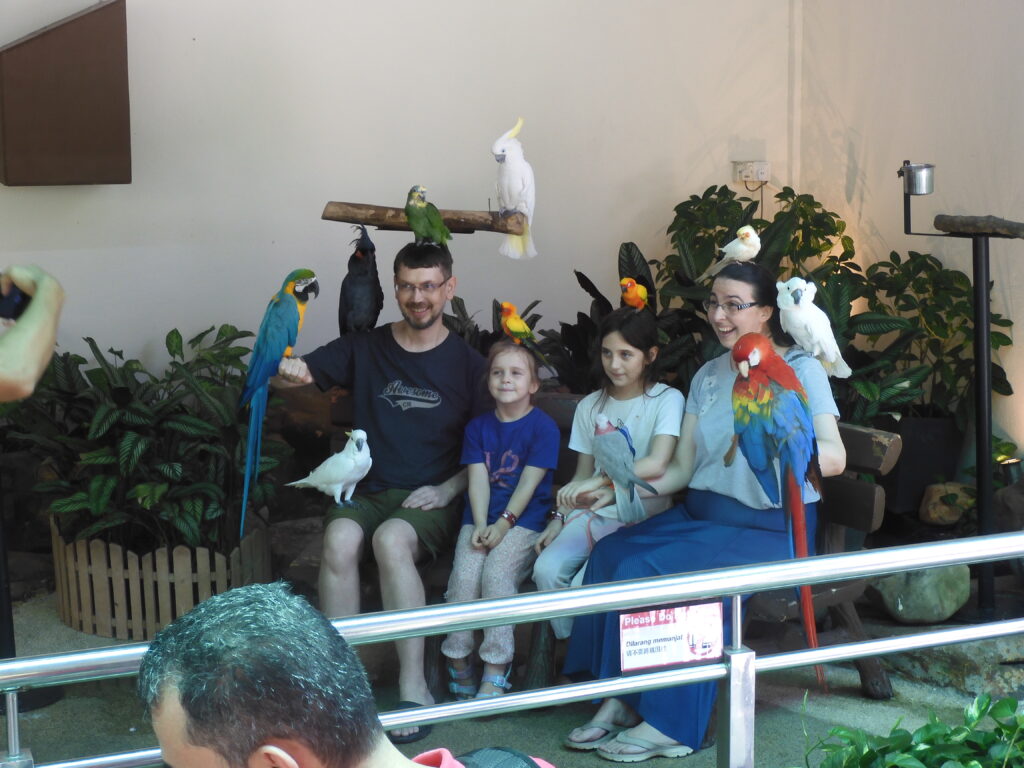
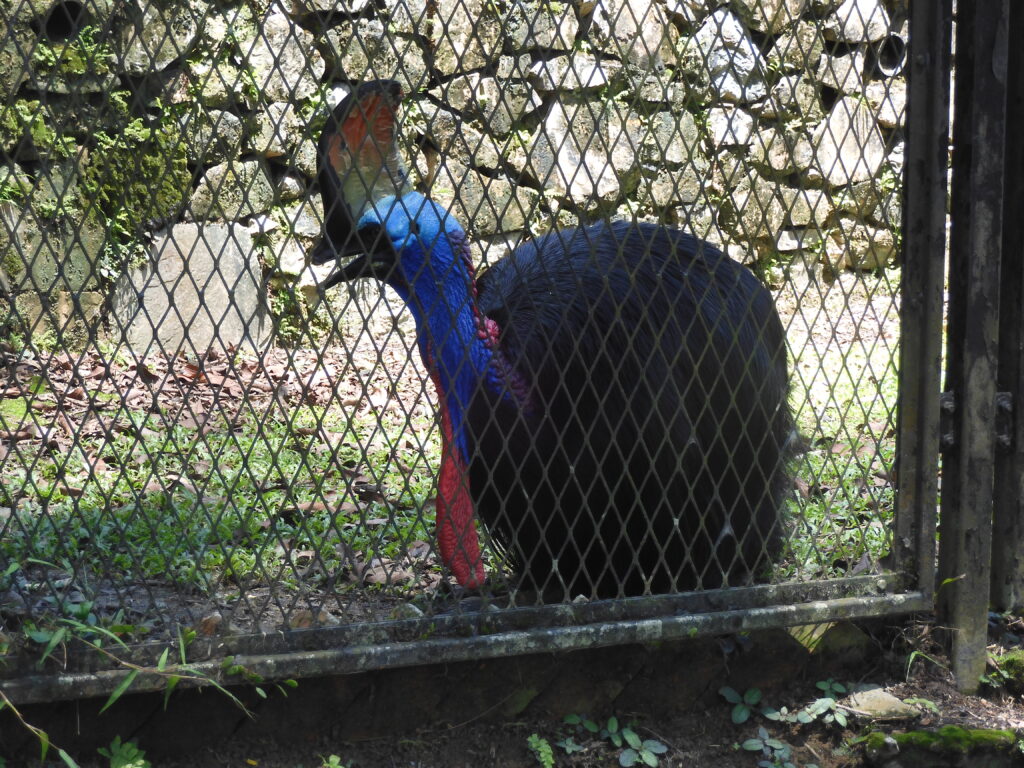


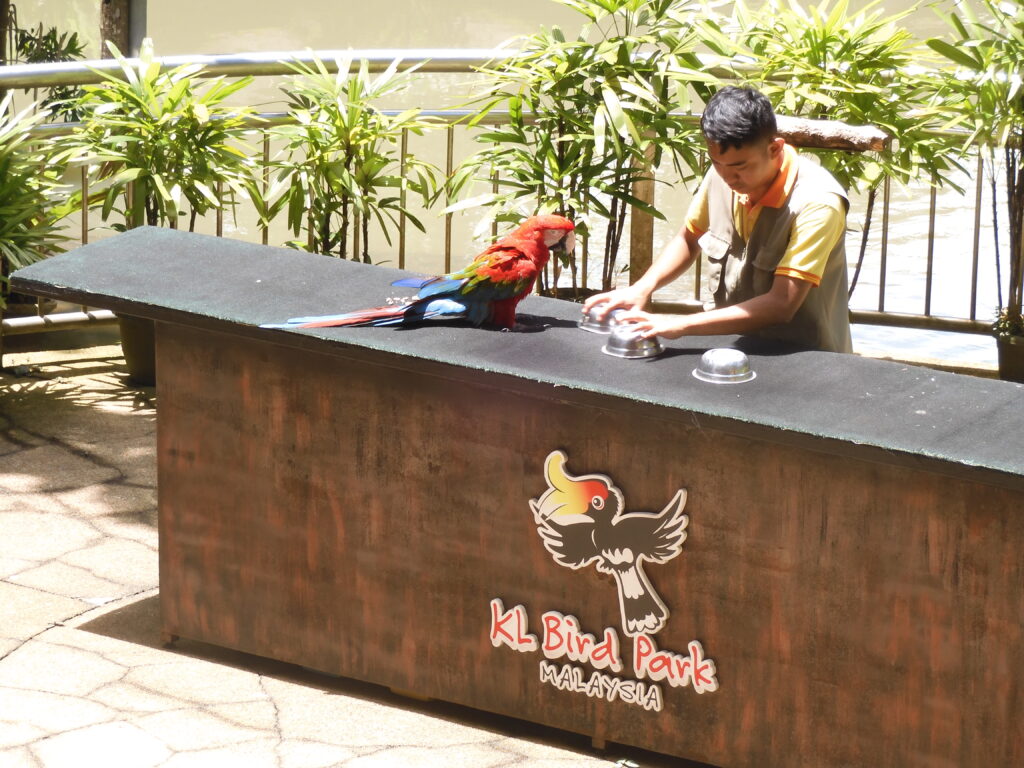
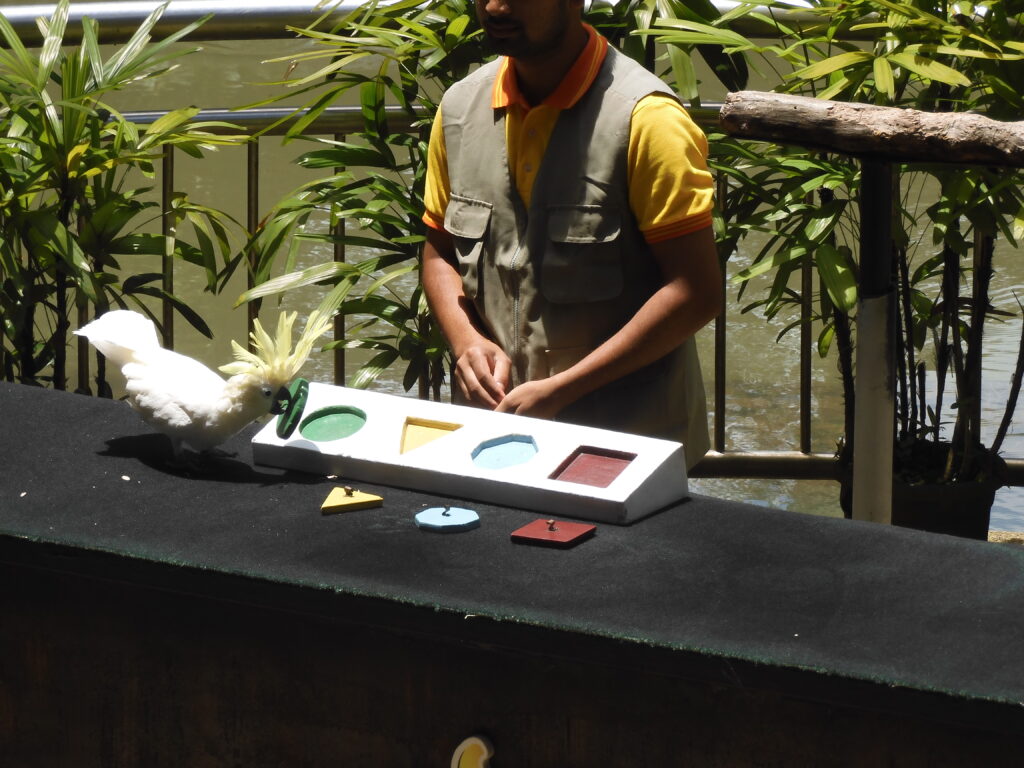
We next walked through Merdeka Square, home to what was once the world’s tallest flag pole. Merdeka means something like “free” or “independent” in Malay. When Malaysia was British territory, Merdeka Square was the parade ground. The place is ground zero for the nation of Malaysia. Their independence was declared here, and the place was highly decorated in preparation for celebrating the 64th anniversary of that independence. Merdeka was close to a couple of markets, so we visited those while we were there. We took a look at the Muslim “River of Life” mosque and worship complex as we passed.This is Malaysia’s oldest mosque. We didn’t buy much at the markets, but it was fun to people watch. We saw Central Market, which once had been a group of warehouses. We also saw Petaling Street Market, which had a much more Chinese flavor. It was close to Kuala Lumpur’s Chinatown, which we also visited. Caleb bought a wristwatch at Petaling Street. The markets were crowded on the weekend, but didn’t have all that much merchandise that interested us.
We were hot and a bit tired, and so opted to head back to the luxury of our rooftop pool. We visited in extremely limited English with a mother and her eight year old son from China. She was trying to teach the boy to swim, and asked for our help, seeing we were pretty proficient. The kid knew a little more English than she did, and I think understood what we were trying to get him to do, but he just wouldn’t relax. Relaxing is key to getting anywhere swimming, so we made little progress with our instruction. It was a pleasant interaction, though, and we thoroughly enjoyed the spectacular views, cool water, and variety of fellow swimmers. There was a group of Muslim ladies on the far end of the pool. I had not seen this type of swimsuit before, but they had on full body suits with robes and hijabs. They were clearly purpose designed swimsuits, though they looked like they would make swimming a lot of work. After our refreshing swim, Caleb was about played out. He returned to the room and ate some snacks and leftovers. I walked down our street to one of the nearby hole-in-the-wall diners and tried some more local cuisine.
We knew our main plan for Sunday. Some quick research had produced the location and meeting time of the Kuala Lumpur Church of Christ. It took nearly an hour to get there via a couple of different kinds of public transportation, but we made it. They had a Tamil (a South Indian language) service and an English service. We met a large family of refugees from Pakistan, and a group of close friends and brothers from different parts of Malaysia. They welcomed us graciously, and we enjoyed worshiping with them. We used traditional English language hymns, all but one of which I knew. That was a familiar sound I had not heard for over three months.
Like many overseas churches, this was a very conservative group. Their hospitality, on the other hand was quite liberal. They treated us to a wonderful, light Chinese meal for lunch. One sister supplemented our meal with a delicious home cooked desert called dangai. By the time we arrived back at our room, it was close to three and time for a rest. I did let Caleb head back to the swimming pool as I relaxed and updated my work. As the afternoon waned, it became clear we weren’t going to do any other traditional tourist sites. Caleb had not been to the nighttime outdoor food market, so I asked him if he might like to eat there. He was game for this, even though it meant staying up late, so we made the short walk back to Jalan Alor.
Our timing could not have been better. There was some kind of festival going on, complete with parade. There were dancing life-sized figures, trucks, a fire brigade, firecrackers, men balancing 20 foot flagpoles they were holding with their mouths, and troops of walkers carrying and spinning those long, tubular dragon figures. They were blasting music. Chinese lanterns hung all through the street, which was packed with vendors, touts, and customers. You could buy food of any sort. There were fruit stands, ice cream stands, pastry stands, stands with various kinds of meat on sticks, vegetable stands, and sit-down restaurants of so many different nationalities – Indian, Chinese, Japanese, Thai, general seafood, fusion, just about any Asian option you could think of. We sat down in a Chinese-Malaysian outdoor restaurant and had our fill of atmosphere and food. They were both delicious. What a fun evening, and final night in Kuala Lumpur. I drifted off to sleep looking at the lit up skyline out my window, wondering why so few people choose to partake in the amazing variety of experiences available in the world we live in. Our world is a constantly surprising, beautiful, amazing, and endlessly interesting place. I am sorry only that I waited so long in life to take seriously the opportunity to explore and experience it myself. Better late than never!
-See Postscript Below
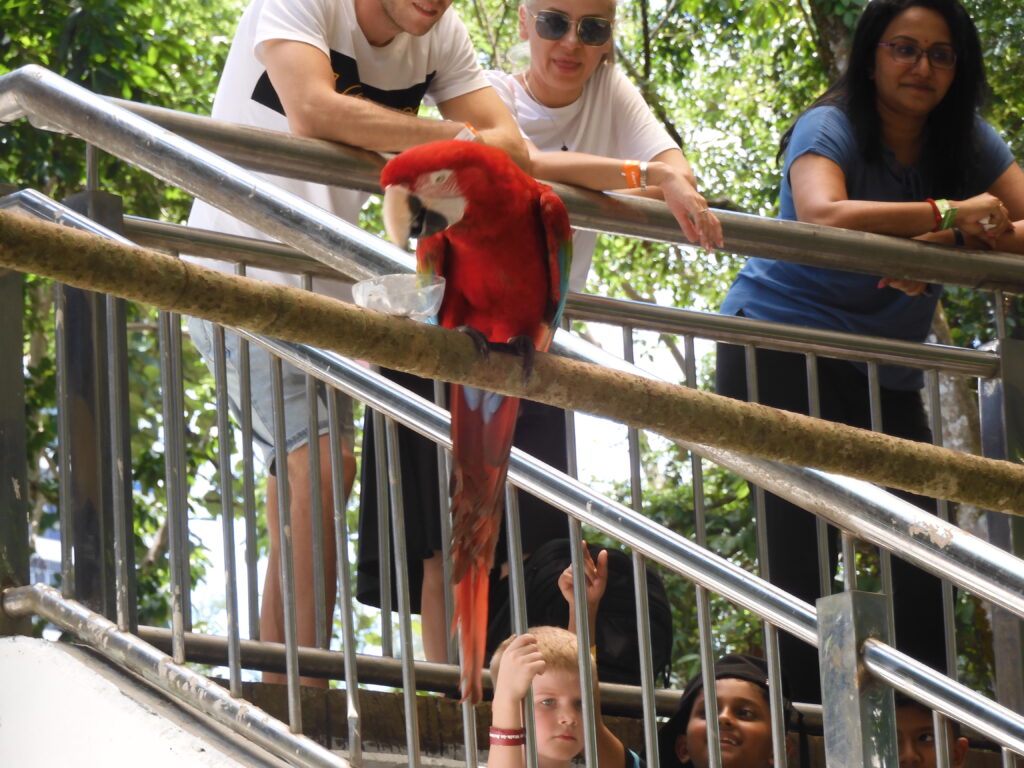
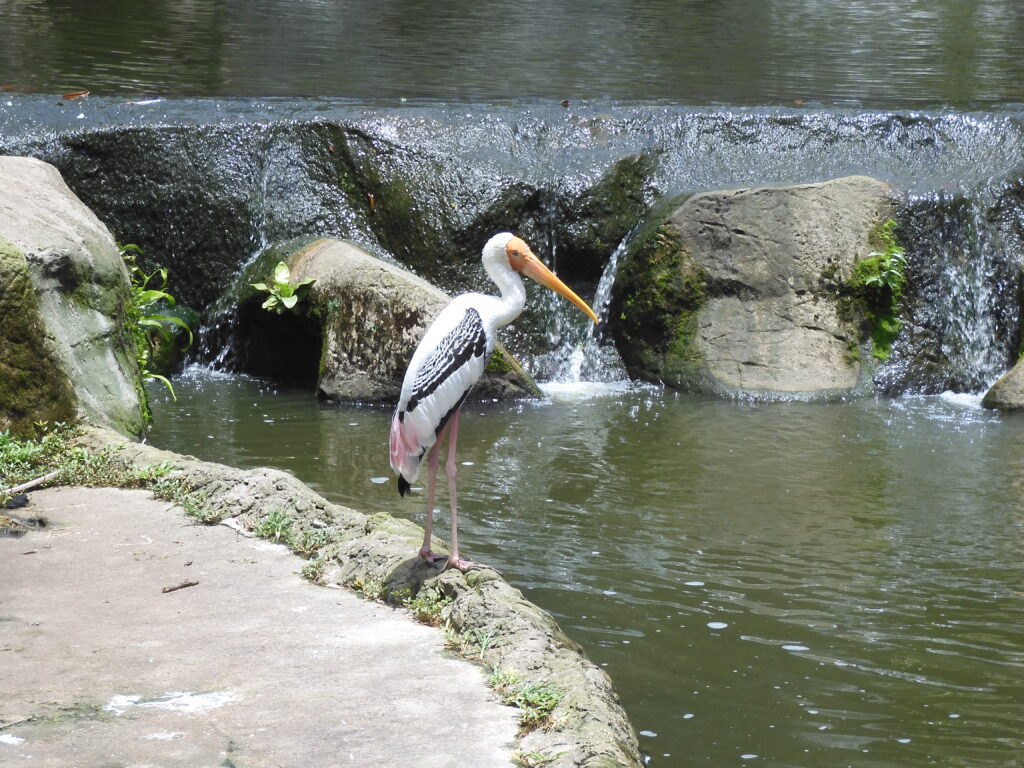
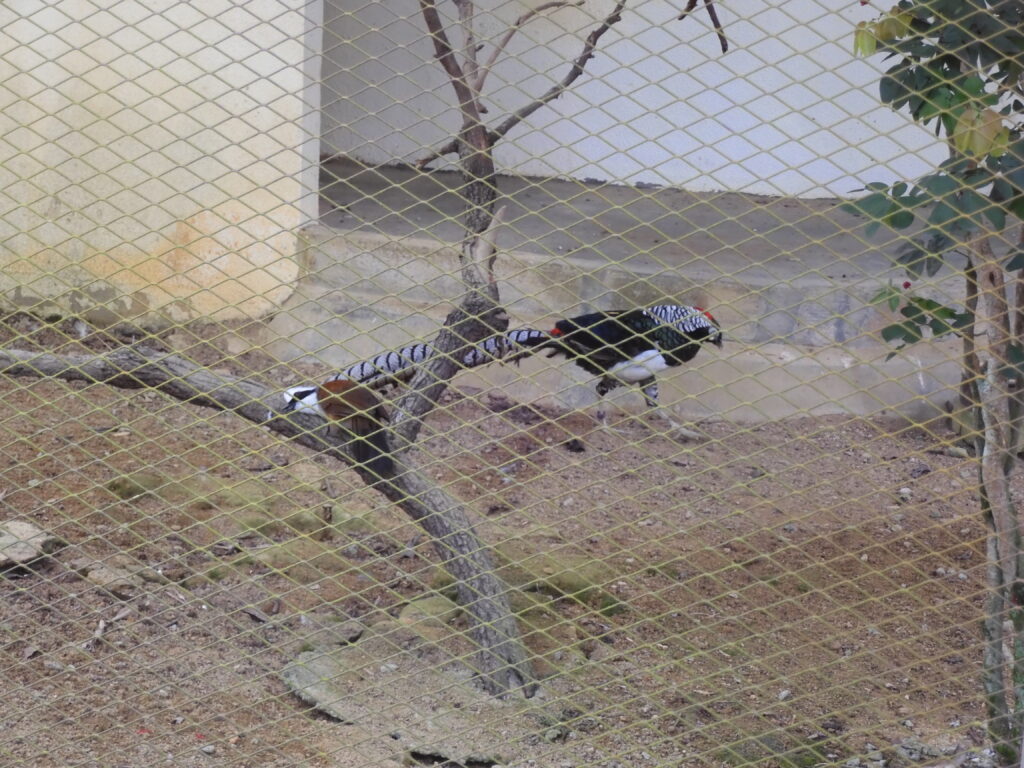

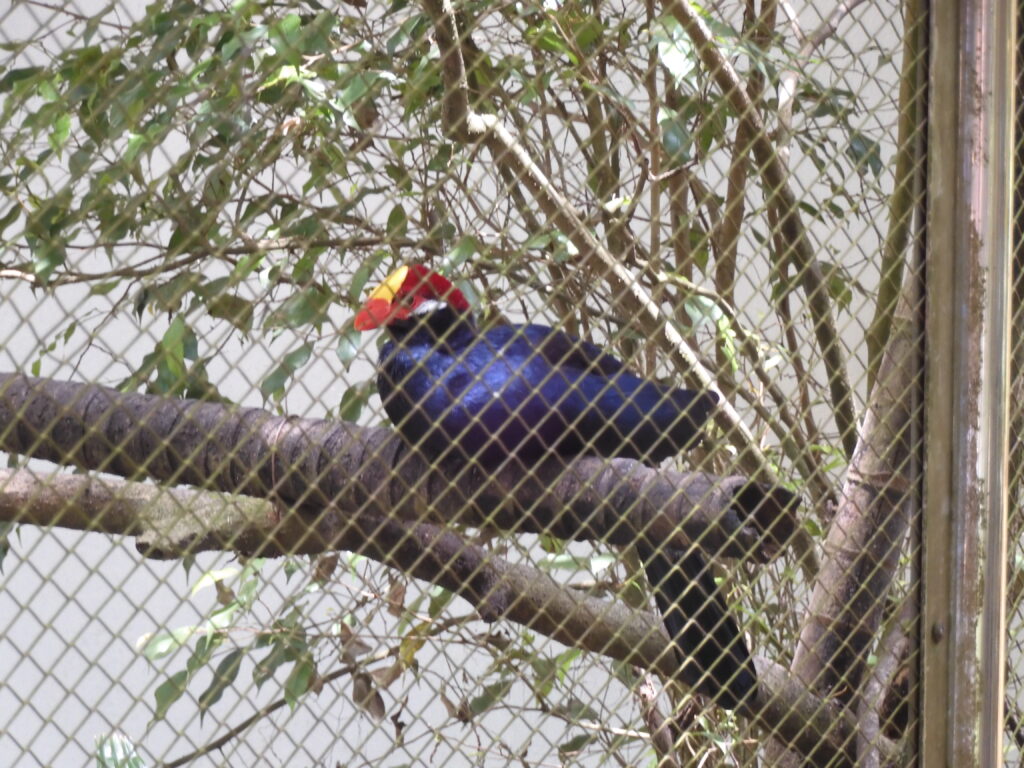
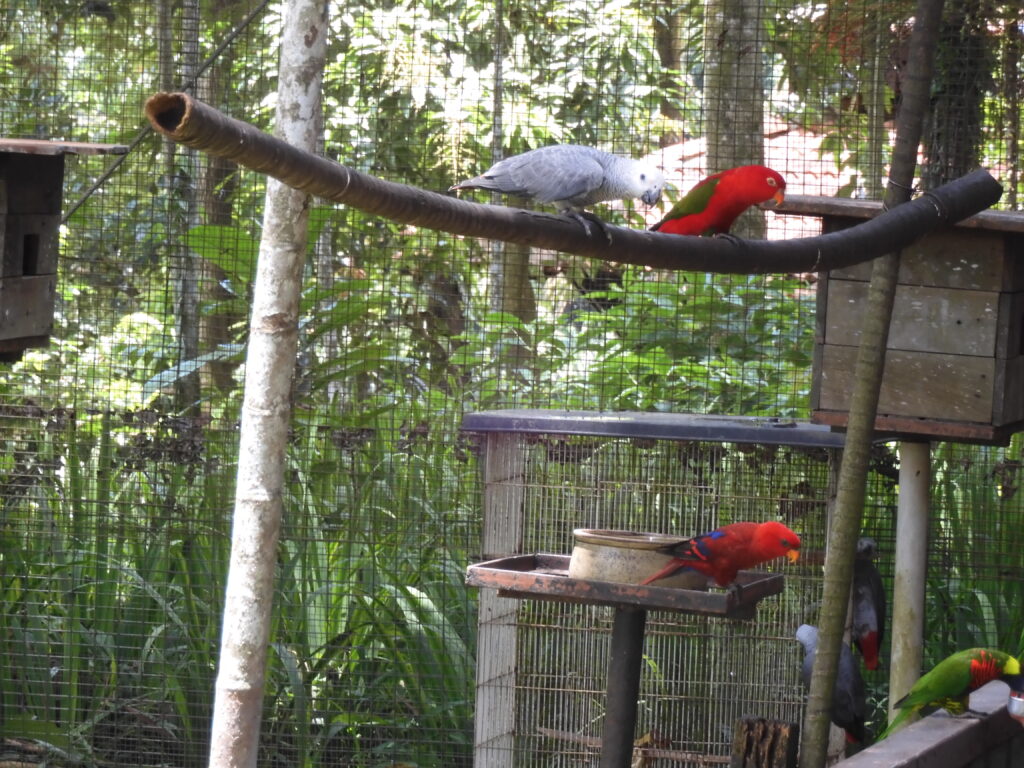
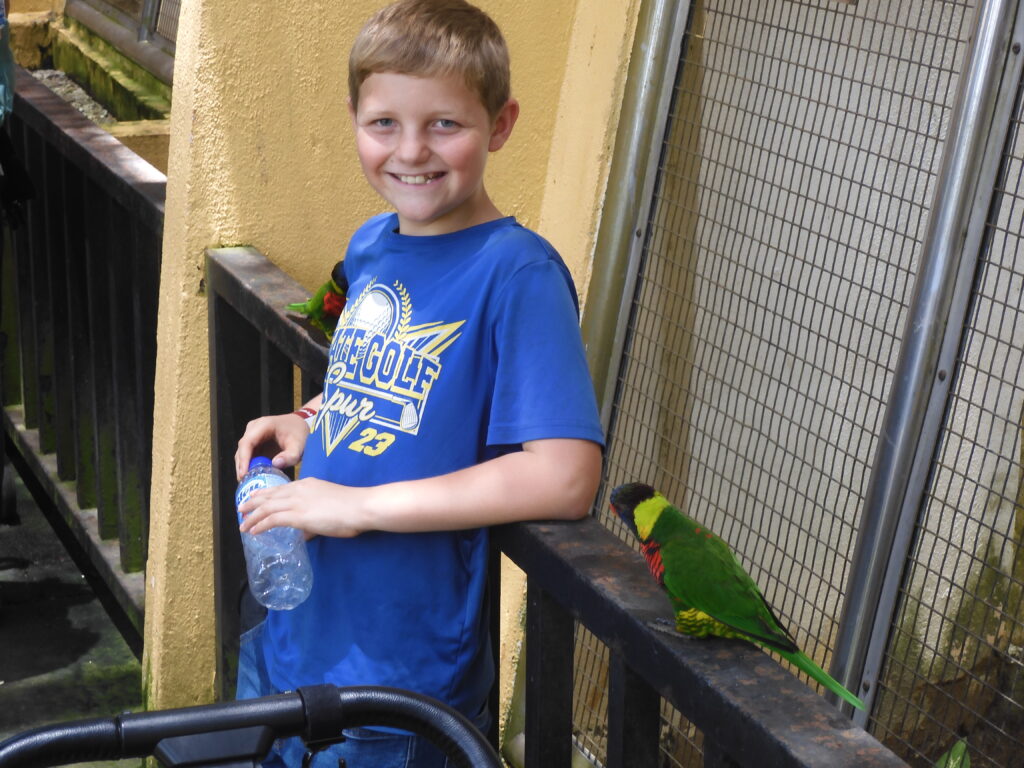

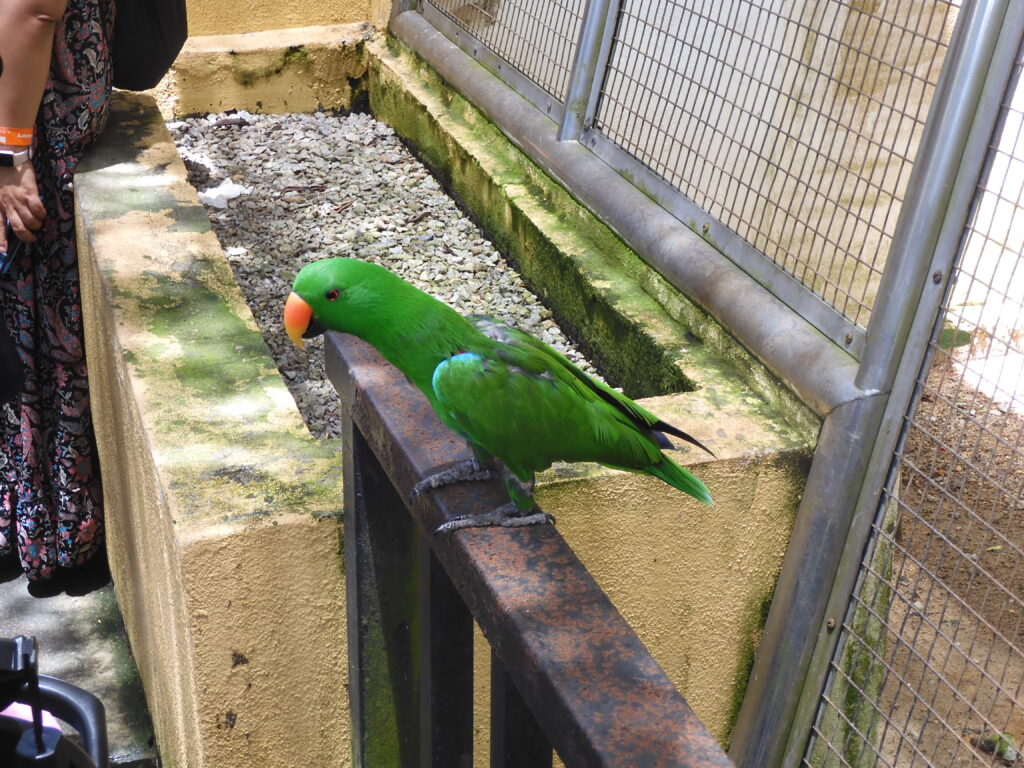

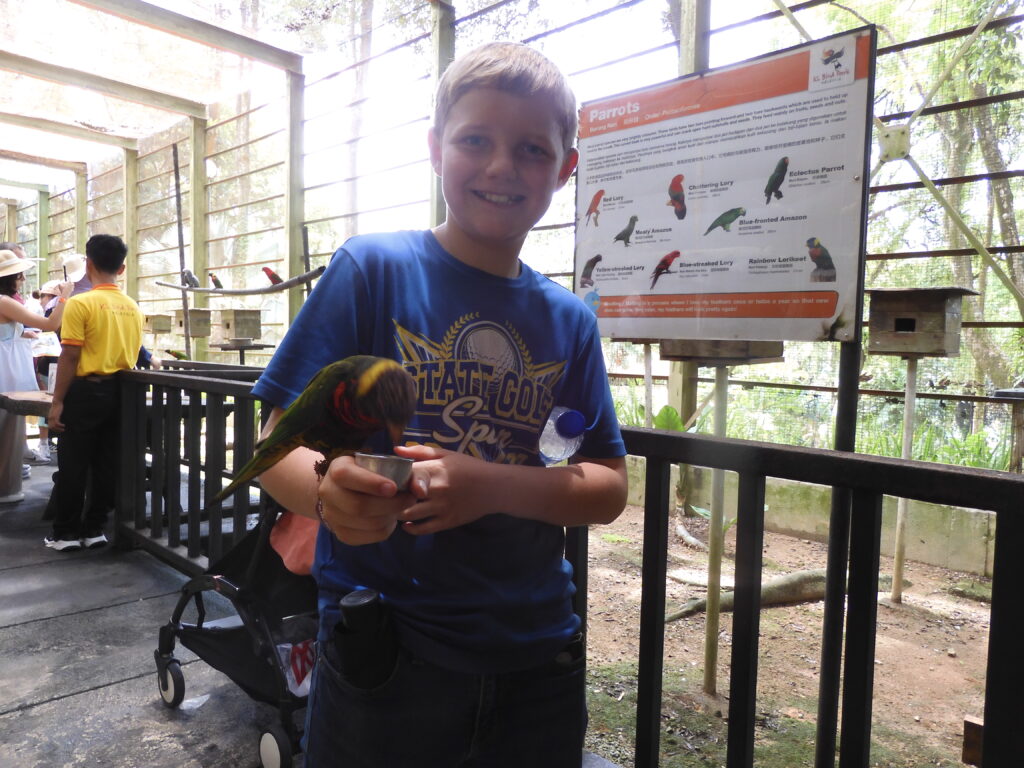
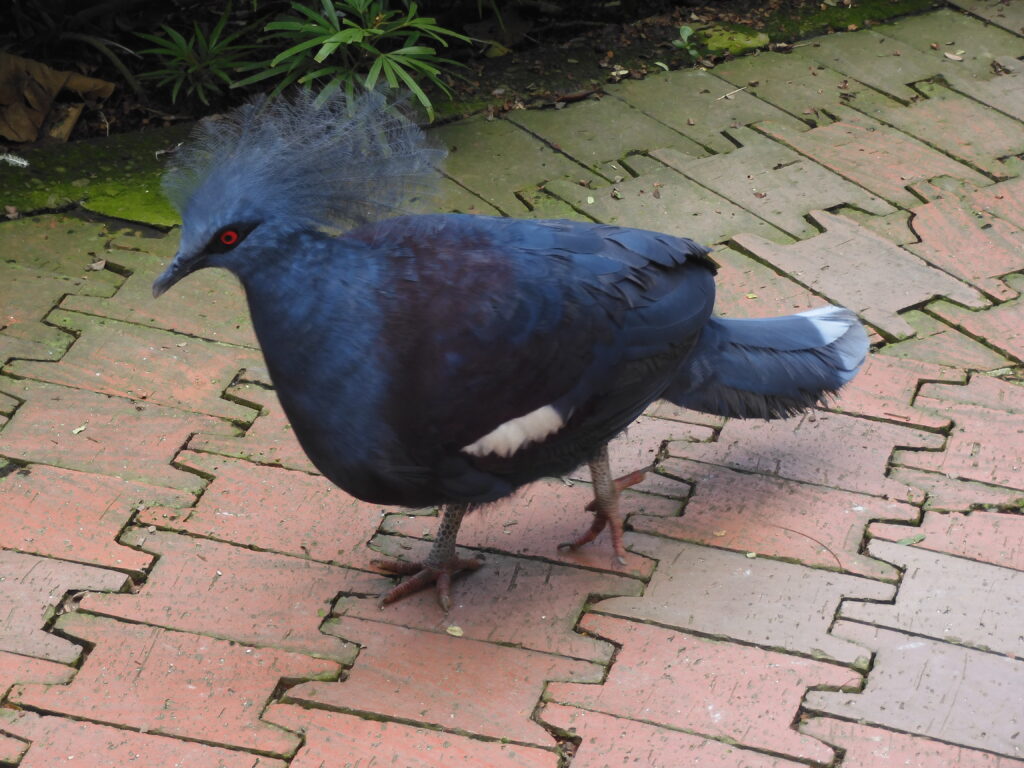
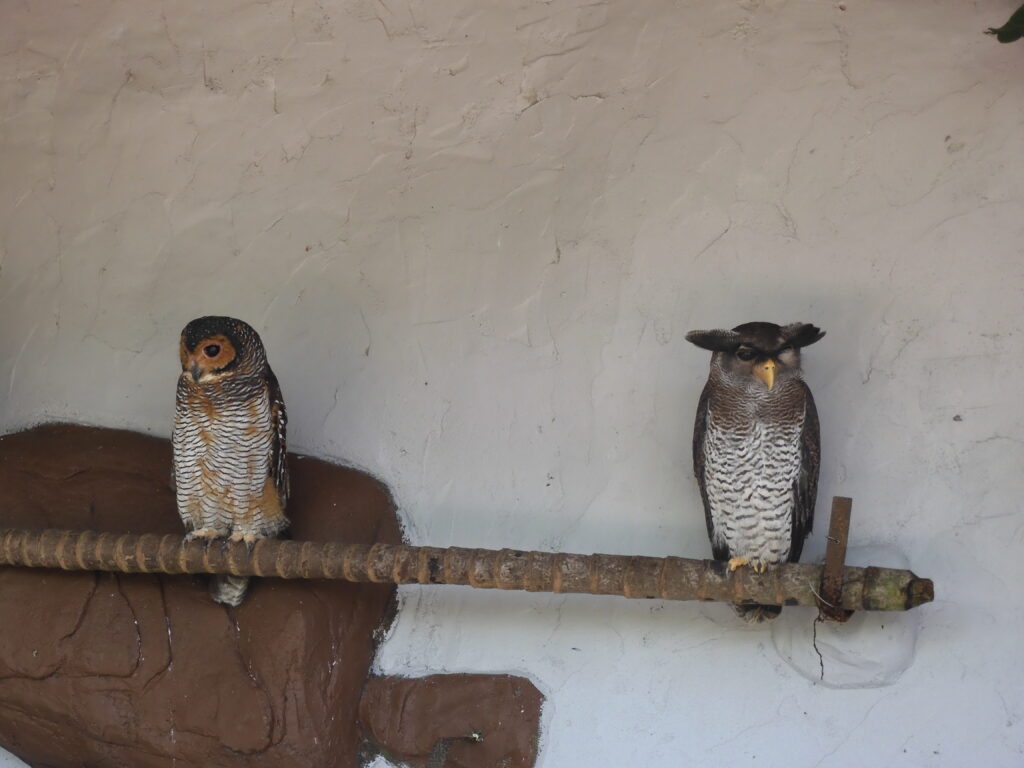
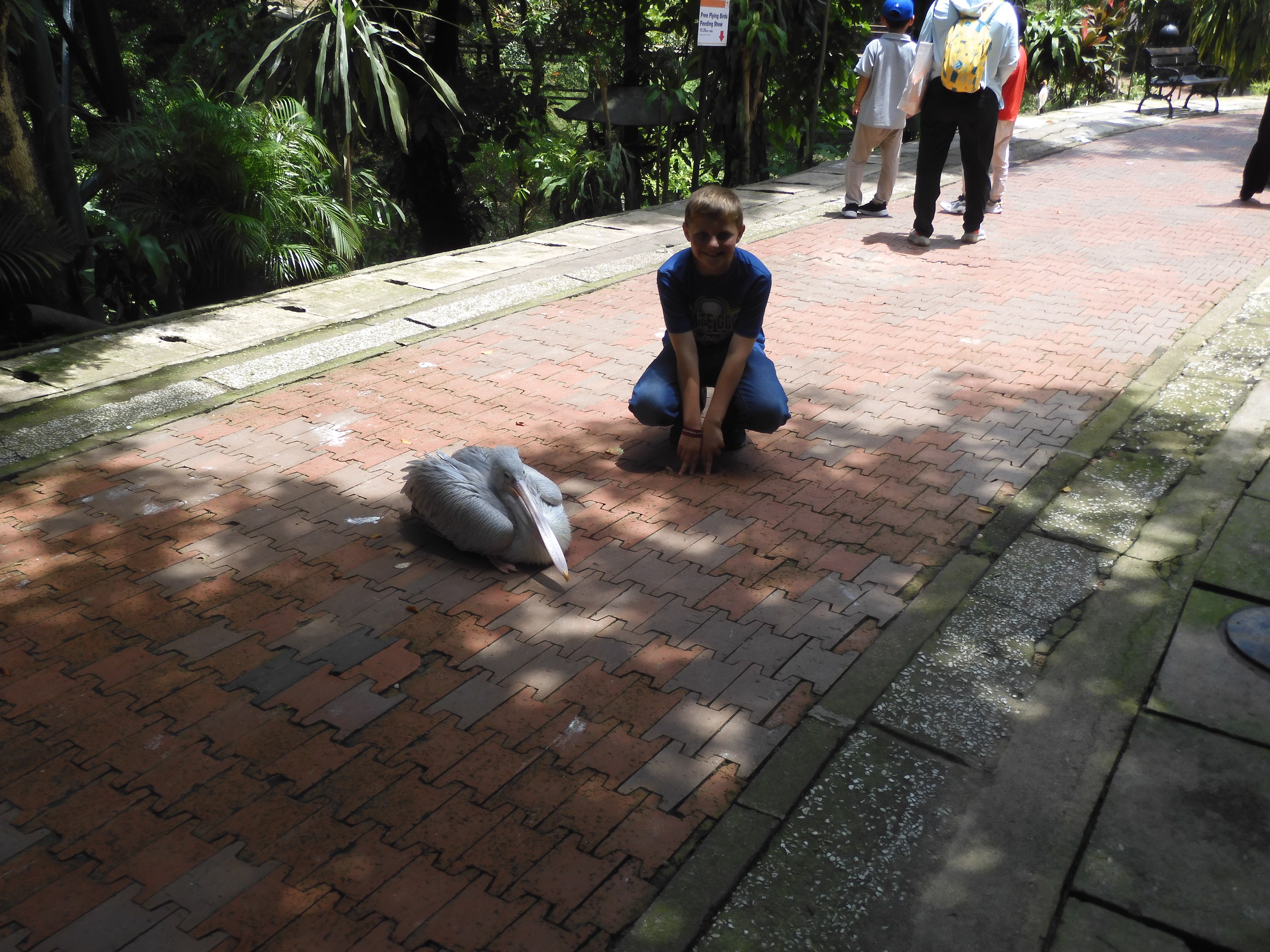
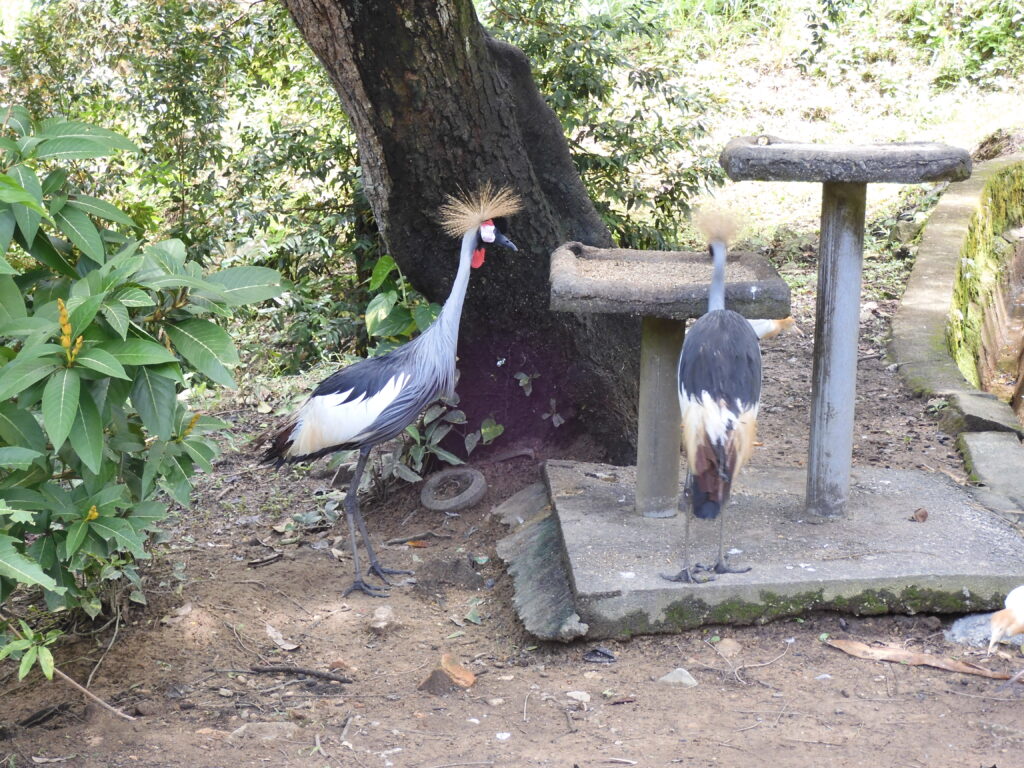

Postscript: Poverty in Kuala Lumpur
Poverty was not as apparent in Kuala Lumpur as it had been in the parts of India and Nepal we visited. It was there, though. Poverty can take different forms. We did occasionally see a person sleeping on a street or in a work truck. But one of the most peculiar experiences I had in Kuala Lumpur was following the story of a 48 year old female Indian tourist. She had been walking along one morning – while we were in Kuala Lumpur (August 23, 2024) – when the ground just opened up beneath her and swallowed her up. She plummeted into a 25 foot deep sinkhole. Another man sitting nearby had fallen in as well, but had been able to claw himself out.
Apparently, the numerous sewage lines, water delivery pipes, underground transportation, subsurface maintenance, and other subterranean features were not planned well enough with the local geology to avoid the occasional appearance of one of these massive sinkholes. The ladies at church were discussing the same thing on Sunday. This has apparently happened before sporadically in Kuala Lumpur. One local news site had somehow created a map estimating the likelihood of sinkholes developing in different Kuala Lumpur neighborhoods. My sisters were checking their own residential locations with great interest.
As for the Indian woman, as of this writing some twelve days after she disappeared, searchers have found only her slippers. I was amazed by the cautious nature of the search. Rescuers did not actually enter the hole for several days, and when they did, they turned back very quickly upon reaching an obstacle. Malaysian officials, including the mayor of Kuala Lumpur say there are safety concerns. Really? No kidding? No one needs to tell the Indian woman’s family that. In fact, another sinkhole opened up a few days later a couple of hundred feet away. Is that not what rescuers sign up for, and are paid to do – to enter unsafe situations to rescue people?
I suppose substandard training and equipment probably make the whole affair even less safe for the rescuers, in their defense. This is just one area where poverty impacts safety and quality of life. The mayor has made several statements attempting to reassure the public and tourists that the city as a whole is safe. I am sure that most parts of the city are safe. I would not have been walking the city with my 11 year old son if I thought there was a high probability one or both of us would be swallowed by a random sinkhole. That being said, there is clearly some kind of major infrastructure problem here, and it is not clear that local officials understand the scope of the problem or know what to do about it.
So here is another way poverty obliquely rears its head. The desire for rapid economic development has led to Kuala Lumpur’s emergence as a major city and commercial center. It really is a cosmopolitan metropolis. Some of the worlds largest buildings and some very nice hotels and malls have been built here. But what did they build it on? Poor planning seems to have created a situation where the ground – at least in some places – is not suitable to walk across, let alone erect skyscrapers. Public officials are not forthcoming with information about even this rescue response, let alone the overall safety of the city’s infrastructure. As long as residents and visitors have to wonder – even just in the backs of their minds – whether or not they might suddenly be swallowed up by the city’s bowels, Kuala Lumpur is destined to remain a “poor man’s metropolis.” This is not a fate likely to befall Singapore.
